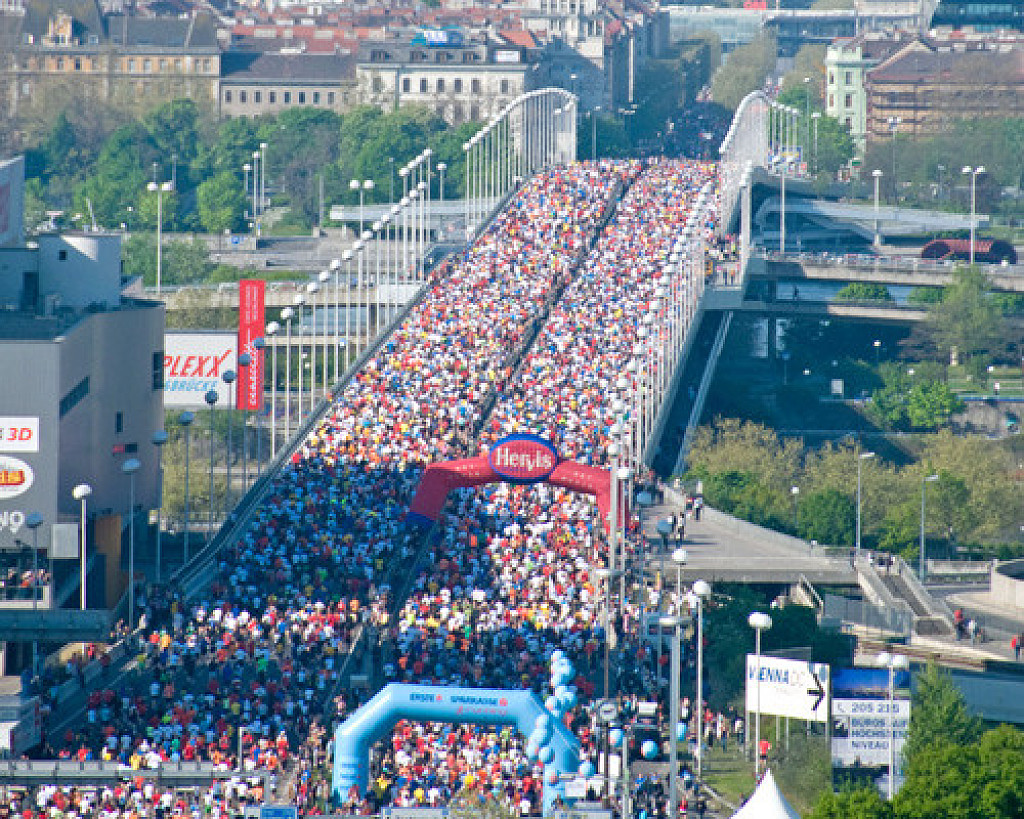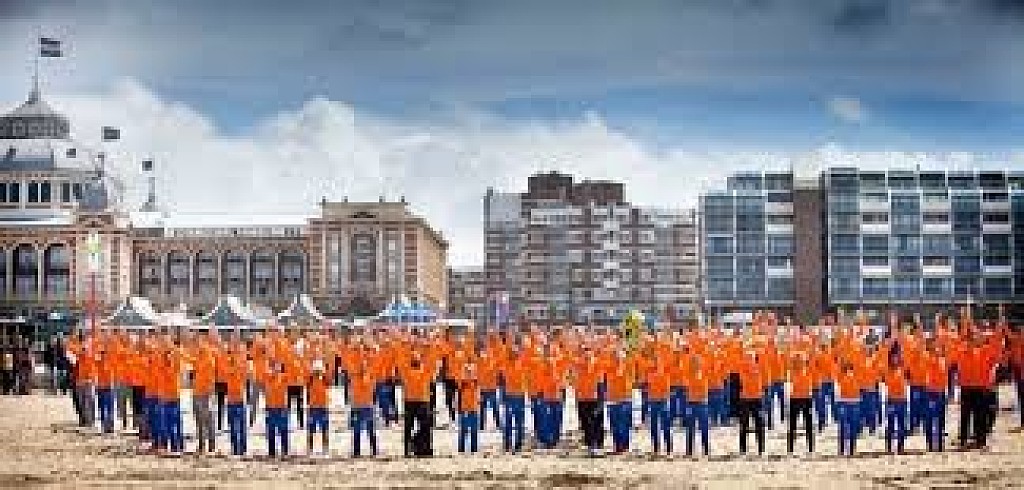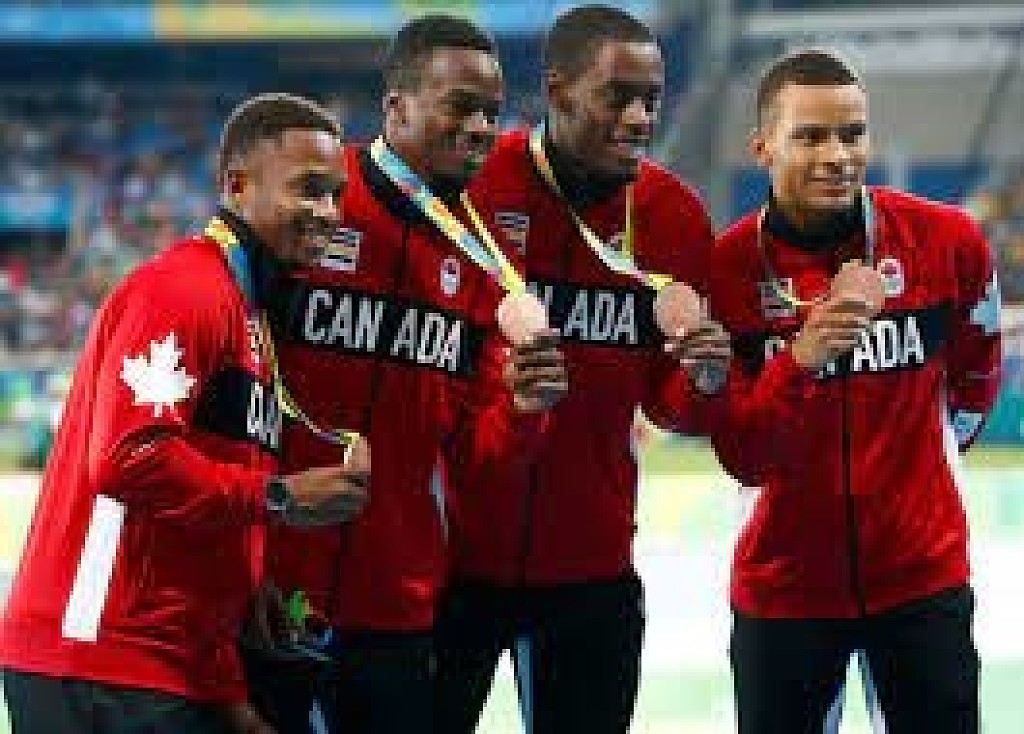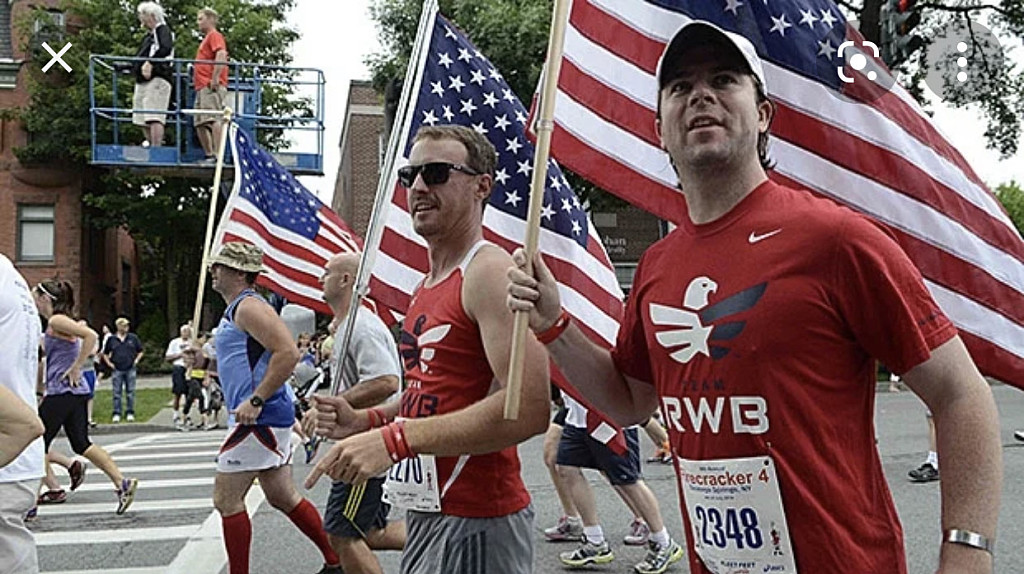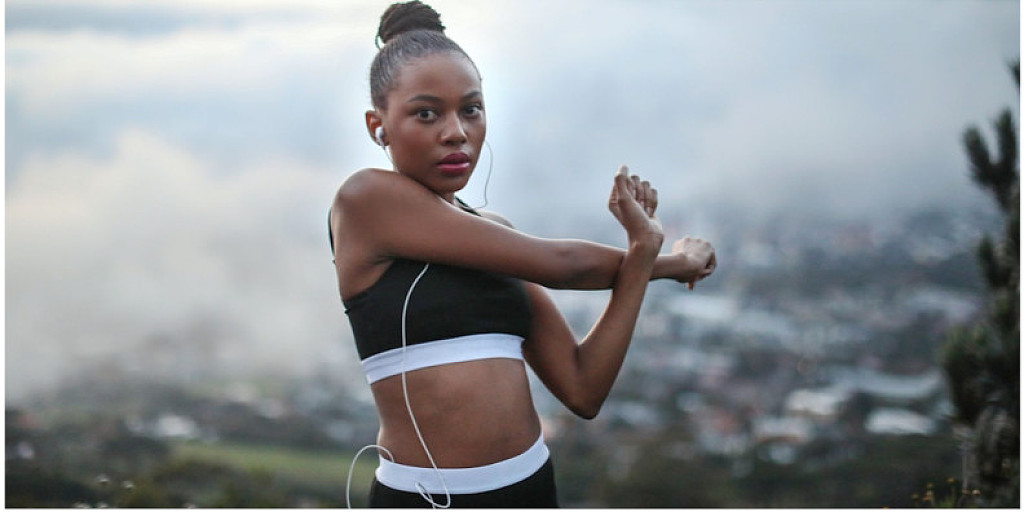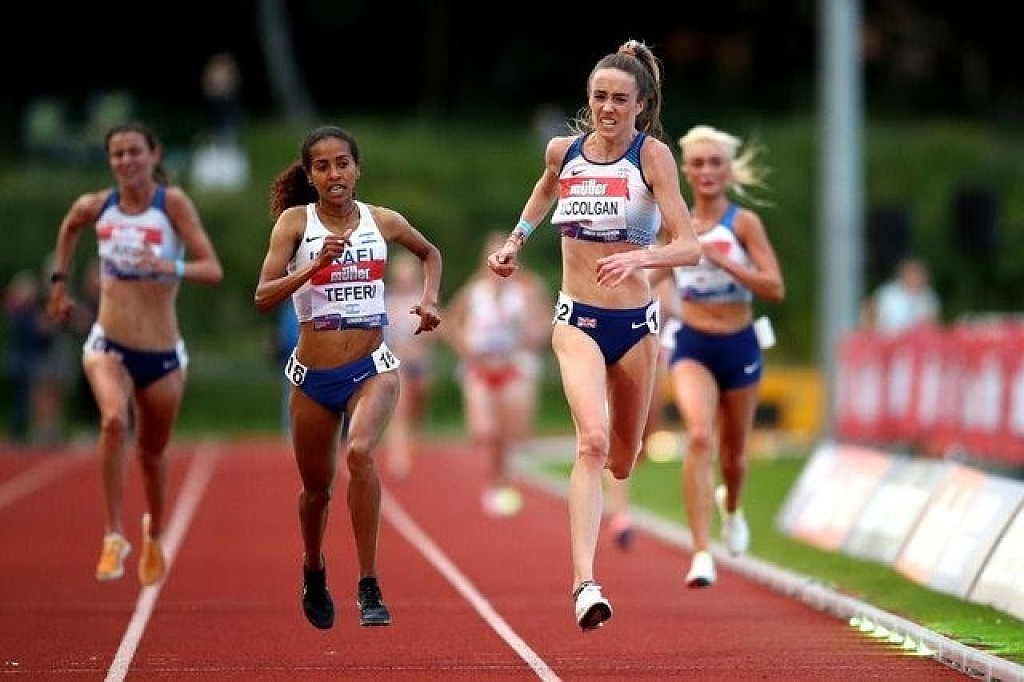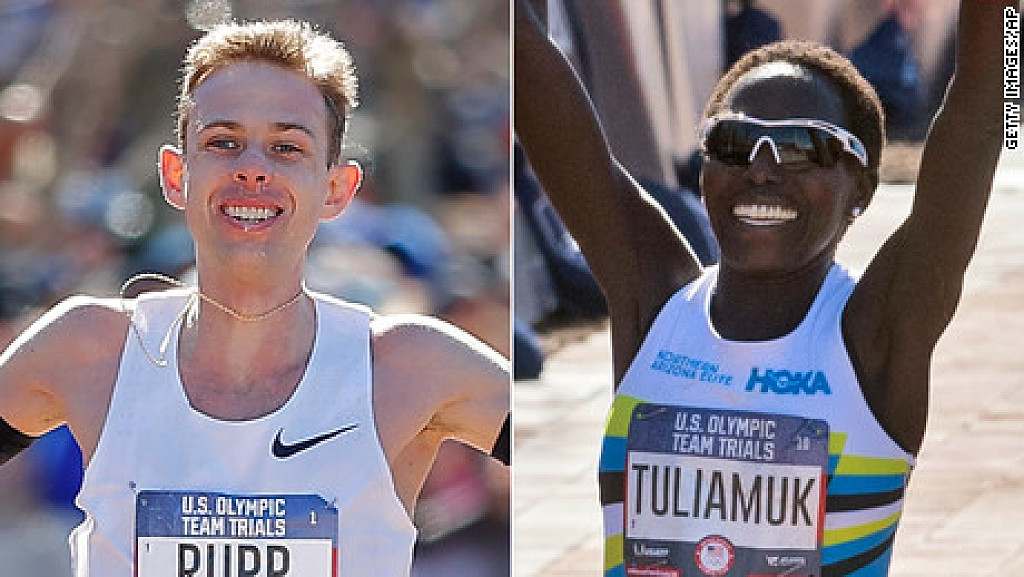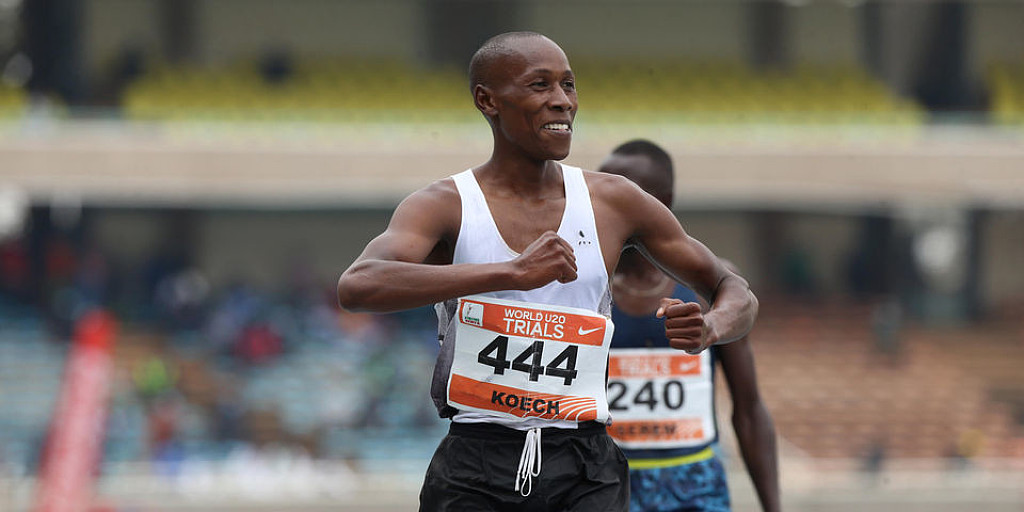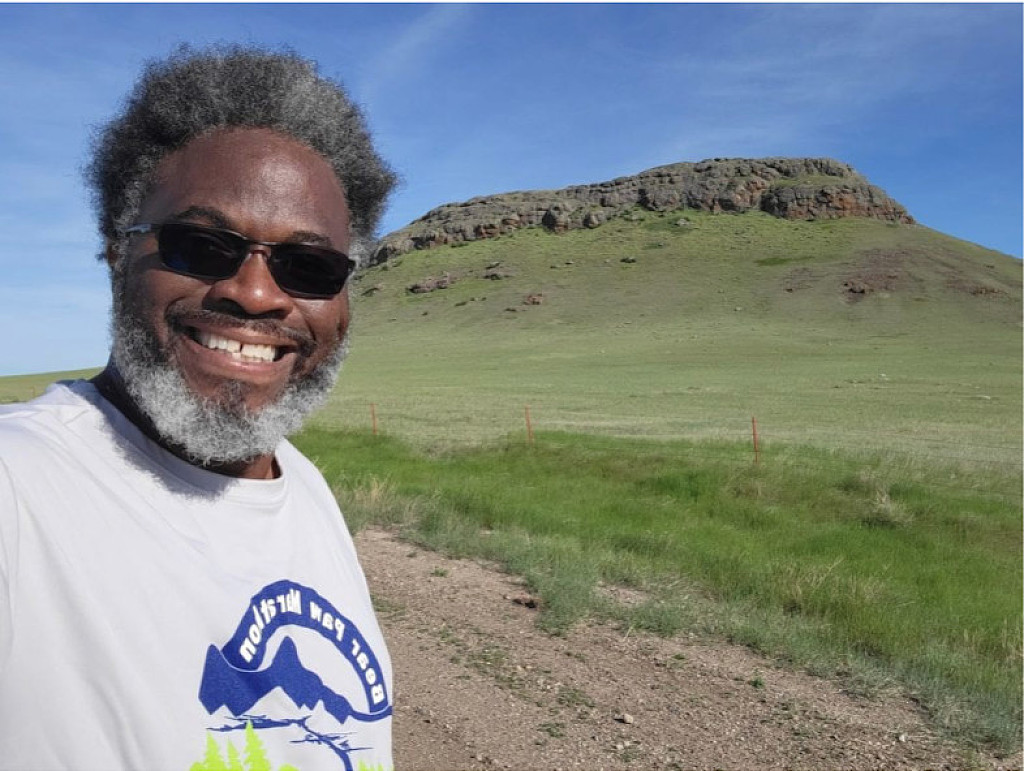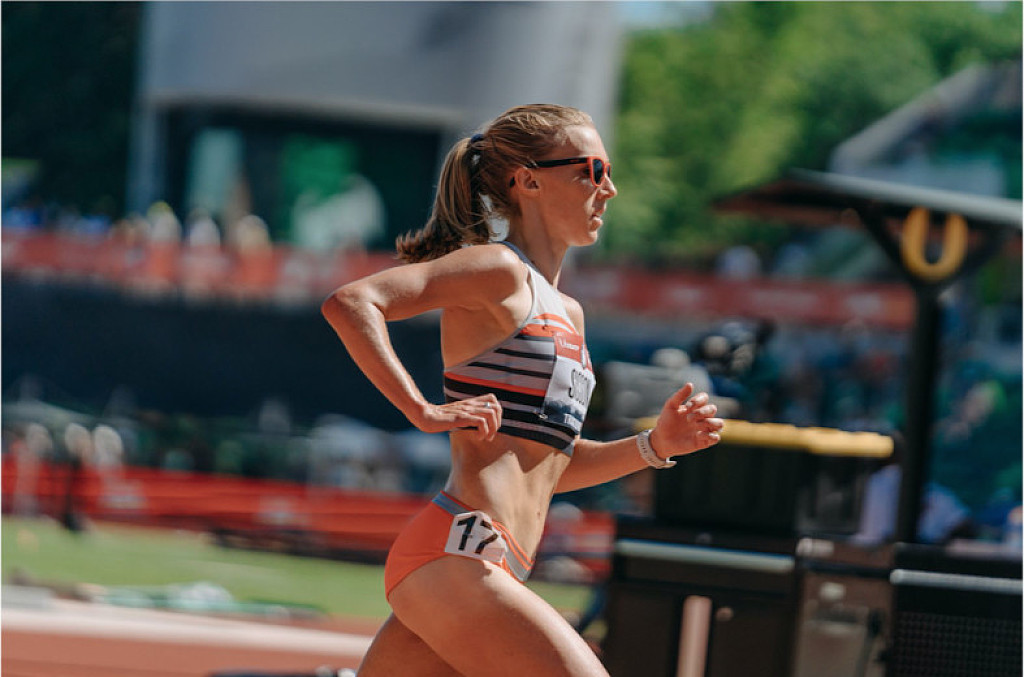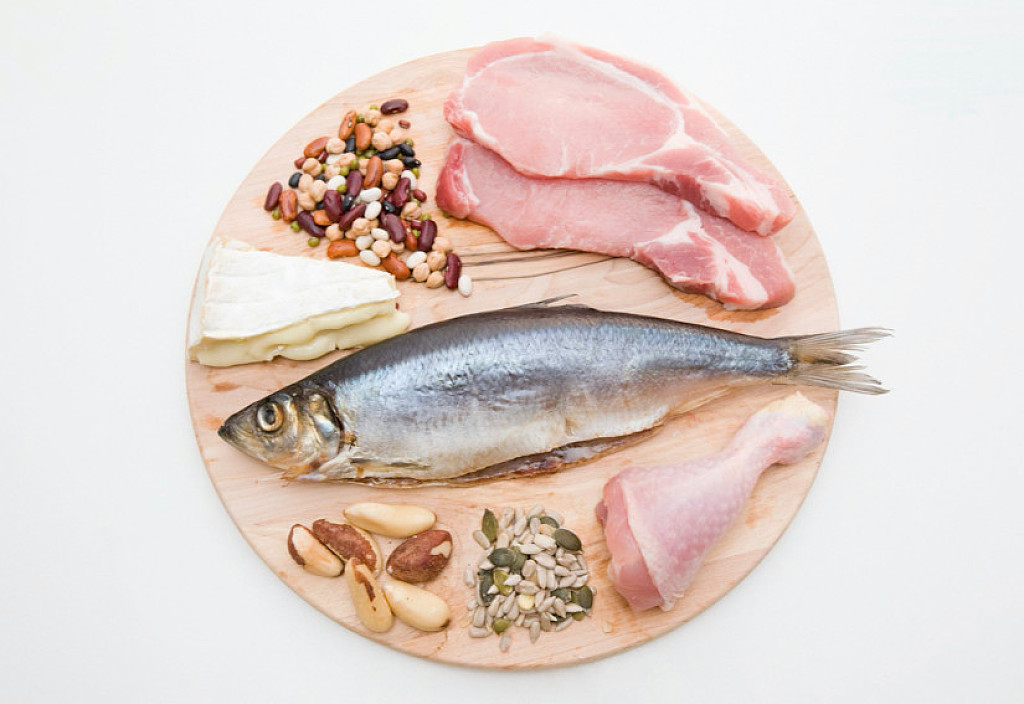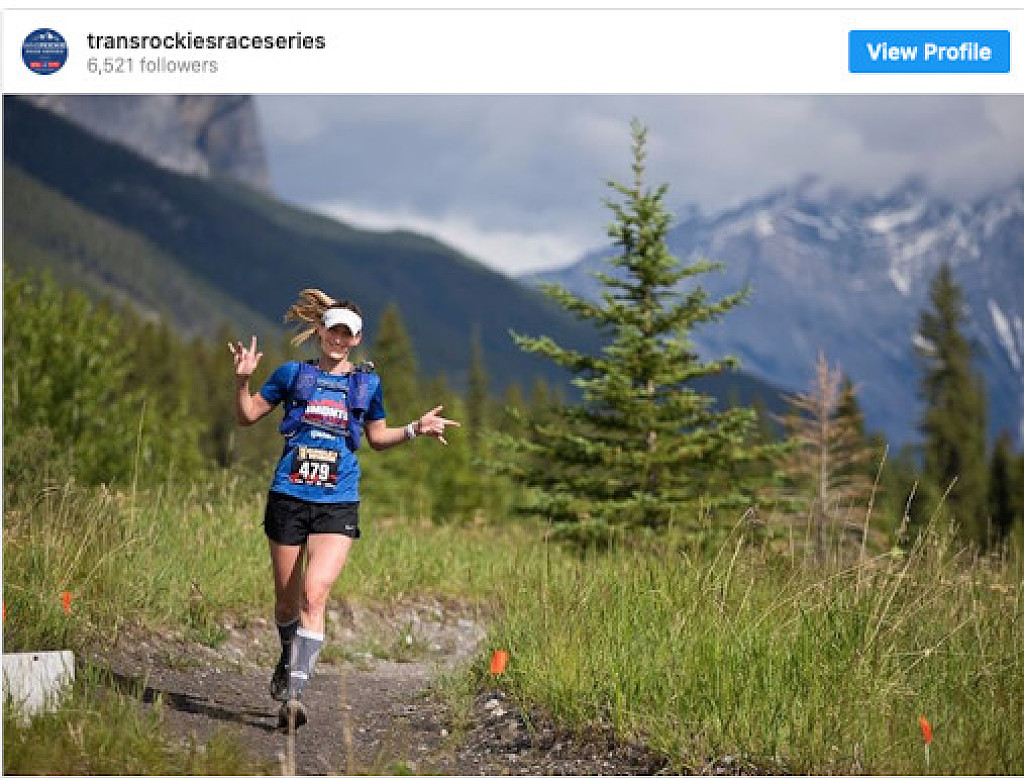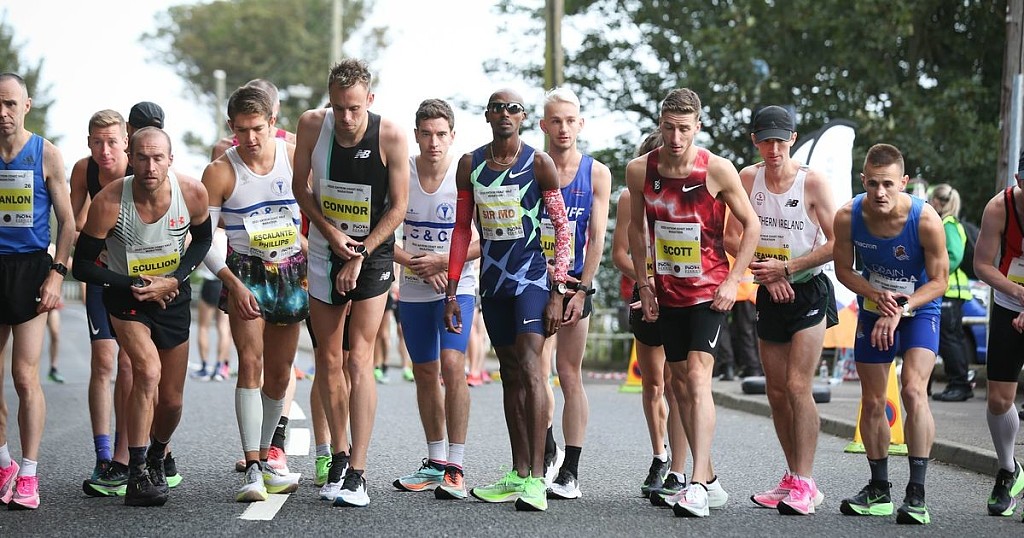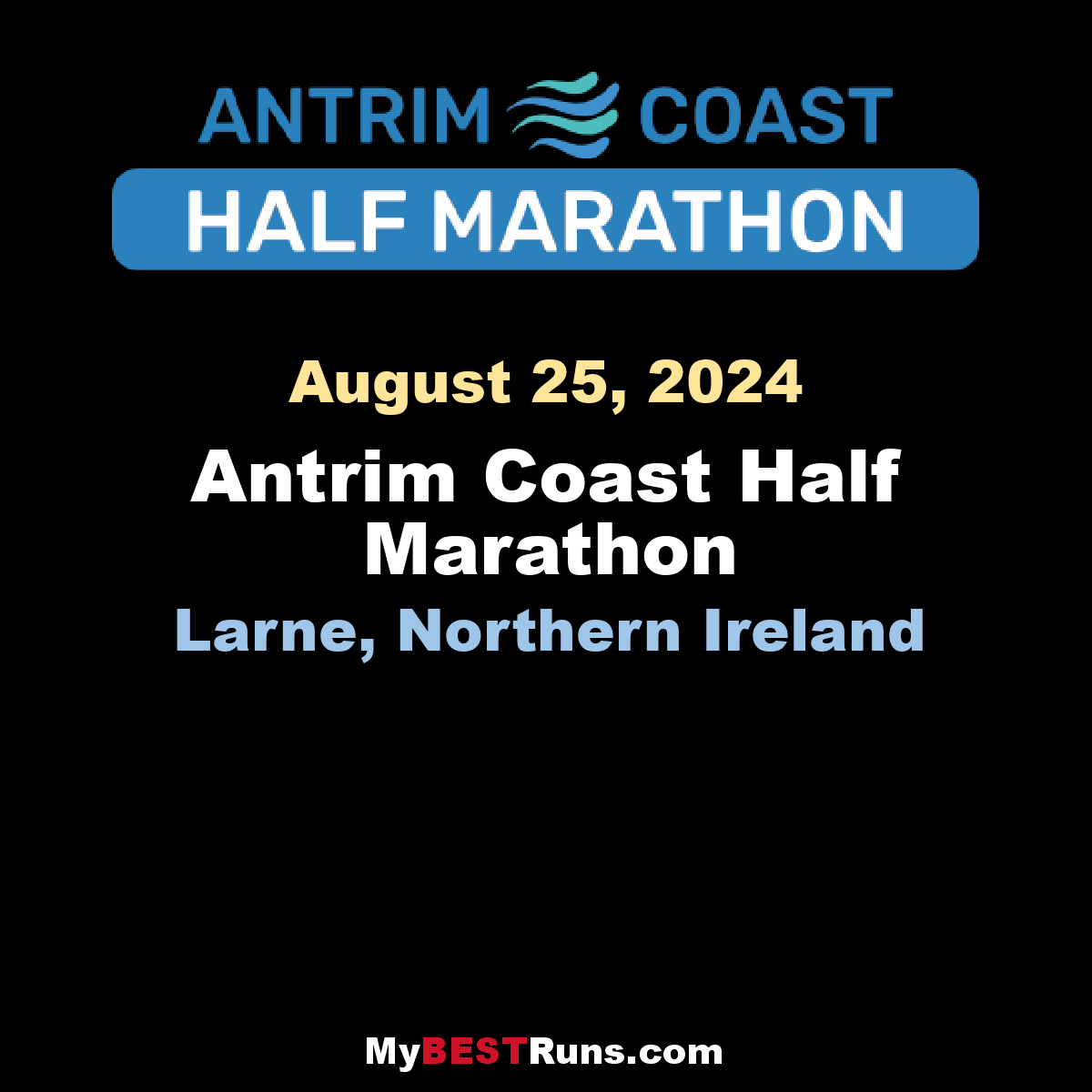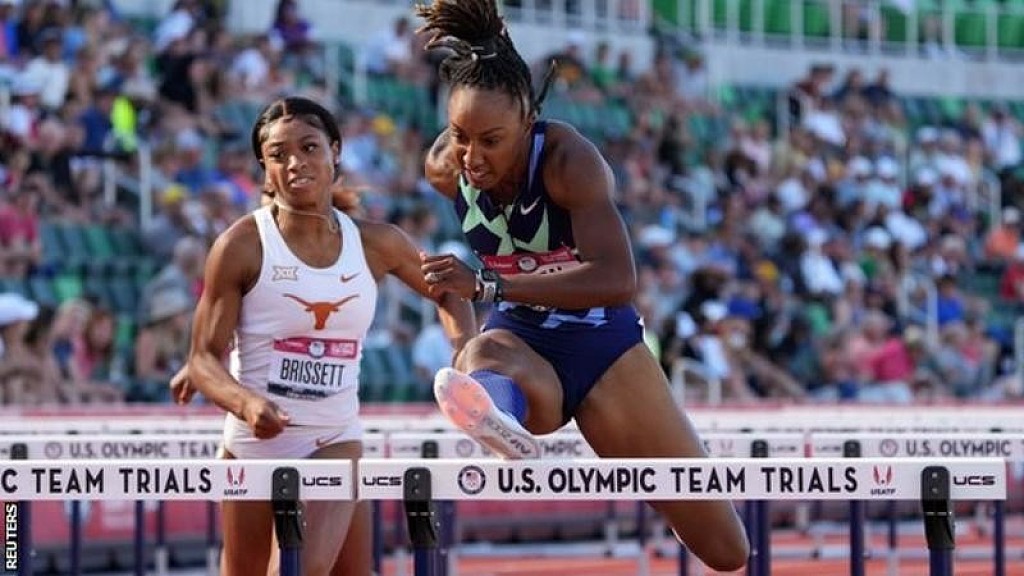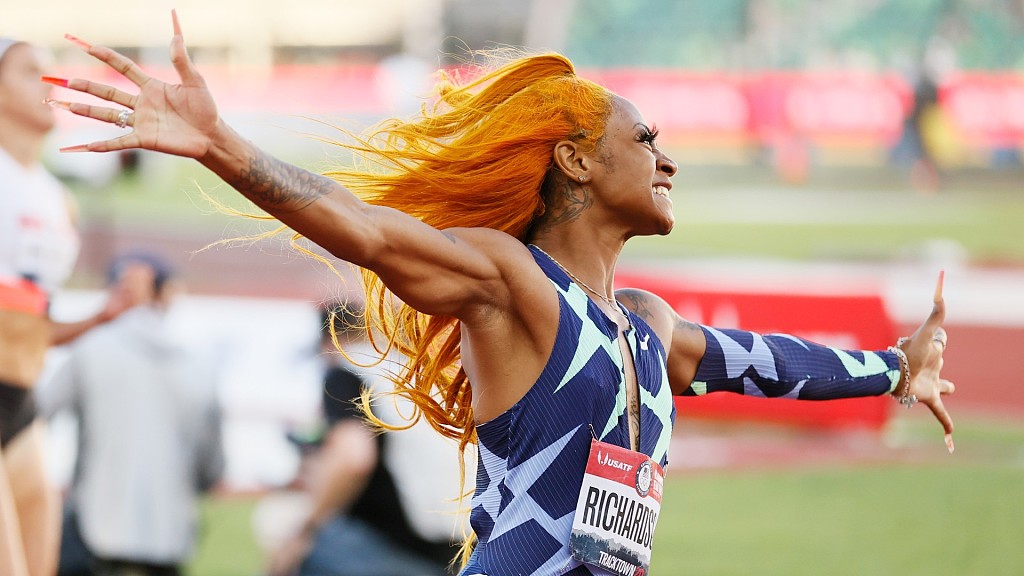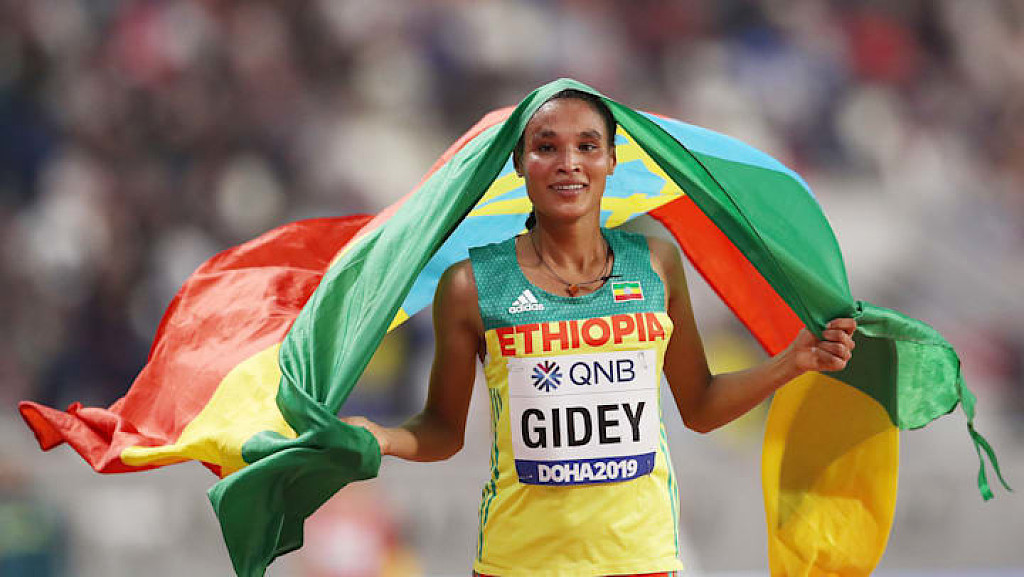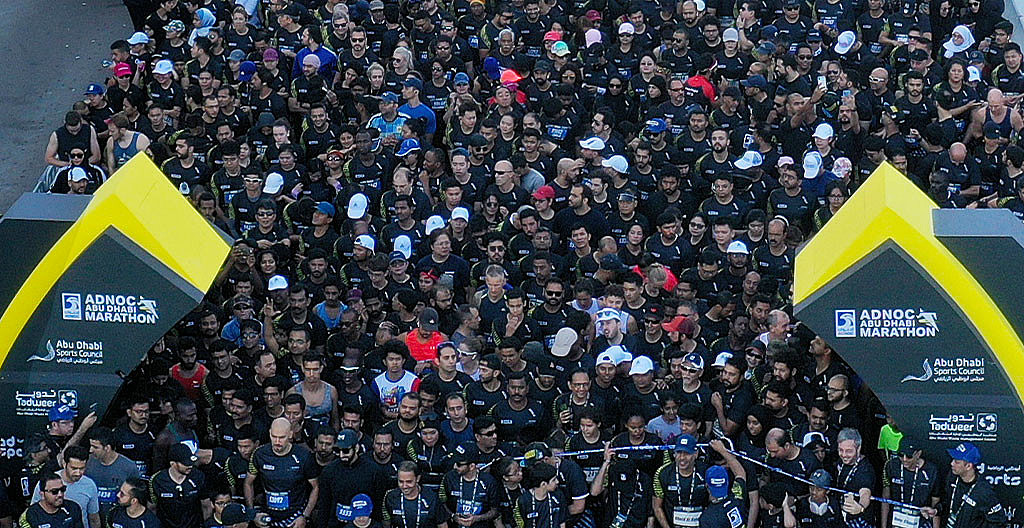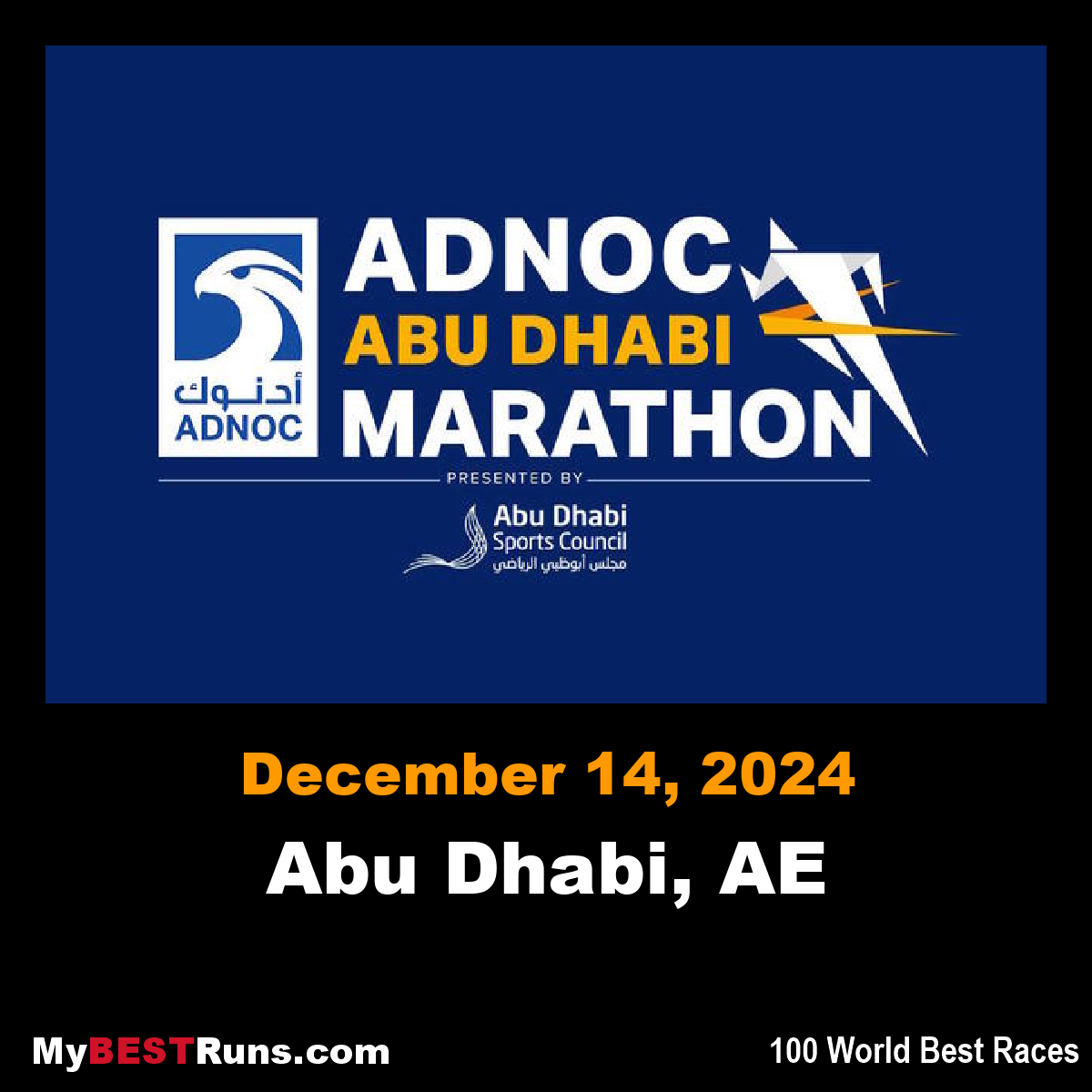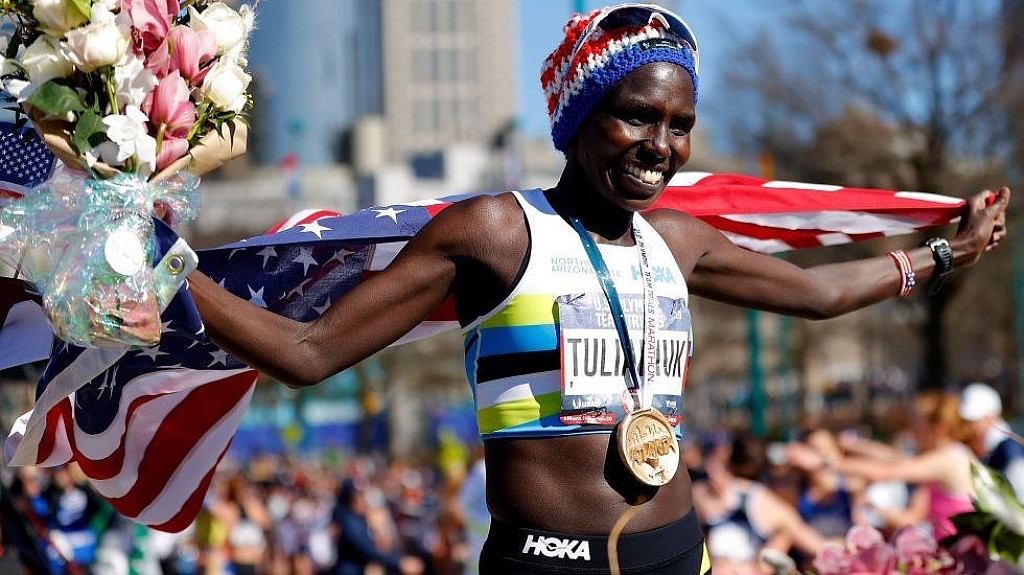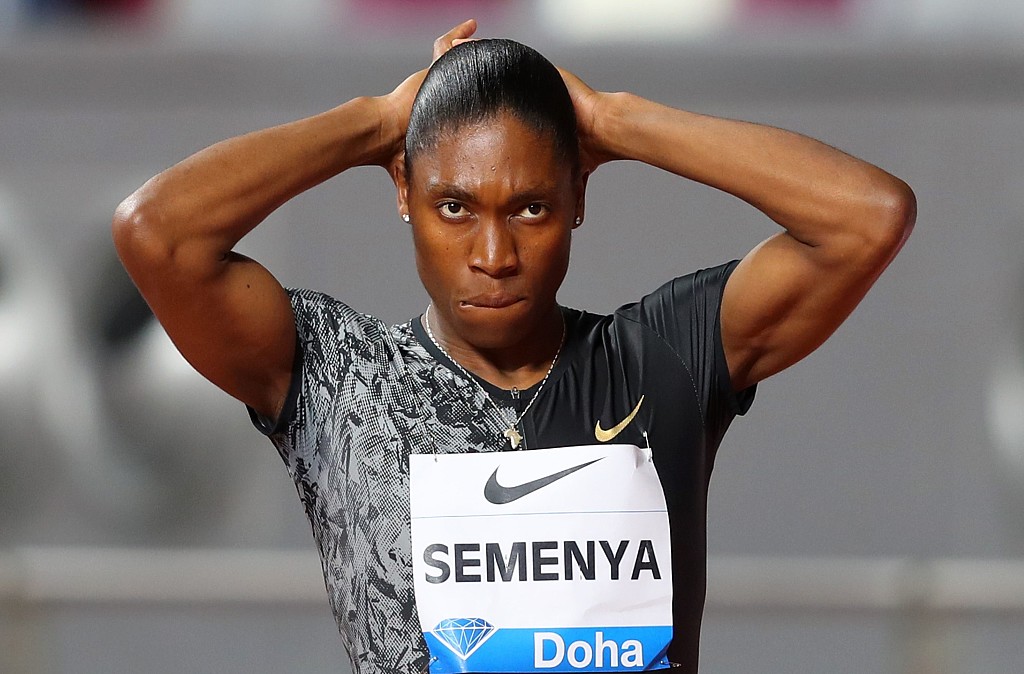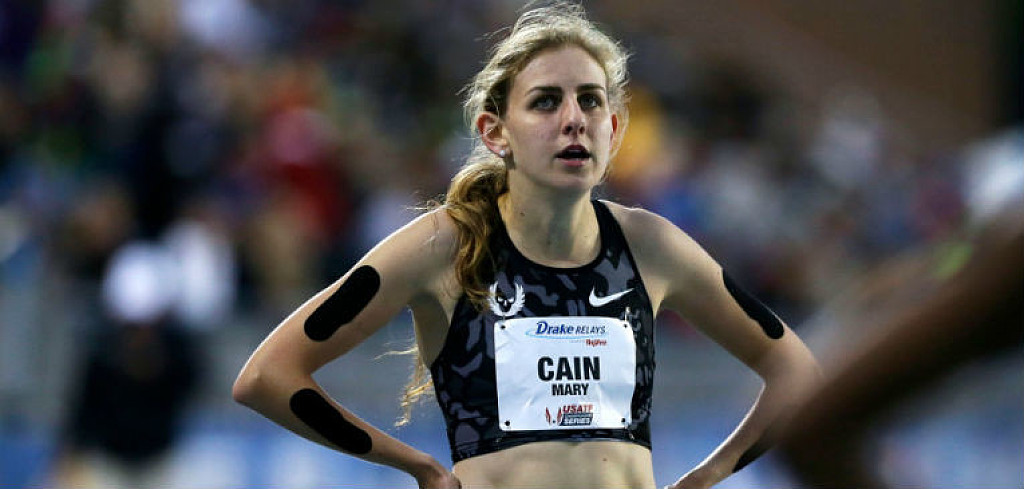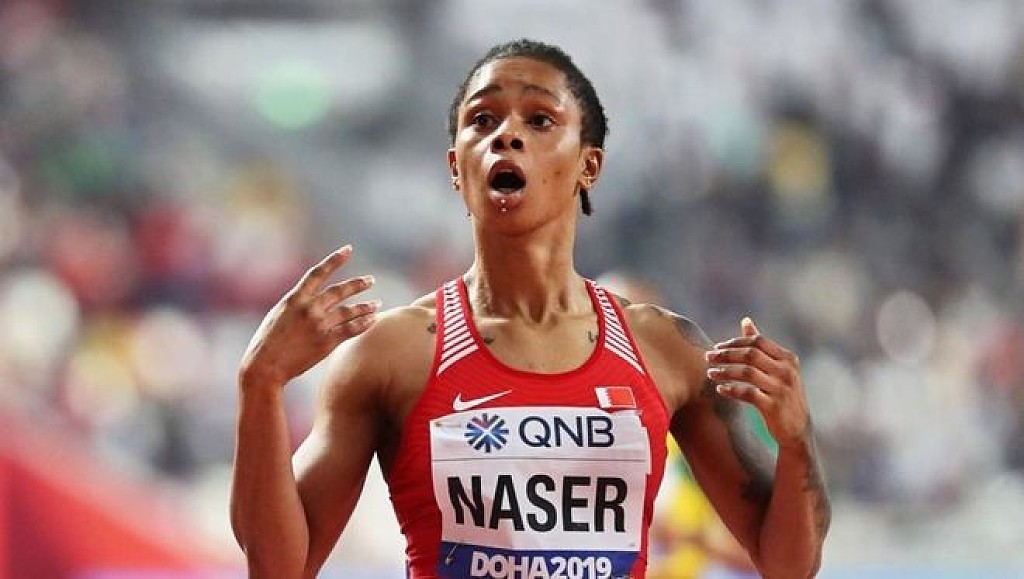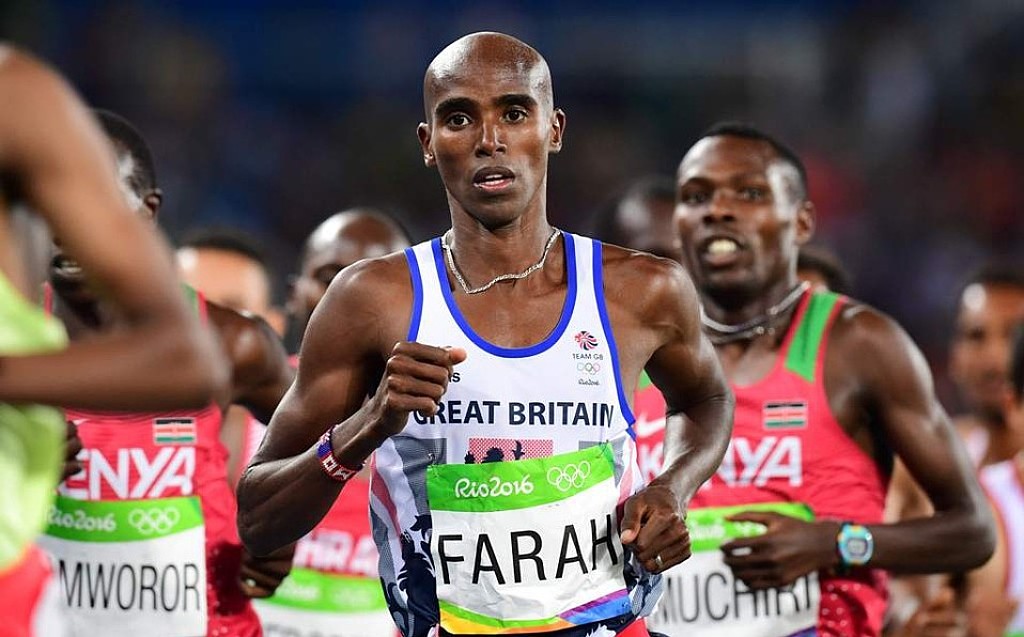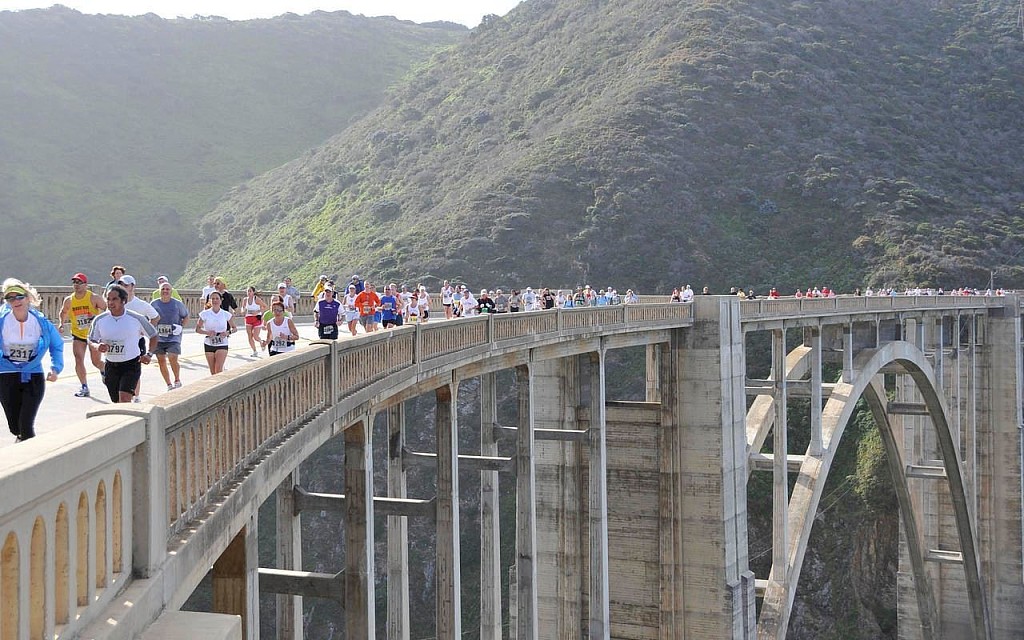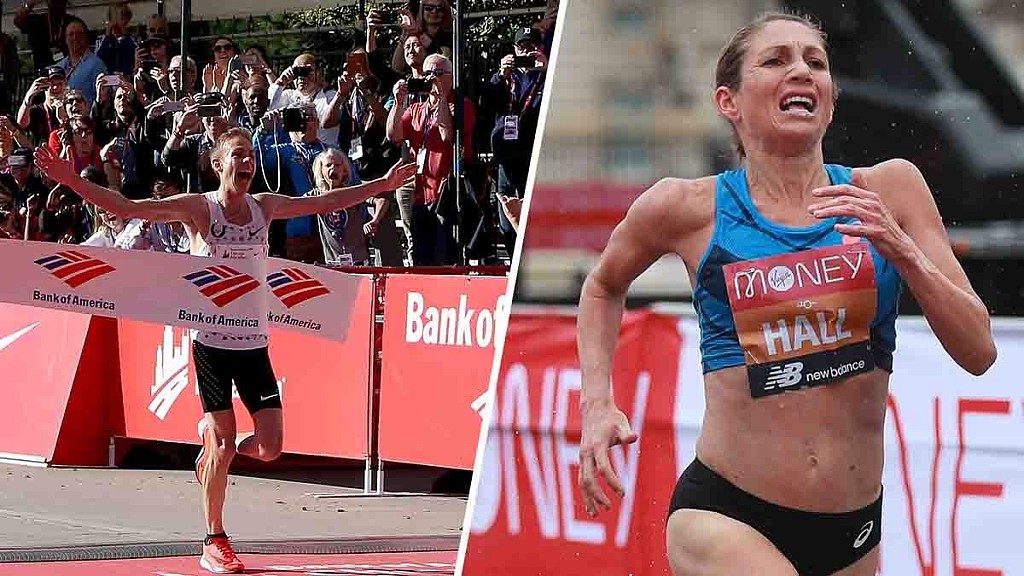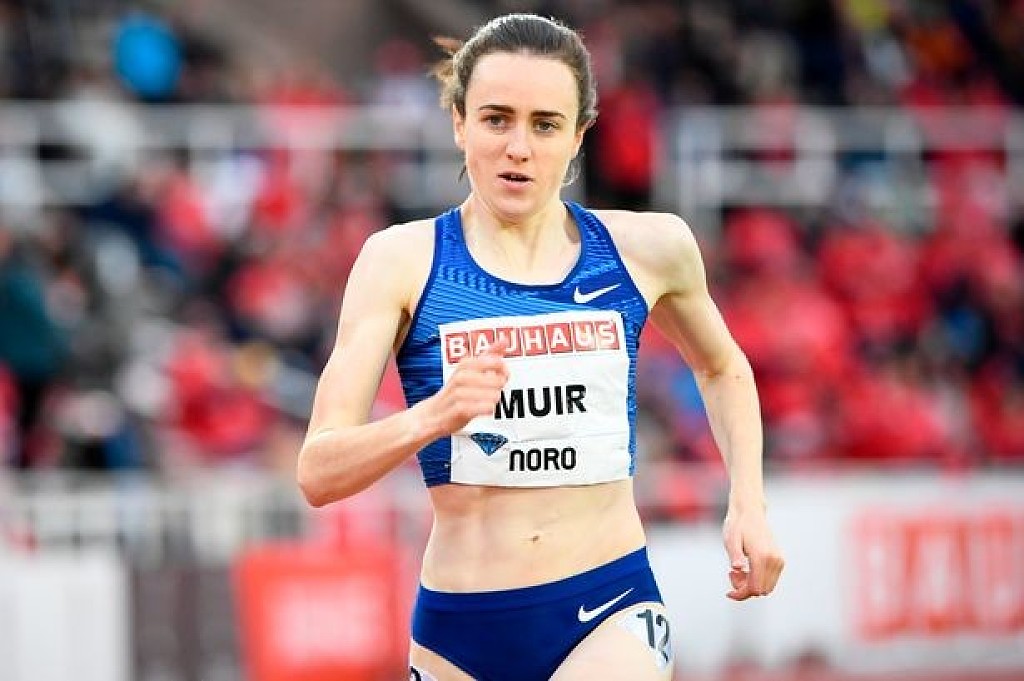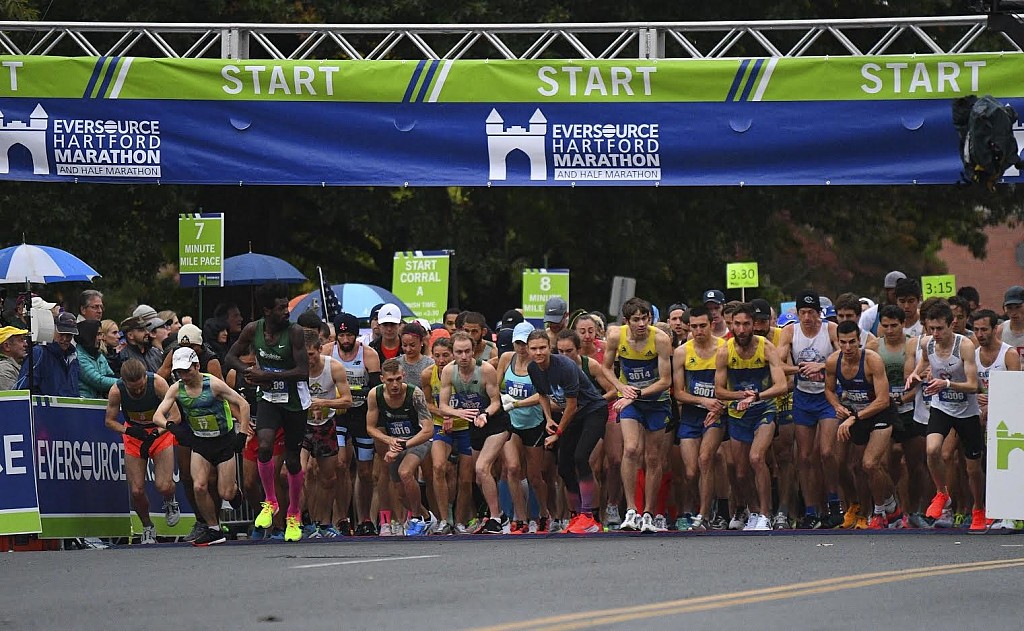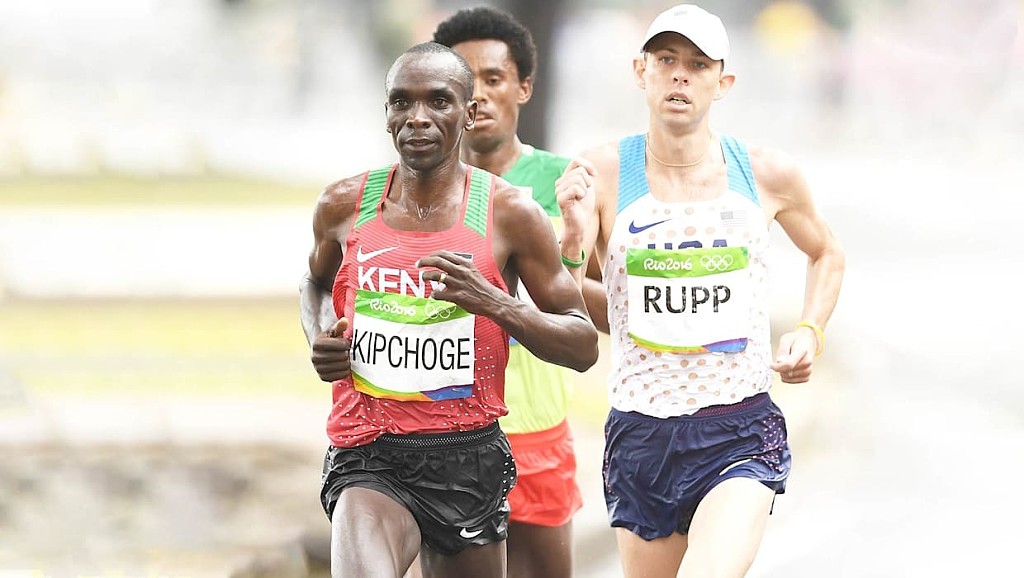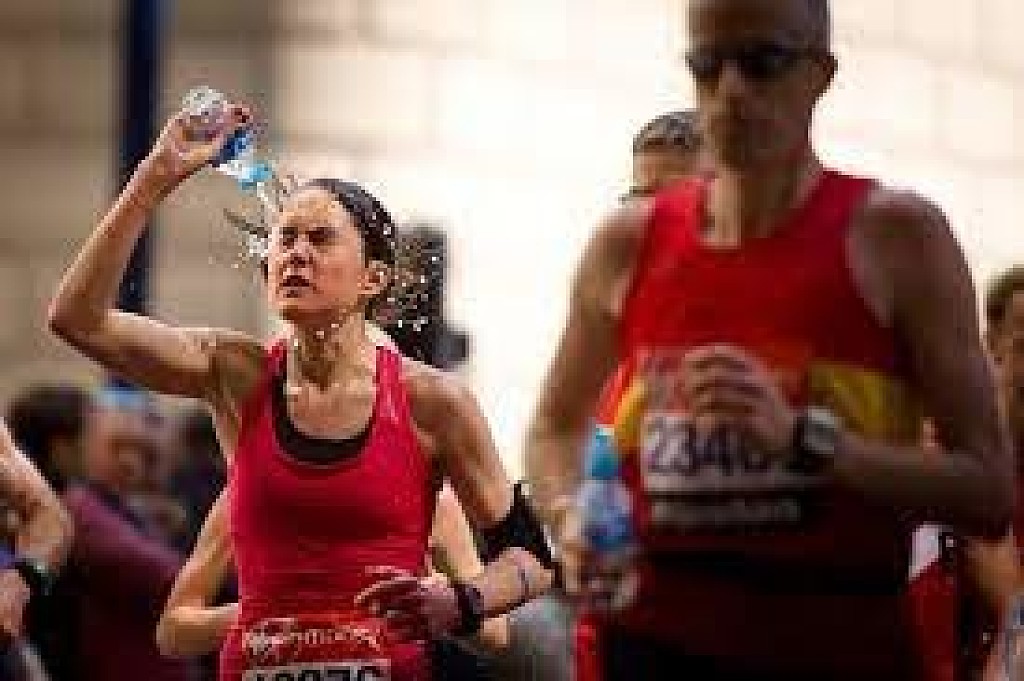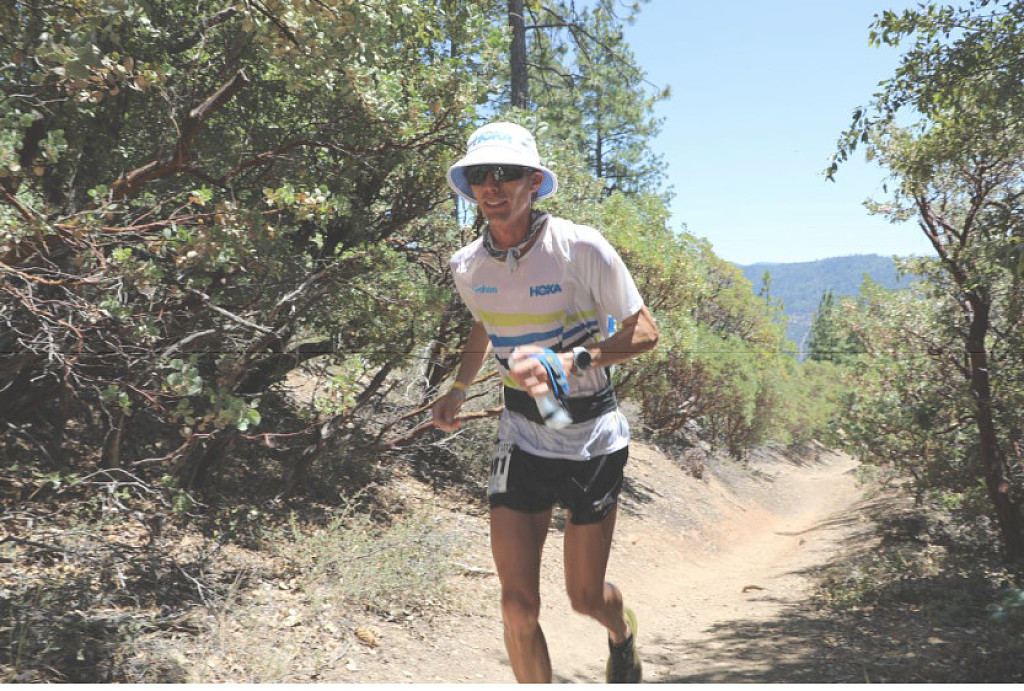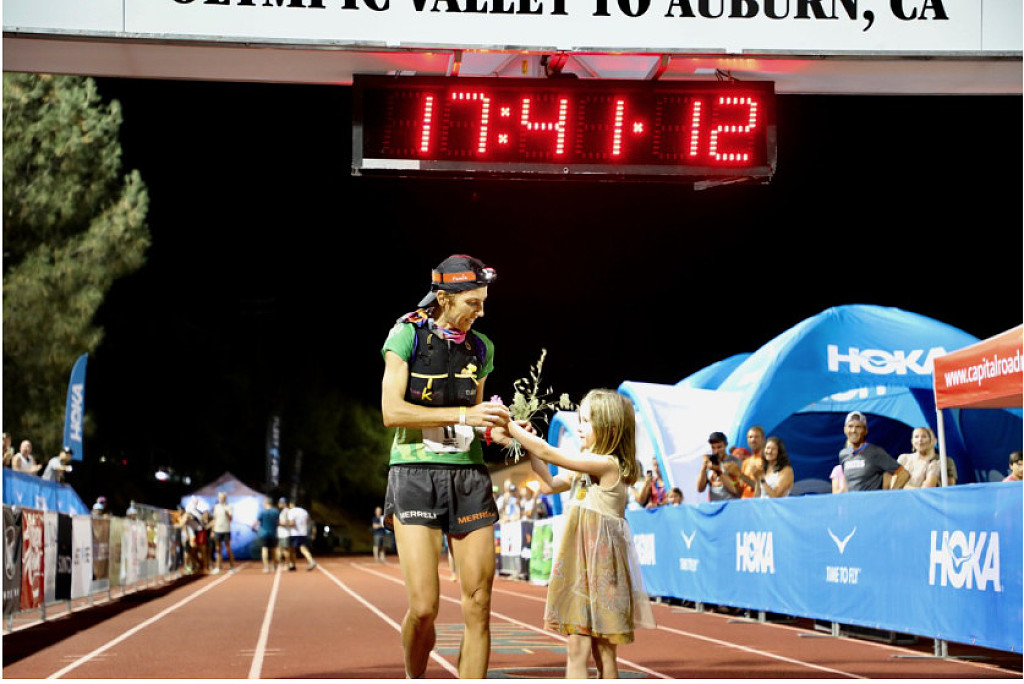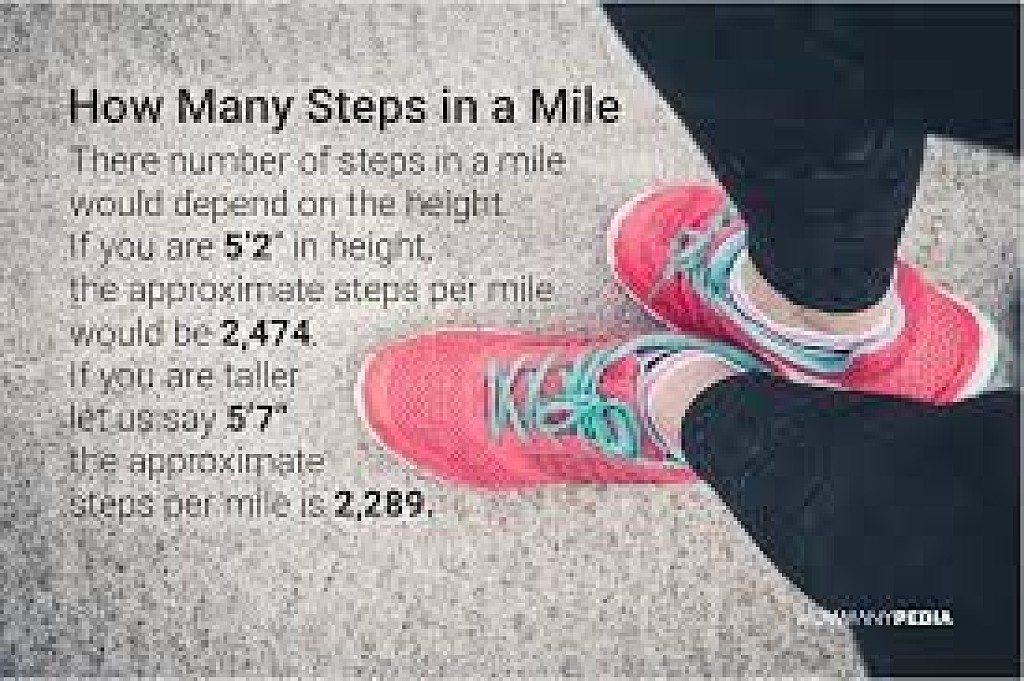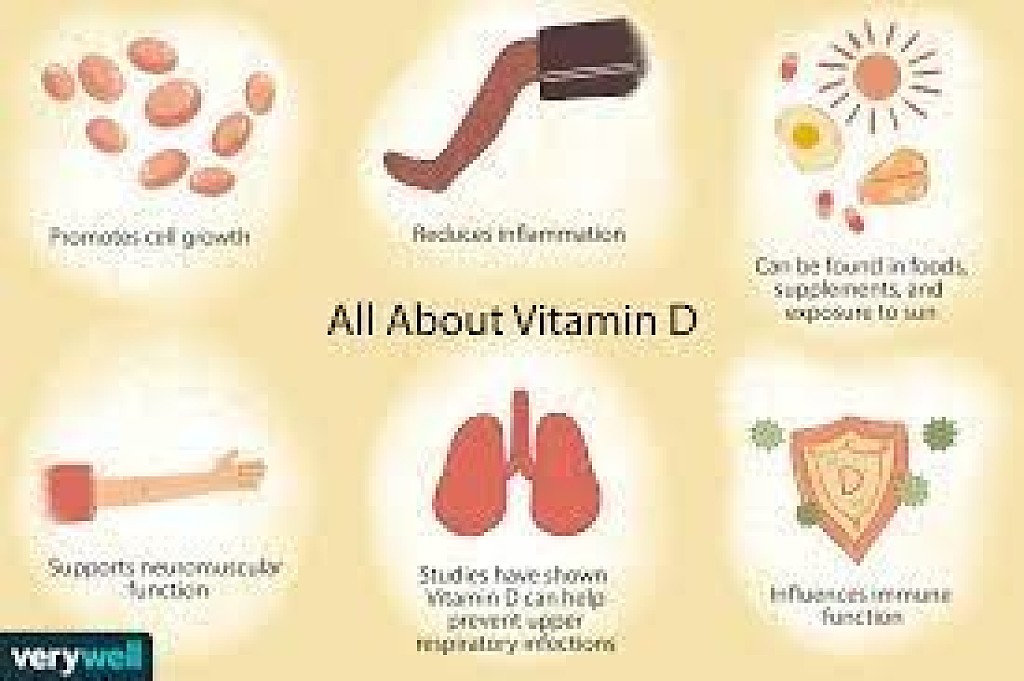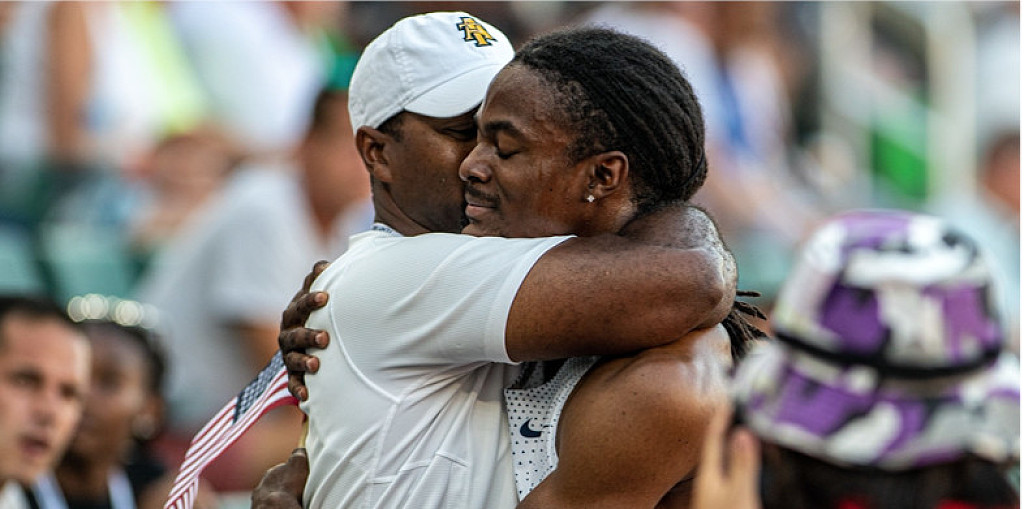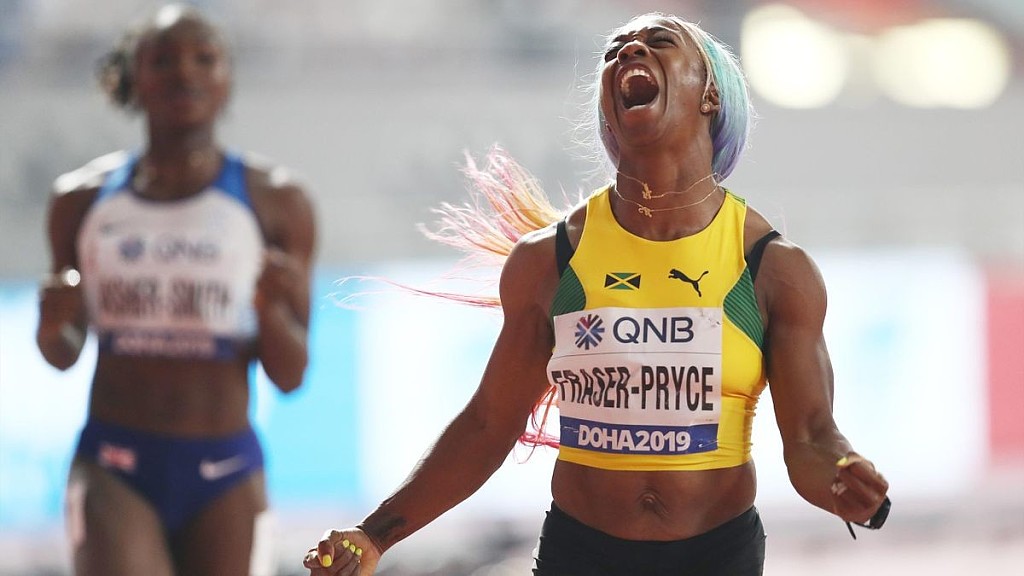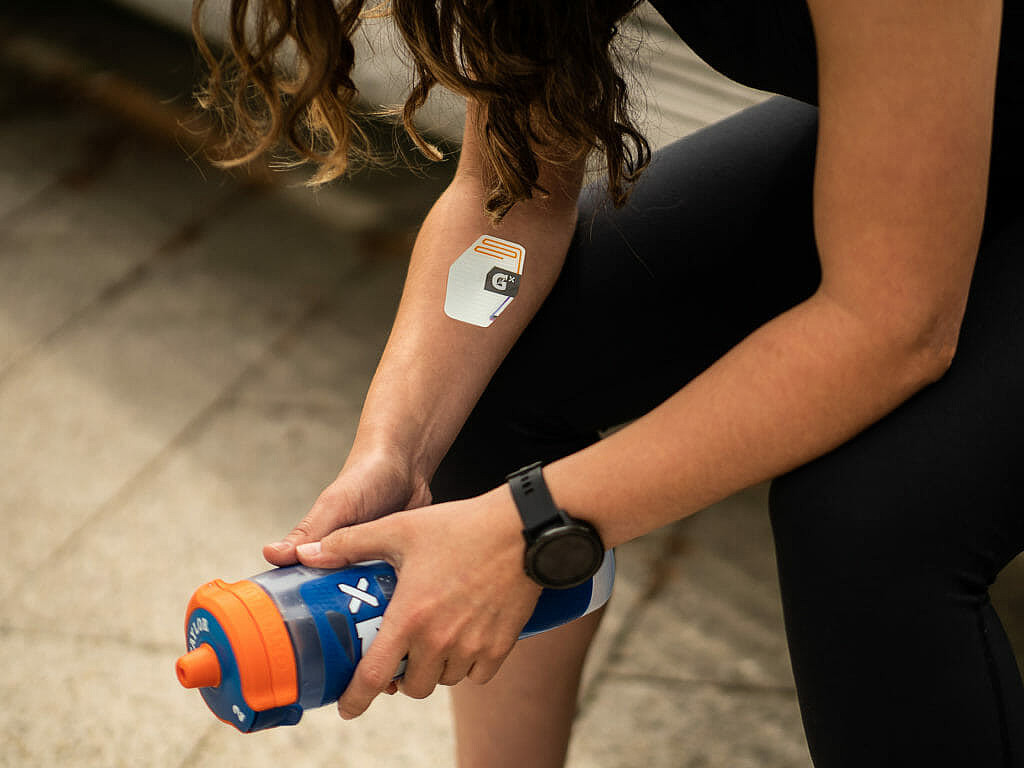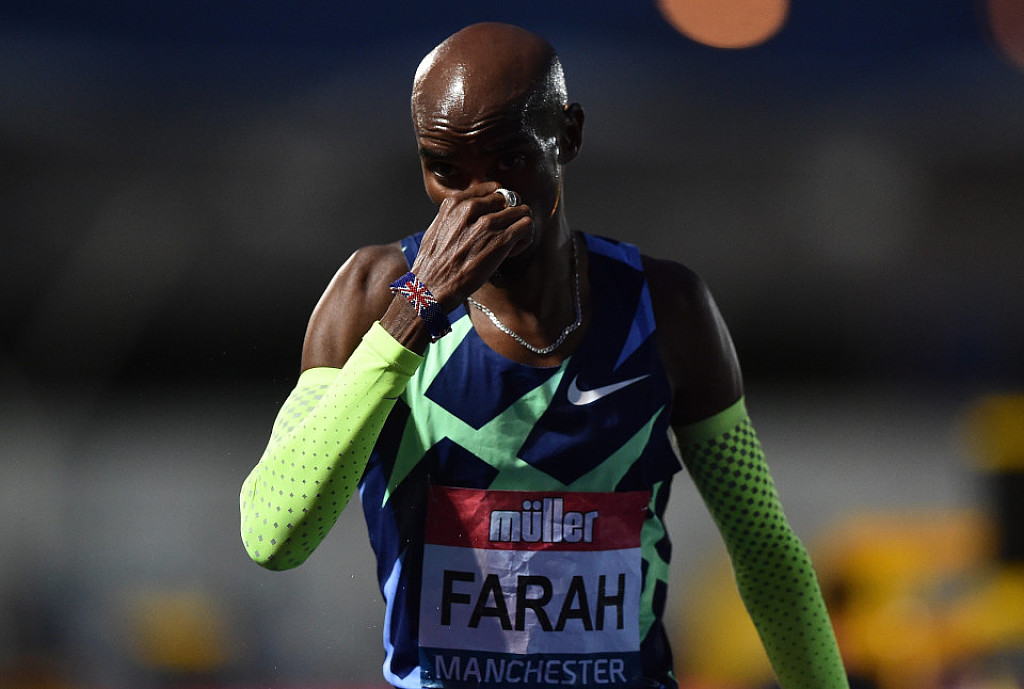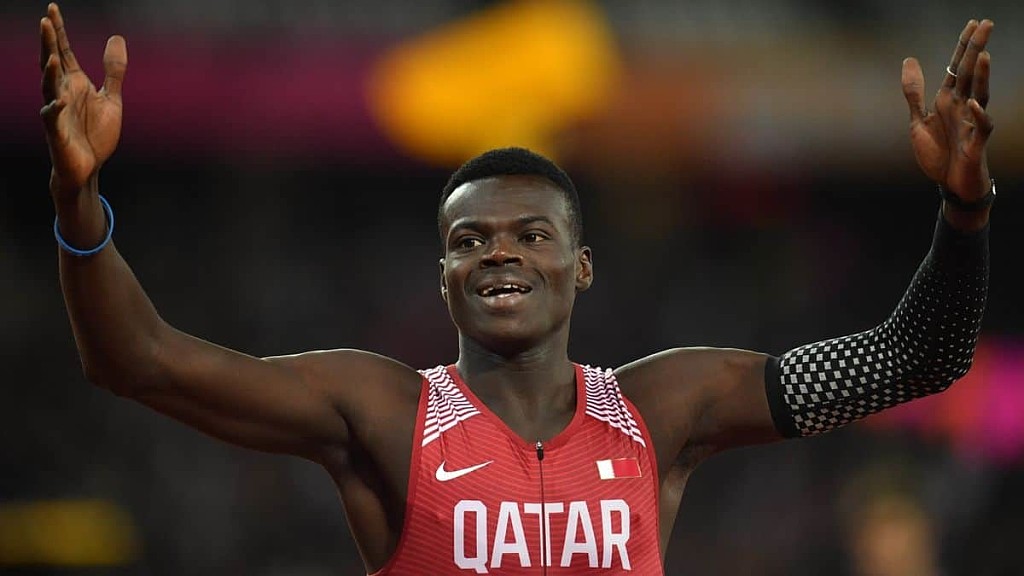Running News Daily
Running News Daily is edited by Bob Anderson in Los Altos California USA and team in Thika Kenya, La Piedad Mexico, Bend Oregon, Chandler Arizona and Monforte da Beira Portugal. Send your news items to bob@mybestruns.com Advertising opportunities available. Train the Kenyan Way at KATA Kenya. (Kenyan Athletics Training Academy) in Thika Kenya. KATA Portugal at Anderson Manor Retreat in central portugal. Learn more about Bob Anderson, MBR publisher and KATA director/owner, take a look at A Long Run the movie covering Bob's 50 race challenge.
Index to Daily Posts · Sign Up For Updates · Run The World Feed
Running can help you sleep better
A study published in the Journal of Clinical Sleep Medicine has found that regular exercise can improve the quality of your sleep and help you sleep through the night.
The only thing is that it takes about 4 months for your body to get used to the increased activity level. So don’t get discouraged if your new training routine doesn’t improve the quality of your sleep right away. It may well be that you need longer to fall asleep if you do an intense workout right before going to bed. Why? Physical exercise stimulates the autonomic nervous system and until it settles down, you can’t sleep. So your body needs time to adjust to the new training stimuli.
BETTER SLEEP, BETTER PERFORMANCE

During the day, we want to do a good job at work and still see the best results from our running workouts. If you don’t sleep well at night, you have less energy during the day and thus less desire to exercise. Therefore, a good night’s sleep is essential for your training routine!
This has recently been confirmed by a study on student athletes conducted by the renowned Stanford University: Students who got more sleep (in this case, 10 full hours!), performed better than those who placed less emphasis on their sleep.
Incidentally, it doesn’t always have to be 10 hours of sleep a night. 7 to 9 hours is the optimal amount.

YOUR MUSCLES GROW WHILE YOU SLEEP
What you require after a long run or an intense bodyweight training session is recovery: Your muscles need to rest now – and this is just as important for your desired training effect as the actual workout itself.
Incidentally, the male hormone testosterone plays a major role in building muscles: The harder you work out and push your muscles, the more testosterone your body releases. Testosterone is needed to help your muscles recover after your workout – without it, your damaged muscles cannot build new tissue and you won’t get stronger.
This is where sleep comes in again: The longer and better you sleep, the more time your body has for recovery and growth. So you see, your muscles do grow in your sleep.
10,000 STEPS FOR A RESTFUL SLEEP
The clock keeps ticking. Your thoughts keep racing. You lie in bed for hours and you simply can’t sleep… It’s really frustrating! There are days when enough sleep is more necessary than others. For example, when you are supposed to run a (half-)marathon the next day or you have an important meeting at work.
When you are stressed, your body releases the stress hormone cortisol, which interferes with your sleep. This means that on the next day, besides feeling even more tired, you will have a huge appetite thanks to a lack of leptin, the appetite-suppressing hormone.
Low levels of leptin result in increased hunger, which of course leads to us consuming the 300 calories we mentioned at the beginning of the article.
This also lowers the quality of your sleep – particularly because the fat cells that collect in your neck lead to annoying snoring. And you certainly don’t want to disturb your loved one’s sleep, do you? The fact is that sleep and weight are connected.
That’s why you need to get plenty of exercise – you should shoot for 10,000 steps a day. Exercising outdoors can help you cope with stress and makes you pleasantly tired in the evening so you sleep better.
WHAT TO DO IF YOU CAN’T FALL ASLEEP?
If you regularly have trouble sleeping, you need to do something about it.
Besides getting in plenty of steps and exercise, you can try to improve your sleep by establishing a bedtime ritual, eating a light dinner, and limiting or eliminating your alcohol intake.
4 TIPS FOR FALLING ASLEEP
Dim the lights for a while before going to bed. This makes your body think the sun is setting, which makes you sleepy faster.
Make your bedroom as dark as possible. Light interrupts your body’s production of melatonin, which disrupts your metabolic processes.
Develop a ritual like brushing your teeth, showering or reading before lying down to sleep. Your body will get used to it and will know that it’s time to sleep now.
Sleep in a cool room. The temperature in your bedroom should be between 16°C (60.8°F) and 18°C (64.4°F).
So as you can see, sleep is incredibly important for a healthy and fit lifestyle. Take care of yourself and we wish you a good night’s sleep!
(07/05/2021) ⚡AMPby Tina Sturm-Ornezeder
2021 Vienna City Marathon on course for September 12
The Vienna City Marathon is on course to take place in September 2021, after the cancellation of its 2020 event as well as one planned for spring this year.
“We are incredibly grateful to the runners,” says VCM organizer Wolfgang Konrad. “Many have carried over their start from 2020 and many have newly registered so that almost 23,000 participants are already on the start list.

“Thanks to the continued support of all our sponsors and partners and the very good cooperation with the responsible ministries and authorities, all participating municipal departments of the City of Vienna as well as police departments and offices in Vienna, we are in the best possible position economically and organizationally.”
With the lifting of the maximum number of participants for events from 1 July a central legal basis for the implementation of major events has been restored. “All interested parties can be assured that we as a professional organizer are ready to organize the VCM in a safe and at the same time atmospheric way. We are well on schedule in all areas that we can influence through our work,” said Konrad.
(07/05/2021) ⚡AMPVienna City Marathon
More than 41,000 runners from over 110 nations take part in the Vienna City Marathon, cheered on by hundreds of thousands of spectators. From the start at UN City to the magnificent finish on the Heldenplatz, the excitement will never miss a beat. In recent years the Vienna City Marathon has succeeded in creating a unique position as a marathon...
more...Hassan and Bol among 45 Dutch athletes set for Tokyo
The Dutch team for the Tokyo Olympic Games has been announced, with double world champion Sifan Hassan named for three events.
The 28-year-old won world 1500m and 10,000m titles in Doha in 2019 and for Tokyo has been selected for both of those events as well as the 5000m, but may not decide to contest all three.

European indoor 400m champion Femke Bol has set 11 national records so far this season and has been selected to make her Olympic debut in the 400 hurdles, women’s 4x400m and mixed 4x400m.
Two-time world champion Dafne Schippers is named for the 100m, 200m and 4x100m relay, while world-leader Jorinde van Klinken’s discus selection is confirmed.
Dutch team for Tokyo
WOMEN
100m: Jamile Samuel, Dafne Schippers, Marije van Hunenstijn
200m: Jamile Samuel, Dafne Schippers
400m: Lisanne de Witte, Lieke Klaver
1500m: Sifan Hassan
5000m: Sifan Hassan, Diane van Es
10,000m: Sifan Hassan, Susan Krumins
Marathon: Andrea Deelstra, Jill Holterman
3000m steeplechase: Irene van der Reijken
100m hurdles: Zoe Sedney, Nadine Visser
400m hurdles: Femke Bol
Shot put: Jessica Schilder
Discus: Jorinde van Klinken
Heptathlon: Nadine Broersen, Emma Oosterwegel, Anouk Vetter
4x100m: Lieke Klaver, Jamile Samuel, Dafne Schippers, Naomi Sedney, Marije van Hunenstijn, Leonie van Vliet, Nadine Visser
4x400m: Andrea Bouma, Laura de Witte, Lisanne de Witte, Lieke Klaver, Hanneke Oosterwegel, Anne van de Wiel
MEN
200m: Taymir Burnet
400m: Liemarvin Bonevacia, Jochem Dobber
800m: Tony van Diepen
5000m: Mike Foppen
Marathon: Khalid Choukoud, Abdi Nageeye, Bart van Nunen
400m hurdles: Nick Smidt
Pole vault: Rutger Koppelaar, Menno Vloon
Decathlon: Pieter Braun
4x100m: Solomon Bockarie, Taymir Burnet, Christopher Garia, Joris van Gool, Churandy Martina, Hensley Paulina,
4x400m: Terrence Agard, Ramsey Angela, Liemarvin Bonevacia, Jochem Dobber, Nout Wardenburg, Tony van Diepen
MIXED
4x400m: Terrence Agard, Ramsey Angela, Liemarvin Bonevacia, Andrea Bouma, Femke Bol, Laura de Witte, Lisanne de Witte, Jochem Dobber, Lieke Klaver, Hanneke Oosterwegel, Nout Wardenburg, Anne van de Wiel, Tony van Diepen
(07/04/2021) ⚡AMPby World Athletics
Canada names 57-strong team for Tokyo
World medallists Andre De Grasse and Damian Warner are among the 57 athletes selected for Canada’s team for the Tokyo Olympic Games.
De Grasse claimed three of Canada’s six medals at the Rio Games in 2016, securing 200m silver and 100m bronze, while also forming part of the bronze medal-winning men’s 4x100m team. Warner, meanwhile, added Olympic decathlon bronze to his two world medals and went on to claim another in Doha in 2019.

“It’s always an honour to represent my country on the world stage,” said De Grasse. “I’m really proud and excited to be going to my second Olympics Games. I look forward to making Canada proud.”
Warner, who heads to Tokyo as the top-ranked athlete in the men’s decathlon, said: “I’m really excited to go to Tokyo. It’s crazy for me to think that I went to the Olympics in 2012, 2016 and now I’m getting ready for my third Olympic Games.
“I couldn’t be more honoured to represent Team Canada and to go over to Tokyo with this talented group. I will have Pierce (LePage) with me in the decathlon, which will be awesome to have a teammate in the same competition. I’m just really looking forward to going over there and competing.”
Among those joining them in Tokyo will be 2016 Olympic 800m fourth-placer Melissa Bishop-Nriagu, Mohammed Ahmed, Gabriela DeBues-Stafford, Evan Dunfee and Sage Watson.
Malindi Elmore returns to Olympic Games action 17 years after she represented Canada in the 1500m in Athens, with the 41-year-old having broken the Canadian marathon record with 2:24:50 last year to achieve her place in the 26.2-mile event.
WOMEN
100m: Khamica Bingham, Crystal Emmanuel
200m: Crystal Emmanuel
400m: Kyra Constantine, Natassha McDonald
800m: Melissa Bishop-Nriagu, Lindsey Butterworth, Madeleine Kelly
1500m: Gabriela DeBues-Stafford, Natalia Hawthorn, Lucia Stafford
5000m: Andrea Seccafien, Julie-Anne Staehli, Kate Van Buskirk
10,000m: Andrea Seccafien
Marathon: Malindi Elmore, Dayna Pidhoresky, Natasha Wodak
3000m steeplechase: Alycia Butterworth, Genevieve Lalonde, Regan Yee
400m hurdles: Noelle Montcalm, Sage Watson
Pole vault: Anicka Newell, Alysha Newman
Long jump: Christabel Nettey
Shot put: Brittany Crew, Sarah Mitton
Javelin: Elizabeth Gleadle
Hammer: Camryn Rogers, Jillian Weir
Heptathlon: Georgia Ellenwood
4x400m: Alicia Brown, Kyra Constantine, Lauren Gale, Natassha McDonald, Noelle Montcalm, Madeline Price, Sage Watson
MEN
100m: Bismark Boateng, Andre De Grasse, Gavin Smellie
200m: Aaron Brown, Andre De Grasse, Brendon Rodney
800m: Marco Arop, Brandon McBride
5000m: Mohammed Ahmed, Lucas Bruchet, Justyn Knight
10,000m: Mohammed Ahmed
Marathon: Trevor Hofbauer, Cameron Levins, Ben Preisner
50km race walk: Mathieu Bilodeau, Evan Dunfee
3000m steeplechase: John Gay, Matthew Hughes
High jump: Django Lovett, Michael Mason
Shot put: Timothy Nedow
Decathlon: Pierce LePage, Damian Warner
4x100m: Bolade Ajomale, Jerome Blake, Bismark Boateng, Aaron Brown, Andre De Grasse, Brendon Rodney, Gavin Smellie
(07/04/2021) ⚡AMPby World Athletics
Thinking About Racing Again? Here’s How to Approach the Starting Line for the First Time in a Year
Consider why you race—those reasons play a big role in deciding when to lace up again.
If you’re feeling a little rusty after a year or more without racing, the first thing to know is that your competition drought is, unfortunately, the norm. Although it may feel like races have been popping up most weekends since fall, most of those have been limited to small elite fields. The rest of the running world has been watching and biding its time until the racing door swings back open.

The second thing to know is that there are many criteria for returning to racing—like reaching a certain level of fitness, getting vaccinated, or simply craving competition—and all of them are valid. Deciding when to approach your next starting line, and how to frame that first race back, is a matter of preference that looks different for us all.
Depending on the type (or types) of runner you identify with, here are some ways to think about your comeback.
If You Race to Stay Motivated
As with a deadline at work, some runners need a race on the calendar to focus and structure their training. Susan Griffen, who splits time between Frankfort, Michigan, and Los Angeles, falls into that category. Whether in-person or virtual, her commitments hold her accountable and add a sense of purpose to her miles (as do the causes she supports through her racing).
Following a string of virtual races, Griffen plans to line up in October for the London Marathon, which will be her sixth and final World Marathon Majors race. In the meantime, once she is fully vaccinated, she hopes to race locally as part of her build-up. The uncertain future of mass events doesn’t shake Griffen’s approach.
“As far as my training, I will pretend [London’s] happening,” she says. “It’ll keep me sane and fit.”
Comeback Tips: If you’ve been running virtual races, you shouldn’t feel as out of your element in a real race as you might otherwise (although being in a crowd may still feel unsettling). You can, however, expect to get a little more out of yourself from the atmosphere and competition.

For those holding out for an in-person event, it looks like you’ll be back in business late summer or early fall. If you’re eager to start training with a goal in mind, it may be time to register for (or plan on) a race, with the least risky option being small local road races in the fall.
If You Race to Capitalize on a Good Opportunity
Dawn Grunnagle, a three-time Olympic Trials qualifier and youth coach in Dallas, says that “opportunity to race is number one” in her return-to-racing criteria. Similar to Griffen, Grunnagle trains best with “something solid” on the calendar. But virtual races don’t quite do it for Grunnagle, who’s waiting for an in-person opportunity that feels meaningful and exciting.
“Once I have a set date for a race,” she says, “I know my physical and mental fitness will come around to be ready on that day.”
Grunnagle’s last race was the Olympic Marathon Trials in February 2020, and her next big one will likely be a fall marathon. There, she plans to “jump in and rip off the band-aid.” She sees it as a fresh start, as well as an opportunity to practice staying positive, to trust in her coaching and preparation, and to get even stronger for her next battle.
Comeback Tips: If, like Grunnagle, you’ve had a long gap between racing opportunities that fire you up, you can expect your options to increase by the month. Depending on how hard you’ve been training (or not) this last year, it may take you a while to get back in the swing of structured training and reclaim a competitive mindset. Grunnagle’s advice is to focus on daily and weekly improvement, be consistent with your training, and believe that your fitness will fall into place.
If You Race When You Feel the Itch
New York-based Allison Devereux treats racing like a surfer treats a big wave. They’re out there, watching for opportunities, and when a wave of motivation comes, they ride it. The New York City Marathon, held every November (in non-COVID years), typically gives Devereux a reason to ramp up her training the prior spring. The thawing of the city around that time helps, too.
Devereux ran 2:57 in the 2019 edition, which was her last race, and is waiting to hear whether she’s been accepted into this fall’s field. With spring in the air and a decision coming soon, she senses some momentum bubbling beneath the surface. The return of races in general will likely fuel her fire, too. “I miss waking up early and running with a big group of strangers,” says Devereux. With mass vaccinations under way, soon that might not be such a crazy concept.
Comeback Tips: 2020 wasn’t an inspiring year for road racers, to say the least. If your motivation has flagged, that’s understandable. Honor your cravings (as you might with food) and look for the next scheduled race that gets your heart pumping.
If, on the other hand, your eagerness to compete has been building, use that a secret weapon for your next race. Either way, Devereux recommends a slow transition back. Rather than fixating on speed or mileage, focus on “recovering the pure, simple joy of getting outside and running,” and trust that the urge to race—if not already present—will follow.
If You Race Your Way to Full Fitness
Then there’s the type—take Molly Grabill of Boulder, Colorado, for example—who uses early-season races as stepping stones leading to future goals. These runners start racing when they’re in good shape but not at 100 percent, and they keep lining up until (ideally) they’re in peak fitness for their target race. This approach works for Grabill because it takes some pressure off individual races and offers frequent, valuable benchmarks.
After placing 25th in the Olympic Marathon Trials, Grabill dialed back her training for the first nine months of the pandemic, slashing her mileage from triple-digit weeks to 25 to 30 miles per week.
Almost a year to the day after her last race, and on just six weeks of focused training, Grabill kicked off her 2021 track campaign with a 10,000-meter race in Austin, Texas. She walked away from that race with a PR (32:46), a runner-up finish in her heat, and a solid step taken towards her goal of qualifying for this summer’s U.S. Olympic Track and Field Trials, which will be hosted by her alma mater, the University of Oregon. Grabill hopes that race was the first of many between now and June, and has her eyes set on another 10,000-meter attempt in May.
Comeback Tips: First (and half-jokingly), Grabill pleads, “Don’t use the phrase ‘rust-buster’ or say you haven't done speedwork.” No one is in PR shape year-round, so you don’t need an explanation for a sub-stellar result—especially on the heels of a global pandemic. More seriously, Grabill says, “I think being confident in your running ability, and okay with where you are in your fitness, is the best way to feel successful.” As you reenter the racing scene, try to see those early ones like quizzes en route to an exam (your end goal); how you’re trending is a better metric than any one result.
If You Race to Run Fast, Place High, or Crush a Big Goal
Some people race only when they feel ready to run really well—whatever that means to them. American 25K record-holder Parker Stinson says, “I want to always be at a starting line feeling prepared and like I have a chance to break a PR or go for the win.” If he’s not in that position, he’d rather stay home and train, saving that max effort for a better day.
That doesn’t mean that all of Stinson’s races are a home run. But by constantly putting himself in positions in which running well is likely, his successes mount and his confidence soars.
In January, Stinson ended a 15-month racing lull that started with a knee injury after the 2019 Chicago Marathon, extended through 2020 (and kept him out of the marathon trials), and ended with his victorious comeback in a Naples, Florida, half marathon. He chose that race because it was low-key and he liked his odds of winning. Next up for Stinson is a half marathon in Omaha in late April, where his main objective is to “run really fast.”
Comeback Tips: Big goals come with some degree of nerves and pressure—especially when you haven’t chased one in a while. Don’t be surprised if, like Stinson, you feel “nervous as hell” before your return. Two things helped him transition back smoothly. First, he ran a few indicator workouts leading up to the race that helped him set realistic goals and boosted his self-belief. Second, Stinson reflected back on everything that seemed to work in past races, from his wakeup time and pre-race breakfast to his acknowledgement that “it’s not a workout and it’s going to hurt really, really bad.”
If You Race When You Feel Ready to Brave a Big Crowd
Though an outlier among elites, Boston-based Kaitlin Goodman has plenty of company among road racers at large. As she detailed in December, the four-time Olympic Trials qualifier, coach, and public health professional won’t race until she and more people are fully vaccinated, COVID-19 is better contained, and she feels that the rewards of racing outweigh the risks. She also cares about a race’s safety precautions, such as a mask and vaccination proof requirements.
The last starting line Goodman toed was the Olympic Marathon Trials in early 2020, and her next one probably won’t be until this summer or fall. In the meantime, she’s hardly sitting around waiting for the pandemic to pass.
“I’m keeping up baseline fitness,” she says, “so when the time comes for me to compete again, I can jump back into race-specific training, hopefully without any injuries.” She’ll also run some solo time trials to reduce the shock of a race-like effort.
Comeback Tips: Waiting to race until you feel completely safe and ready to brave big crowds is as respectable of a requirement as it gets. Mass events may not reach pre-pandemic safety levels for a while—Goodman points out that the CDC still advises against medium- and large-scale gatherings (even for the vaccinated)—but there are other ways to test your fitness until they do. In addition to running time trials, Goodman suggests signing up for virtual races, which have the added benefit of supporting a financially strapped race organization. 

Meanwhile, keep an eye on CDC recommendations and know that peace of mind is a powerful performance enhancer, no matter how long you’re away.
(07/04/2021) ⚡AMPby Runner’s World
4 Ways to Reach Your Potential by Being a More Confident Runner
Believing in yourself can lead to breakthrough performances. Here’s how to make that happen.
Picture yourself on the starting line of an important race. As you stand there, simultaneously not wanting the race to begin and wishing they would just get things going already, you review your goals for the race. Do those goals seem attainable if you execute your race plan? Or do you wonder what delusional person thought you could do such a thing?

If your answer is more often the latter, you’ll come closer to reaching your potential by improving your self-confidence. As with any psychological skill, you can purposefully nurture and develop self-confidence. It’s not a psychological characteristic you should consider fragile or in a constant state of uncontrollable flux. Instead, by drawing on controllable sources, you can set about building a sturdy level of self-belief.
What is self-confidence?
Even at the highest levels of sport, confidence is considered the most important psychological characteristic required for success. 

What exactly does “confidence” mean in this context? It’s not cockiness, or self-delusion. Blasting off the start line at a pace that’s well outside your physical capacity is always going to end badly, no matter how sure you are you’re up to the task. Rather, self-confidence is a grounded belief that we have the abilities required to achieve a certain outcome. In running, this might be our belief that we can hold a certain pace throughout a race, or place ahead of the runners around us in the second half of a race. In other areas of life, self-confidence might mean believing we can successfully pass an exam, get a job that we apply for, or manage a large work project. 

Before we get to specific ways to improve self-confidence, let’s consider something about confidence that isn’t always obvious. We’re not going to tell you what it feels like to be high or low in confidence—you probably know both sides of that coin already. Instead, what we’d like you to reflect on is this: Feeling more confident isn’t as random as a coin toss. It’s not a quality that relies on luck—something we can’t control, that just happens, or that inexplicably comes and goes. Building confidence can be a controllable process; you can learn to flip the coin in your favor by nurturing your self-belief with the best sources of confidence available. This is what makes self-confidence more controllable than you might previously have considered.
Here’s another potentially surprising thing about self-confidence: The beliefs that underpin our self-confidence have less to do with what we’re actually capable of, and more to do with what we think we can do with the skills we possess. Sometimes we can be crippled by self-doubt, even for tasks that we’re more than capable of completing. You might doubt your ability to answer questions in a job interview, for example, despite having the knowledge and information required to do so. Your doubts might even mean you avoid applying for the role to begin with. Similarly, you might avoid signing up for races because you think you’re not fit enough, even though your training has been solid the past few months.
But the opposite is also true. If our belief in our abilities is higher, then we are more likely to try harder or persist for longer on a task than an equally skilled person with lower self-belief. In this way, our beliefs create a self-fulfilling prophecy. We try harder because we first believe we can accomplish a task. And we ultimately achieve it because of our increased effort and persistence, not just our abilities. Thus, our beliefs are fundamentally important to how we act, and higher self-confidence—without changes in ability or skill level—has been shown to improve performance in both athletic pursuits and the challenges of day-to-day life.
Again, this doesn’t mean we can fake it. We’re not talking about make-believe and fairy dust here! Instead, to build self-confidence—the unshakable kind—we need a solid foundation to start building on.
Specific steps toward self-confidence
Many of the general things you probably already do as a runner will build your self-confidence. These include setting challenging goals and striving to accomplish them, focusing on controllable actions, and talking to yourself in a constructive way. While these are helpful, here are four more-specific techniques for tapping into the strongest sources of self-confidence.
1. Meticulously record your preparation and milestone achievements.
Previous accomplishments, good preparation, and mastery of the skills of running are key to building robust self-confidence. But the process can crumble when you fail to make the connection between the work that you’ve done and the challenge that lies ahead. For many athletes, keeping a diary is one way of logging progress. Doing so can increase feelings of being well prepared and self-confident when an important event nears. Nothing helps to ease worries and dampen doubts more than evidence of the work you’ve done to prepare for an event.
Simply keeping a diary isn’t enough. It’s also important to prominently record the progress and achievements that you make during the weeks, months, and years of preparation. This might be highlighting training sessions that went well, flagging a successful experience like using a new mental tool to stay focused, or celebrating a performance milestone, such as setting a personal record. 

No matter how you choose to record snippets of information about your progress and achievements, the important bit is to draw on them regularly to feed your self-confidence. You might note them in a diary, but you might also attach them to your refrigerator door, or store them in a confidence jar beside your bed. Whatever the format, reading about them—and recalling each event— can help you overcome doubt-filled moments. The key point is that you ensure that your self-confidence is secured to controllable preparation and milestone achievements. These nuggets will provide the strongest sources of evidence as you methodically build and develop that confidence.
2. See it to believe it. 
Mental imagery can serve many different purposes, each of which can improve self-confidence. Athletes use their imagination to rehearse specific skills and routines. You might, for example, visualize yourself in the second half of a race running fast and relaxed. Performing these actions successfully—even in your mind’s eye—can have a positive impact on your self-belief.
Equally, when trying to achieve a goal, you might imagine working toward that goal, step by step, and making good progress. You might also imagine the emotions that accompany a stressful situation, and imagine managing these emotions to remain calm. 

Finally, you might imagine overcoming challenging situations and coping with difficult moments while staying focused and avoiding distractions. This might seem counterintuitive. After all, we often prefer to avoid thinking about things going wrong in the hope that everything works out fine. But imagining negative scenarios—the “what-if” moments—and mentally planning how to respond to each in the best possible way can be a powerful tool in our confidence-building kit. Elite runners regularly do these mental exercises, such as thinking through what they’ll do if they miss their drink at an aid station, or briefly lose contact with the pack they’re running with.
3. See others to believe it. 
Learning from others who have traveled a path similar to the one you hope to follow can raise your belief about what you’re capable of. You might, for example, pick the brain of someone in your running club who progressed from your current PRs to your goal times. What was her training like? Did she steadily chip away at lowering her times, or have a breakthrough after seeming to plateau? You might learn that you’re more ready to reach your goals than you thought you were. Remember, self-confidence beliefs are more about what we think we can do with our skills rather than an objective measure of the skills we possess. 

By learning from others, you might grasp how they cope with setbacks, or how they overcame the same disadvantages that you might experience. Even learning from their failures can increase your belief that you can overcome similar obstacles in your life.
4. Get a good support crew, including yourself. 
Finally, getting a good support crew around you can be helpful to develop self-confidence. Support might come in the form of positive feedback and encouragement from training partners, a coach, even non-running friends and family members who might believe in you more than you do. If enough knowledgeable people tell you you’re capable of reaching your goals, odds are they, and not your inner doubter, are correct.
(07/04/2021) ⚡AMPby Runner’s World
New British record for Tokyo Olympics-bound Eilish McColgan after smashing Paula Radcliffe's 5km time
Eilish McColgan received a pre-Tokyo boost by setting a new British standard in 5km by taking more than half a second off Paula Radcliffe’s 17-year-old record.
Earlier this week McColgan was selected for this year’s Team GB heading to Japanwhich will place her among Scotland’s select band of female athletes to compete in three Olympics.

And she capped a memorable few days by making mum Liz, also a three-time Olympian, a ‘proud mama and proud coach’ with her performance in Norway.

The 30-year-old finished fourth in the Diamond League meeting in Oslo, but stripped 18 seconds off her own best time following Kenya's Hellen Obiri and Ethipoians Fantu Worku and Margaret Chelimo Kipkemboi home.
Her 14:28.55 time bettered Radcliffe’s existing record of 14:29.11 which was set at the Spar European Cup in Bydgoszcz, Poland 17 years ago.
Fellow Scottish runner and British record holder in the 1500m, Laura Muir, tweeted: “@EilishMccolgan!! New 5000m British Record Holder!! Amazing!!”
Mum Liz, who also coaches her eldest daughter, added: “Oh my days we knew it was on
McColgan senior won Olympic silver in Seoul 1988 for the 10km, and was fifth in Barcelona four years later. She ran the marathon in Atlanta for the 1996 Olympics. Eilish, born midway between the Seoul and Barcelona games, will compete in the 5km in Tokyo having raced the 3km steeplechase at London in 2012 and 5km in Rio four years later. She will double up with the 10km later that week.
Her selection this year, sets her alongside Lee McConnell and her mum as female athletes qualifying for participation in three Olympic Games. Steph Twell’s selection in the marathon also adds her name to the illustrious group.
Earlier this week Eilish wrote: “Officially selected for my THIRD Olympic Games! It still sounds a little surreal, but I'm super proud to represent Team GB once more in what will be my third different individual event. From the Steeplechase in 2012 to the 5,000m in 2016 and now the 5/10K double in 2021.”
McColgan set her previous best time of 14:46 – a Scottish record – in Doha in 2019. The run in Norway now places the Dundee Hawkhill Harrier fifth on the European all-time list.
(07/03/2021) ⚡AMPby David Oliver
Galen Rupp and Aliphine Tuliamuk will tune up Sunday’s USATF 10 km Championships
U.S. Olympic Team Trials – Marathon winners Galen Rupp and Aliphine Tuliamuk headline Sunday’s USATF 10 km Championships presented by Toyota, as both athletes eye winning another U.S. title, while tuning up for the Olympic Games in Tokyo, which get underway later this month.The USATF 10 km Championships, hosted by the Atlanta Journal-Constitution Peachtree Road Race are the third stop on the 2021 USATF Running Circuit presented by Toyota.
Sunday’s contest in Atlanta offers Rupp, along with fellow Olympic qualifiers Jacob Riley and Abdi Abdirahman, a chance to test their fitness before departing for Tokyo. Rupp is coming off a strong sixth place finish at the U.S. Olympic Team Trials – Track and Field in the 10,000m, where he contended for a top three finish for much of the race. Rupp is in fine form and comes to Atlanta as the pre-race favorite.For Riley and Abdirahman, both of whom have had very quiet 2021 seasons, Sunday is even more important to get a quality racing effort before their marathon race in Tokyo on August 8.

While both are strongest over the marathon distance, a top five finish for either athlete is not out of the question in Atlanta.While Rupp enters as the pre-race favorite, Clayton Young is having a strong 2021 campaign. Young currently leads the USATF Running Circuit standings with 18 points, having won the USATF 15 km Championships, his first USATF title, back in March. Young followed up the winning effort with an eighth place showing at the USATF 1 Mile Road Championships in Des Moines.Veterans Colin Bennie and Sam Chelanga are also top three contenders.
Bennie, who placed sixth at the USATF 15 km Championships and ninth in Atlanta last year at the U.S. Olympic Team Trials – Marathon, seems ready to challenge for his first USATF title, while Chelanga is in fine form coming off an eighth place showing in the 10,000m at the U.S. Olympic Team Trials – Track and Field in Eugene.Other notable entries include 2016 Olympian Jared Ward, 2020 U.S. Olympic Team Trials – Marathon fifth place finisher Augustus Maiyo, 2018 USATF 10 km Championship runner-up Haron Lagat, and veteran Elkanah Kibet.

On the women’s side, Tuliamuk is entered and ready to run her first race since she qualified for the Olympic Games in February 2020. Tuliamuk, who became a mother back in mid-January, is in fine form and ready to show she’s primed for Tokyo.Tuliamuk’s top competition should come from Sara Hall. The ten-time USATF champion finished third at the USATF 10 km Championships in 2018.
This year, she’s coming off a tremendous sixth place effort in Eugene at the U.S. Olympic Team Trials – Track and Field. Hall is arguably the most versatile American distance runners, a title contender at almost any distance, and Sunday she should be at the front pushing the pace once again.Stephanie Bruce, who won the 2018 USATF 10 km Championship title, looks to add another national title to her resume.
The Flagstaff-based runner placed 13th in the 10,000m at the U.S. Olympic Team Trials – Track and Field, while also having run 1:09:55 for a half marathon win back in late-April.
Not to be overlooked, Emily Durgin is having a tremendous season. Durgin placed third at the USATF 15 km Championships earlier this season and sits a mere five points behind USATF Running Circuit overall leaders Emily Sisson and Rachel Schneider. Durgin placed ninth in the 10,000m at the U.S. Olympic Team Trials – Track and Field last month, in addition to a 1:09:47 third place effort in a half marathon in late-January.
Diane Nukuri is showing fine form this season, coming off a tenth place finish at the USATF 15 km Championships, while Allie Kieffer finished fourth at the 2018 USATF 10 km Championships and is a seasoned veteran capable of a top five finish.
Add Maegan Krifchin, Joanna Thompson, Whitney Macon, and Bridget Lyons Belyeu to the mix and this race has both talent and depth, which should make for a thrilling morning of racing in Atlanta on Sunday.
(07/03/2021) ⚡AMPby Usaft
New generation of Kenyan steeplechase stars emerges
Simon Koech from South Rift and Central Rift's Jackline Chepkoech will lead Kenya's assault in men and women's 3,000m steeplechase during the World Athletics Under-20 Championships in August in Nairobi.
Koech clocked eight minutes and 18.43 seconds to win the men's race, beating Amos Serem of Central Rift to second place in 8:20.26.
Koech and Serem now have now been bestowed with the honour of going to try and recapture the steeplechase title Kenya relinquished during the 2018 Tampere Championships.

"I am really impressed and I thank God since I have been waiting for this opportunity since last year," said Koech, who hails from Bureti, Kericho County but trains in Silibwet, Bomet County under veteran coach John Kimetto.
"I am going for nothing but gold so as to emulate my training mate Leonard Bett and the likes of Ezekiel Kemboi and Conseslus Kipruto," said Koech.

Serem is glad to represent Kenya for the first time.
"I used a lot of energy during the heats but I now known what to do...we all learn from mistakes," said Serem, who trains in Kaptagat, Elgeyo Marakwet.
"Kenyan trials are always tough and challenging hence you must be good to make the team. I thank God," added Serem.
Chepkoech timed 9:32.99 to edge out Faith Cherotich from South Rift to second in 9:33.02 with both earning places in Team Kenya.
They will be eying to succeed fellow countrywoman Celliphine Chespol, who won in 2016 Bydgozszc and 2018 Tampere.
"I still continued with my preparations despite the cancellation of the Africa Cross Championships in March in Togo," said Chepkoech. "It's never enough in terms of preparations."
(07/03/2021) ⚡AMPby Bernard Rotich & Ayumba Ayodi
Mary Cain launches professional women's running team
Mary Cain has announced the launch of her new professional women’s running team, Atalanta New York. Cain previously ran for Alberto Salazar and the Nike Oregon Project (NOP), and in 2019, four years after leaving the team, she opened up about the emotional and physical abuse she endured in her short time training with that group. That abuse pushed Cain to the point of considering suicide, and it was fuelled by Salazar’s win-at-all-costs mentality. Cain is now looking to fight this mindset (which was not unique to the NOP), and Atalanta NY will work to empower and support its athletes and young female runners everywhere.
Cain is the president and CEO of Atalanta NY, an endeavour she says is the next step in her fight against the toxicity plaguing the world of athletics. “Ever since I shared my story to The NY Times, I have wanted to do more,” she wrote on Instagram. The first step in this fight, she said, was speaking out against Salazar, the NOP and the must-win culture (which has led to the abuse of so many female athletes) in track. “Maybe it’s the runner in me, but I wanted to take more than a first step.”‘

Atalanta NY is a New York City-based nonprofit that will employ its athletes, not as competitors, but as mentors to young women in the running community. This takes the emphasis off of performance (which is the usual focus for professional running teams) and instead places it on community involvement, something that Cain said she believes will “shake up the current model of professional sports.”
This is similar (although not identical) to the structure of Tracksmith’s partnership with Cain. In 2020, Cain signed with Tracksmith to work as a full-time employee while also running for the brand. This allowed Cain to run worry-free, as her contract was not dependent on her results, but rather on her work as the brand’s New York City community manager. Cain is still representing Tracksmith, and the company is a founding sponsor of Atalanta NY.
“Atalanta New York’s mission is two-fold,” reads a post on the Tracksmith Instagram page. “As a team, its goal is to help elite runners chase their athletic dreams through a sustainable and healthy organizational model. As a nonprofit, the goal is to educate and inspire young female athletes in underserved New York communities to find joy and wellness through sport.”
So far, Atalanta NY has only named two professional athletes to the team: Cain and Jamie Morrissey. Cain hasn’t raced much in the past few years (she raced four times in 2020, interrupting a four-year break from competition), but she still owns several big records, including the world U20 indoor 1,000m record (2:35.80) and American U20 two-mile best (9:38.68). Morrissey is a former University of Michigan standout who owns a PB of 4:11.48 in the 1,500m.
No other runners have been publicly added to the team yet, but Cain has said there will be more athlete announcements soon. To learn more about Atalanta NY and the team’s mission,
(07/03/2021) ⚡AMPby Running Magazine
Meet the Texas man running 50 marathons in 50 weeks in 50 states
In November 2015, Houston’s Aaron Burros was shot five times. He was at work when he heard a commotion and went to help whoever was in distress. Burros did help, distracting the enraged individual while everyone in danger got away, but he was not so lucky. Lying on the ground after tackling one of the assailants, Burros stared up at another man, who was ready to shoot him. He now says everything slowed down in those moments, giving him a chance to wonder if he was going to die.
Fortunately, the gunman misfired his first shot, which only grazed Burros’s torso, giving him just enough time to get up and run away. As he fled, he was hit in both glutes, but he managed to get to safety without being shot fatally. Almost six years later, Burros is still plagued by the terrifying memories of that day, and a bullet fragment left in his right glute is a physical reminder of the attack, still sending shots of pain up and down his leg with each step. Despite all of this pain, both physical and mental, he continues to run, which he says gives him purpose, even in his darkest moments.

Today, Burros is in the middle of a year-long running challenge in which he is looking to run 50 marathons in 50 weeks in the 50 U.S. states, all as a celebration for his 50th birthday. He’s using the challenge as a way to fundraise for St. Jude Children’s Research Hospital in Tennessee, with the hope of raising a grand total of $50,000.
So far, Burros has completed 24 races this year, leaving him a little behind his goal of close to one per week. He has missed a few races, for various reasons, but he has made it to the start line of most of them, and he’s continuing to work toward his ultimate goal of raising $50,000.
Burros’s running journey
In 2010, years before he was attacked, Burros weighed close to 400 pounds. Looking to lose weight, he began running, slowly at first and only for 15 minutes or so each day. As any runner knows, though, with persistence comes fitness, and after a year, Burros had lost 100 pounds and gotten much better at running. By 2015, he was a seasoned marathoner, and he signed up for a 50-miler.
“That was set for two weeks after I got shot,” Burros says now. After undergoing surgery to have the bullets removed from his glutes, Burros asked his doctor if he could still run the race. His doctor told him that it would be a brutal run, but he wouldn’t cause any further damage, so Burros decided to go for it.
“I played sports my whole life,” Burros says. “My threshold for pain was high, so I just went out and tried to do the ultra.” He made it to about the 40-mile mark, but then he started falling down over and over again. He wasn’t tripping on anything, but he simply couldn’t stay on his feet. “There was this medic there who kept asking if I was OK. He told me to walk.”
Burros took the advice and slowed down, but not even a mile later, he was hit with an anxiety attack. “That was when my PTSD kicked in,” he says. “The anxiety, the depression, the crying spells. I couldn’t even walk in a straight line.” Burros didn’t make it to the finish that day, and he required assistance to get off the course. Going into the race, he had figured that the only obstacles he would face would be physical, and while he encountered his fair share of those challenges, it was the mental injury he suffered that forced him to pull out of that race.
“I had no clue what I was going through at that point,” he says. “I was facing all kinds of emotional battles.” For the next four years, Burros saw a number of specialists to help him work through the trauma, but he says his mental state only continued to worsen. It got to the point where he stopped doing pretty much everything, including running.
“I would wake up, sit at Starbucks all day, then go home and go to sleep,” he says. “I did that for four years. Unless I was going to my appointments, that was it, I didn’t go anywhere else. I didn’t know how to function.” In that time, he regained much of the weight he had lost before he was shot, until the scale eventually said 299.
“I told my psychiatrist I had to do something, that I wasn’t going back to the 300 club,” Burros says. “For me, gaining weight back was just as damaging as being shot.” He got back into running, setting a big goal for himself: to run each of the six World Marathon Majors (WMMs). In 2019, Burros checked four of those races off his list, running in London, Berlin, Chicago and New York City.
He had plans to run the Tokyo and Boston marathons in 2020 and complete his goal in just one year, but both mass participation events were cancelled due to COVID-19. This year, he will run the Boston Marathon, and he hopes to check Tokyo off his list in 2023. (Organizers of the Tokyo Marathon have closed the race to international runners this year and next, meaning anyone like Burros has to wait until at least 2023 to cross the event off his bucket list.)
Coming into 2021, Burros decided to celebrate his 50th birthday with a goal even more audacious than his plan to run all six WMMs. “I was turning 50 and I wanted to do something meaningful, to have some hope,” he says. “I know what running means to me, so I chose to do something with my running.”
50 in 50 in 50
Burros billed his event as running 50 marathons, and while most races he’ll run this year are 42.2K, he has mixed in a few 5Ks, 10Ks, half-marathons and even some ultras. Running 50 races in 50 weeks in all 50 states is a big goal, and it has taken its toll on Burros. “It’s been challenging, frustrating and overwhelming at times,” he says. But he has held onto hope throughout the journey, and managed to push through tough times. Two of his driving forces come in the form of children: Aiden and Gabby.
Aiden is a boy Burros met at the Chicago Marathon in 2019. He suffers from multiple illnesses, and Burros began to pray for him, but he didn’t think that was enough, and he decided to take action. After researching different causes, Burros decided to raise funds for St. Jude Children’s Research Hospital.
“I know medical costs can break a family, so I wanted to do something to help them and honour Aiden and Gabby,” he says. Burros only met Aiden briefly, but he has a close connection to Gabby, who is his grand-niece. Just before starting his 50 in 50 in 50 challenge, Burros heard from his brother, Gabby’s grandfather, that Gabby had been diagnosed with kidney cancer. Her kidney was successfully removed, but doctors found tumours in her skull.
Burros has had a tough time with his running challenge so far, and understandably so, but he uses Aiden and Gabby as inspiration to keep going. He knows he may miss a few weeks along the way, but the number of races he runs isn’t his priority, and instead, his main goal is to help as many children in similar positions to Aiden’s and Gabby’s as possible. To learn more about Burros’s journey and to follow along, click here, and to donate to the cause, click here.
(07/03/2021) ⚡AMPby Running Magazine
Emily Sisson’s 7 Secrets for Nailing a Tough Race—Like the 10,000 Meters at the Olympic Trials
The 10,000 meters at the Trials was run in unprecedented heat. Here’s how she kept her head in it.
A disappointing DNF in her last major race. Temperatures so hot that race organizers moved the competition nine hours earlier than planned. And a training partner and mentor who was unexpectedly absent.

None of this shook pro runner Emily Sisson at her third U.S. Olympic Track & Field Trials. On Saturday, the 29-year-old went to the front of the pack five laps into the women’s 10,000 meters—and never let up. Not only did she claim victory and secure her first spot on an Olympic team, her time of 31:03.82 was a new Trials record.
In her post-race comments, Sisson offered a master class in mental preparation for difficult efforts. Here are seven lessons you can take on how to steel your mind for hard work ahead, even if you don’t have an Olympic berth on the line.
1. Grieve your defeats—then let them go.
In 2019 and early 2020, Sisson was “all in” on making the Olympic team in the marathon, she said. So after dropping out of the Olympic Marathon Trials in Atlanta at mile 22, she felt heartbroken and confused.
Though she typically excels at moving on from bad races, Sisson struggled a bit more than usual. She allowed herself some extra time to feel disappointed—then, with emotional support from her husband, Shane Quinn, and physical assistance from her chiropractor, John Ball, she began pulling herself forward toward the next big goal, the 10,000 meters.
“No matter what my previous performance was—whether I had a really good run or a really poor one—I always kind of look forward and work hard for whatever the next thing is,” she said.
2. Break the race down into parts.
Rounding the oval for 25 laps in the 10,000 meters can be mind-numbing even in optimal conditions. In the 85-degree heat of Eugene, Oregon, on Saturday, it had the potential to feel downright brutal.
To stay mentally engaged rather than overwhelmed, Sisson and her coach Ray Treacy devised a race plan involving several segments. She focused on hitting the halfway point in 15:50—keeping it steady at 76 to 77 seconds per lap—then picking up the pace slightly until five laps to go. Then, it was all about pushing harder until she crossed the line.
In fact, she was so focused on this strategy that she was somewhat surprised when she saw her speedy finishing time. “I was just focused on the section of the race I was in,” she said, “and wasn’t thinking overall of a certain time.”
This “chunking” concept can work in a marathon, too, says Justin Ross, Psy.D., a clinical psychologist in Denver who specializes in athlete mental health and performance. For instance, think of the first 10 miles as the warm-up, the middle 10 as cruising, and the last 6.2 as the race to the finish.
3. Draw on your past successes—and others’.
Forget Netflix or HBO Max—during her buildup, Sisson would frequently watch race videos. These include her own past performances, such as her personal best 30:49.57 in the 10,000 meters at the 2019 Stanford Invitational.
“Sometimes it’s just seeing something you've done before and reminding yourself, ‘Oh, yeah, my legs know how to do this,’” she said. “It sounds kind of cocky, but it’s for me, it’s helpful.”
Also in her queue: races won by two-time Olympian and American record holder Molly Huddle, who scratched from the Trials on June 14. Watching championship races where Huddle has taken the lead from the front, and then won, inspired Sisson and brought feelings of connection to her longtime training partner.
“I like looking at them; I am a very visual person,” she said. “I’ve watched and re-watched videos of her running, and running away from the field. Having her as a mentor has been huge for me.”
You might not have any of your own race videos at the ready, but “we all have the ability to draw upon our past successes, both in and out of sport,” Ross said.
He recommends using your training log as your own personal power journal. “With each day’s training, write down areas when you executed mental toughness and how you were able to get through difficult runs,” he said. Reviewing these notes prerace will ward off the doubt and anxiety that can often creep in last-minute.
4. Reshape your narrative.
Recalling those victories of the past can shift you away from negative thought patterns. You can also recruit someone who knows you well as a runner—for instance, a coach or a training partner—to reinforce the message.
During the final phase of her preparations, Sisson traveled from Arizona back to Providence, Rhode Island, to see Treacy in person. These sessions improved her confidence as well as her fitness. “He knows how I think, and he knows to challenge the stories I have about myself in my head,” she said.
“I was telling him something along the lines of, ‘Oh, I can't outkick certain people.’ And he’s like, ‘That’s not true,’” she said. “He brought up a race that I did in college where I outkicked someone and ran a 65-second last lap.”
Because she trusts him and knows “he’s a realist,” his assessment wards off her moments of self-doubt. “If he says, ‘You’re capable of doing this,’ I know that’s what I’m capable of doing,” she said.
5. Add to your toolbox.
In addition to reinforcing her past strengths, Treacy also assigned her workouts to build the exact skills she’d need to hone her finishing speed. “We actually practiced running a lot of faster 400s,” she said.
In addition, she ran three 5Ks in her buildup, in which she consciously focused on picking up her speed in the last two kilometers. “Even when I was tired, I knew with 2K to go: all right, time to go,” she said. “I think that was great practice.”
6. Remember: It’s tough for everybody.
Living in Phoenix likely gave Sisson an advantage in the heat, even though she did her recent training this year in cooler Flagstaff and Providence. Still, she channeled the memory of tough workouts in scorching temps—and implemented the adjustments to her routine they required, such as trading hot coffee for caffeinated gum or a shot of espresso prerace.
At tough spots during the competition, she honed in on those advantages rather than dwell on the bad conditions. “Even when it felt really hot, I kept telling myself: ‘I know, you’re feeling the heat. But so is everyone else,’” she said.
7. View obstacles as opportunities
When 41 women toe the line on a scorching day, not everyone will be able to keep up with the lead pack. In fact, Sisson lapped many talented runners—all but six others in the field—en route to her victory.
Though she—along with second-place finisher Karissa Schweizer and Alicia Monson, who finished third—had to weave a bit as the race wore on, Sisson didn’t view these competitors as a hindrance to her progress.
In fact, she was grateful the race was condensed to one section instead of two, as proposed by USATF in late May. That way, even as a front-runner, she had competitors to key off of. “It kind of gives me something to eye in front of me and reel in,” she said. “They helped me.”
(07/03/2021) ⚡AMPby Runner’s World
6 Signs Your Protein Intake is Too Low
It keeps your energy up, builds muscle, and keeps you satiated, but it can be a nutrient many runners lack in their diet: protein.
In general, female athletes are more likely to miss the mark on their nutritional needs than male counterparts, says Yasi Ansari, national media spokesperson for the Academy of Nutrition and Dietetics, registered dietitian, nutritionist, and Certified Specialist in Sports Dietetics. That is especially true for runners who restrict their food intake, putting themselves at risk for low protein intake.

"In the work that I do, it's really important to encourage my athletes to be eating enough to ensure they are meeting their nutrition needs from all their macronutrients," she says.
Eating the right amount of protein plays a significant role in a runner's diet. It helps repair muscles after a rigorous workout. It also builds and maintains muscle mass, which boosts performance. And it helps to support the immune system. "Protein plays many other roles as well," says Ansari. It aids in cell turnover, for example, "the structural component of the body and makes up enzymes and some hormones while playing a role in a variety of physiological functions."
"Hemoglobin is also a protein that carries oxygen," she adds. "Without enough protein we are also at risk of fatigue which can lead to poor performance and low energy during training."
Of course protein intake varies depending on the intensity of your run workouts. Many female athletes are able to consume the recommended protein requirements from their daily diet as long protein intake is 10 to 15 percent of their nutrition plan, according to the Journal of Sport and Exercise.
If you're unsure on whether you're getting enough protein, there are signs that you can pay attention to.
Signs You're Not Eating Enough Protein
Dave Scott, six-time IRONMAN champion, works with many athletes to make sure they consume the right balance of nutrients to avoid any issues during a competition. He outlines six warning signs that it might be time to up your protein intake:
Restless sleep
Lack of clear cognitive thought process
Loss of muscle tissue or changes in body composition
Brittle nails and hair
Feeling lazy, sluggish, or generally fatigued
Low libido
Scott suggests women should use the following protein guideline to ensure they consume the right amount:
Ansari recommends checking with a registered dietitian to dial in on your precise protein needs. But as a general rule, you may need more protein if you're at risk of energy deficiency, you've increased your training, the intensity of your training has gone up, you're pregnant, recovering from injury, or an older adult.
Everyone should be including protein in every meal. "Several studies agree that evenly distributing protein at about 25-35 gm of protein per meal, throughout the day will also help optimize muscle protein synthesis compared with an uneven distribution of protein," says Ansari.
Some tips to do so: Sprinkle protein powder in your oatmeal, smoothie, coffee, or yogurt parfait in the morning. Eat beans or meats at lunch or dinner, and snack on high-protein foods in between meals (like cheese and nuts or peanut butter and crackers).
In a traditional diet Scott recommends eating cold water fish, grass-fed beef, and chicken three to five times a week. For vegetarian or plant-based diets he recommends Nori seaweed or Tempeh instead. (Note: While vegan and vegetarian athletes may be at higher risk for low protein intake, Ansari is a firm believer that it is possible to have a solid nutritional game plan: "If you are following a vegan or vegetarian eating pattern you can meet your protein needs with an appropriately planned vegan or vegetarian eating pattern.")
"Consistency is key," says Ansari. "See which protein sources work best for you and how/when you can add more protein to your plates."
Some other great protein sources include:
Ansari adds the encouragement that you likely already know if you're getting enough protein in your diet based on how you feel. "If you're an athlete who is meeting their needs through consistent and adequate nutrition, you are likely meeting your protein goals," she says.
(07/03/2021) ⚡AMPby Trail Runner magazine
TransRockies announces 2021 race schedule, plans for in-person races
The team at the TransRockies Race Series has announced that they have a couple of events set to run this summer and fall. One event in the U.S., the TransRockies Run, is confirmed, and the team is optimistic that B.C.’s Golden Ultra, which was recently added to the series lineup, will be able to go ahead as planned in September. After COVID-19 forced the cancellation of the 2020 series, trail and ultra athletes will be excited to get back onto the race course. On top of the races scheduled this year, the full TransRockies Race Series will return in 2022.
TransRockies Run


The only running event on the series schedule that has been confirmed so far is the TransRockies Run, a six-day stage race that starts in Buena Vista, Colo., on August 2 and finishes in Beaver Creek, Colo., on August 7. As organizers noted in their race confirmation, they have received approval to hold the run from each of the race’s host communities, which is great news for American trail runners. It could be good news for Canadians, too, as organizers note that they are hopeful that the Canadian government will eliminate quarantine for fully-vaccinated individuals in time for the race.
Anyone interested in competing in the TransRockies run will have to provide race organizers with proof of vaccination, a negative COVID-19 test taken within 72 hours of race day or proof of immunity from a previous COVID-19 infection. This race is sold out, but anyone who hasn’t registered and wants to race can add their name to a waiting list.
Golden Ultra
The Golden Ultra takes place in Golden, B.C., and it’s scheduled for September 17 to 19. The race, which TransRockies acquired in 2020, is a three-day event with stages titled Blood, Sweat and Tears. The first stage is 88K, the second is just under 60K and the third is 22K, but runners don’t have to run them all, and they can choose to run as many as they like. The event was founded in 2015, and it has been extremely popular among Canadian and American runners ever since.
As TransRockies organizers noted in their announcement, if B.C.’s “Restart Plan” goes as scheduled, the Golden Ultra should be able to run without any issues. While they acknowledge that things could change in the coming months, organizers said they’re confident that the race will go ahead as planned. The final call for the Golden Ultra will be made by July 9. Unfortunately, this race is also sold out (all 500 spots in the race were filled within the first five hours of registration back in November 2020), but like the TransRockies Run, anyone interested in racing can request to be added to a waiting list.
The other Canadian race on the TransRockies Race Series calendar is the TranSelkirks Run in Revelstoke, B.C. This race was set to run in August, but it has been cancelled. Runners registered to race the TranSelkirks will have their entries rolled over to the 2022 event
(07/03/2021) ⚡AMPby Running Magazine
Star-studded field 2021, announced for Antrim Coast Half Marathon
With over 100 runners in the International elite race, over 400 in the sub-elite and with record numbers entering the mass race, this year’s Antrim Coast Half Marathon will be arguably one of the best half marathons in Europe, and one of the greatest ever in the United Kingdom.
The men’s race has seven men confirmed who have run under the 60-minute barrier.
Headlining the African contingent will be Jemal Yimer – winner of the Valencia Half Marathon in 2018. The current 6th fastest man of all time, Ethiopian record holder and ranked second in the world for the last two years, with a PB of 58:32 will be looking to better his own personal best on the super-fast route.
Joining Yimer will be fellow countryman Tesfahun Akalnew, the 21-year-old sensation, with a personal best time of 59:22 from the New Delhi Half Marathon will also look to better his time at this year’s event.

Shadrack Kimining, one of three Kenyans confirmed in this year’s race, twice breaking 60 minutes last year, placing third in Houston and running a PB in New Delhi with a time of 59:27 is also a confirmed starter.
Abrar Osman the Eritrean Olympic finalist and bronze medallist is looking to better his personal best of 59.47 set at the Lisbon International Half Marathon. A former winner of the African Games, he was seventh in the World Half Marathon championships in Cardiff in 2016.
Kenya’s latest star Daniel Mateiko, part of the postponed 2021 Kenyan World Cross Country team will be competing in his first ever half marathon after his world-class 10,00m debut in Hengelo last month, recording a time of 27:03, the fastest ever debut 10,000m.
With hopefully one global superstar still to announce, the British challenge will come from last year’s second place finisher, two-time European record holder and second fastest Briton all-time over 10,000m Marc Scott, looking to break the 60-minute barrier for the first time, returning fresh from the 5000m/10,000m double at the Tokyo Olympics.

British Olympian and Berlin Marathon fifth placer Scott Overall will also return to this year’s race.
The Irish contingent in the men’s race will be headlined by four Olympian’s young and old.
Belfast native Paul Pollock, post Tokyo Olympics will be looking to better his 62:09 and reclaim his Northern Ireland record broken at last year’s race by Stephen Scullion.
The women’s race will be headlined by Ethiopian sensation and third fastest ever Yalemzerf Yehualaw targeting the World Record on the super-fast course, a feat only ever achieved by Khalid Kannouchi and Paula Radcliffe in the UK, on both occasions set at the London Marathon.
After posting personal bests earlier in the year over the half marathon distance in Istanbul, with a time of 64:40 and running her first ever 5,000m in Paris last month, in a sensational debut of 14:53 her preparation has been perfect for an assault on the women’s world record.
Ethiopian stablemate Tsehay Gemechu will arrive fresh from her assault at the Olympic 10,000m in Tokyo, where she will be looking to better her two fourth place in the World Championships and sixth in the World Cross Country.
Gemechu will attack her own personal best of 66 min 0 sec, which she set winning the New Delhi Half Marathon in 2019.
Two-time World Half Marathon medallist Mary Ngugi is also confirmed and will look to get back to her form of 2016 which saw her take the silver medal at the World Half marathon championships in Cardiff, before targeting one of the major city marathons in October.
The British contingent will be headlined by last year’s fourth placer Becky Briggs, Tracey Barlow, and Ellie Davis with Irish distance stars Ann Marie McGlynn and Marie McCambridge also confirmed to start.
Last year’s winner Lily Partridge has had to pull out of defending her title due to an operation on her ankle, but has confirmed she will still make the journey to the province to support on the day.
(07/02/2021) ⚡AMPby The Newsroom
MEA ANTRIM COAST HALF MARATHON
The MEA Antrim Coast Half Marathon 2022 has been approved by World Athletics as an Elite Event. The World Athletics certified course takes in some of the most stunning scenery in Europe, combined with some famous landmarks along the route. With it's flat and fast course, the race is one of the fastest half marathons in the world. Starting...
more...Olympic 100m hurdles champ Brianna McNeal will miss the Tokyo Games, as well as Paris 2024 after her appeal against a five-year doping ban was dismissed
The 29-year-old American was suspended by the Athletics Integrity Unit in April after a disciplinary tribunal found her guilty of "tampering within the results management process".
The Court of Arbitration for Sport (Cas) "partially upheld" the decision.

Her ban runs until August 2025.

McNeal, who won gold at the 2016 Rio Games and was world champion in 2013, was provisionally suspended in February.
At the time she said in a social media post at the time that she was "very clean, very honest and transparent".
It is the second time the athlete has been banned for breaching anti-doping rules, having missed the 2017 World Championships while serving a one-year ban for missing three drug tests.
Tampering or attempted tampering with any part of doping control carries a ban of up to four years if proved, though McNeal could have faced a ban of up to eight years as it was her second breach.
McNeal has also had all her competitive results from 13 February and 14 August las year disqualified.
(07/02/2021) ⚡AMPby BBC sports
Paris 2024 Olympic Games
For this historic event, the City of Light is thinking big! Visitors will be able to watch events at top sporting venues in Paris and the Paris region, as well as at emblematic monuments in the capital visited by several millions of tourists each year. The promise of exceptional moments to experience in an exceptional setting! A great way to...
more...Sha'Carri Richardson tests positive for marijuana and will miss the Olympics 100m
American champion Sha'Carri Richardson cannot run in the Olympic 100-meter race after testing positive for a chemical found in marijuana.
Richardson, who won the 100 at Olympic trials in 10.86 seconds on June 19, told of her ban Friday on the "Today Show." She tested positive at the Olympic trials and so her result is erased. Fourth-place finisher Jenna Prandini is expected to get Richardson's spot in the 100.
Richardson accepted a 30-day suspension that ends July 27, which would be in time to run in the women's relays. USA Track and Field has not disclosed plans for the relay.

The 21-year-old sprinter was expected to face Jamaica's Shelly-Ann Fraser-Pryce in one of the most highly anticipated races of the Olympic track meet.
On Thursday, as reports swirled about her possible marijuana use, Richardson put out a tweet that said, simply: "I am human." On Friday, she went on TV and said she smoked marijuana as a way of coping with her mother's recent death.

"I was definitely triggered and blinded by emotions, blinded by badness, and hurting, and hiding hurt," she said on "Today." "I know I can't hide myself, so in some type of way, I was trying to hide my pain."
Richardson had what could have been a three-month sanction reduced to one month because she participated in a counseling program.
After the London Olympics, international regulators relaxed the threshold for what constitutes a positive test for marijuana from 15 nanograms per milliliter to 150 ng/m. They explained the new threshold was an attempt to ensure that in-competition use is detected and not use during the days and weeks before competition.
'Devastating for everyone involved'
Though there have been wide-ranging debates about whether marijuana should be considered a performance-enhancing drug, the U.S. Anti-Doping Agency makes clear on its website that "all synthetic and naturally occurring cannabinoids are prohibited in-competition, except for cannabidiol (CBD)," a byproduct that is being explored for possible medical benefits.
While not weighing in on her prospects for the relays, USATF put out a statement that said her "situation is incredibly unfortunate and devastating for everyone involved."
Richardson said if she's allowed to run in the relay "I'm grateful, but if not, I'm just going to focus on myself."
Her case is the latest in a number of doping-related embarrassments for U.S. track team. Among those banned for the Olympics are the reigning world champion at 100 meters, Christian Coleman, who is serving a suspension for missing tests, and the American record holder at 1,500 and 5,000 meters, Shelby Houlihan, who tested positive for a performance enhancer she blamed on tainted meat in a burrito.
Now, Richardson is out, as well, denying the Olympics of a much-hyped race and an electric personality. Richardson raced with flowing orange hair at the trials and long fingernails.
"To put on a face and go out in front of the world and hide my pain, who am I to tell you how to cope when you're dealing with pain and struggles you've never had to experience before?" Richardson said.
(07/02/2021) ⚡AMPby Eddie Pells, Pat Graham
Tokyo 2020 Olympic Games
Fifty-six years after having organized the Olympic Games, the Japanese capital will be hosting a Summer edition for the second time, originally scheduled from July 24 to August 9, 2020, the games were postponed due to coronavirus outbreak, the postponed Tokyo Olympics will be held from July 23 to August 8 in 2021, according to the International Olympic Committee decision. ...
more...Vermont City Marathon will expand field of runners
More runners will be able to sign up for this fall’s Vermont City Marathon starting next week.
Marathon officials announced Thursday they will expand the total field but didn’t specify by how many, only saying it’s a “limited” number. Run Vermont says that’s because they’re waiting to see how many of the runners who signed up for last year’s marathon want to run this year -- they get first priority.

The marathon usually happens Memorial Day weekend but was put off until October 24th this year due to the pandemic.
(07/02/2021) ⚡AMPby WCAX News Team
People's United Bank Vermont City Marathon
The race is held annually on the Sunday of Memorial Day weekend normally. Runners in the Vermont City Marathon can compete in the full marathon, on a two-person relay team running half marathons, or on a three-to-five person relay team running legs ranging from 3.1 to 6.2 miles. The Vermont City Marathon is a Boston Marathon Qualifying Race. We automatically...
more...World record-holders Letesenbet Gidey and Gudaf Tsegay are among the 34 athletes named on Ethiopia’s team for the Tokyo Olympic Games.
Gidey and Tsegay – like all other members of the team – will focus on just one event each. Gidey will contest the 10,000m, the event at which she set a world record of 29:01.03 last month, while Tsegay will line up for the 5000m, having clocked a world-leading 14:13.32 in Hengelo on 8 June.
The team also includes world indoor 1500m champion Samuel Tefera and world silver medallists Selemon Barega and Yomif Kejelcha.

Ethiopian team for Tokyo
WOMEN 800m:

Habitam Alemu, Workwuha Getachew, Worknesh Mesele1500m: Freweyni Hailu, Lemlem Hailu, Diribe Welteji5000m: Ejigayehu Taye, Senbere Teferi, Gudaf Tsegay10,000m: Tsigie Gebreselama, Tsehay Gemechu, Letesenbet GideyMarathon: Roza Dereje, Birhane Dibaba, Tigist Girma3000m steeplechase: Mekides Abebe, Lomi Muleta, Zerfe Wondimagegn
MEN 800m:
Melese Nibret1500m: Samuel Abate, Tadesse Lemi, Samuel Tefera5000m: Milkesa Mengesha, Nibret Melak, Getnet Wale10,000m: Berihu Aregawi, Selemon Barega, Yomif KejelchaMarathon: Leslisa Desisa, Shura Kitata, Sisay Lema3000m steeplechase: Hailemariam Amare, Abrham Sime, Tadesse Takele
(07/02/2021) ⚡AMPby World Athletics
Tokyo 2020 Olympic Games
Fifty-six years after having organized the Olympic Games, the Japanese capital will be hosting a Summer edition for the second time, originally scheduled from July 24 to August 9, 2020, the games were postponed due to coronavirus outbreak, the postponed Tokyo Olympics will be held from July 23 to August 8 in 2021, according to the International Olympic Committee decision. ...
more...Nike will be the technical sponsor of ADNOC Abu Dhabi Marathon 2021
The organizer of the 2021 Abu Dhabi National Oil Company (ADNOC) Abu Dhabi Marathon, the Abu Dhabi Sports Council (ADSC), and its title sponsor, ADNOC, today announced that Nike will be the marathon’s official technical sponsor.
The two-year agreement stipulates that Nike, the world’s leading sports footwear and apparel company, will supply high-performance sportswear for the upcoming editions of the race. Registered participants will receive a complimentary ADNOC Abu Dhabi Marathon Nike technical t-shirt, which will be officially unveiled in September.

In addition to supplying innovative sportswear, Nike plans to offer exclusive training sessions to the race’s participants, led by its athletes, Abeer Al Khaja and Mohammed Al Balooshi.

Ahead of the training sessions, participants can take advantage of a free ongoing training programme that offers tailored sessions and fitness plans for runners in all categories. Youssef Rochdi, Member of the USA Track and Field Association (USATF), who is a winner of many USATF long-distance championships, and his team of certified coaches will lead the sessions.
Aref Al Awani, General Secretary of the ADSC, said, "We are delighted to announce this strategic partnership with Nike, a well-recognized global conglomerate known for its innovation and excellence. We welcome this new addition to our list of partners, in line with our much broader plan to cement Abu Dhabi’s growing reputation as a world-class sporting destination. The marathon has become a distinguished international event that attracts thousands of participants from different social groups. Through this collaboration, we aim to deliver a world-class experience to all participants."
Mohammad A. Baker, Deputy Chairman and CEO of GMG, the official distributor of Nike in the UAE, stressed, "Our purpose is to inspire others to win in all that they do. GMG is proud to do this through our brands and at events such as the marathon, by collaborating with public and private sector partners to improve people’s lives through active living."
The council prioritizes the health and welfare of all participants and spectators, in close coordination with relevant government agencies, to ensure the success of the event, which will take place with robust safety precautions to safeguard the health and wellbeing of both participants and spectators. Precautions include requiring participants to show proof of full COVID-19 vaccination.
Due to relevant precautions, limited places are available and those interested in participating are urged to sign up soon:https://www.adnocabudhabimarathon.com/register-now/.
(07/01/2021) ⚡AMPby Emirates News Agency
ADNOC Abu Dhabi Marathon
The Abu Dhabi Marathon is shaping up to being first class marathon for both elite runners and average runners as well. Take in the finest aspects of Abu Dhabi's heritage, modern landmarks and the waters of the Arabian Gulf, at this world-class athletics event, set against the backdrop of the Capital's stunning architecture.The race offered runners of all abilities the...
more...Breastfeeding mothers will be allowed to bring their children to the Olympics
The International Olympic Committee (IOC) announced Wednesday morning that breastfeeding mothers will now be allowed to bring their babies to the Tokyo Olympics. This is a huge relief to several athletes who are mothers, who before this change would have been forced to choose between not competing, or leaving their infant children at home.
Among these relieved athletes is Aliphine Tuliamuk, winner of the U.S. Olympic marathon trials. In May, Tuliamuk petitioned the Olympic organizing committee to allow her to bring her four-month-old daughter Zoe to the Games, but had not received word on the decision.
At the time, she had not given an ultimatum but was still unsure of what she would do. With the IOC’s announcement today, she no longer has to make the difficult choice.

“We very much welcome the fact that so many mothers are able to continue to compete at the highest level, including at the Olympic Games,” the IOC said in a statement. “We are very pleased to hear that the Tokyo 2020 organizing Committee has found a special solution regarding the entry to Japan for mothers who are breastfeeding and their young children.”
Previously, organizers had barred all international spectators, including athletes’ families, which included their children. Several athletes have spoken out about the issues facing mothers, particularly those who are breastfeeding, including nine-time Olympic medallist, Allyson Felix, who recently qualified for her 5th Games. “I would be most sensitive to moms who are breastfeeding,” she said. “I know for me, when I competed when Cammy was under a year old — you need to be near your child.”

The organizers have now eased the restrictions, so women in this situation do not have to make such a difficult choice.
“Given that the Tokyo 2020 Games will take place during a pandemic, overall we must unfortunately decline to permit athletes’ family members or other companions to accompany them to the Games,” organizers said. “However, after careful consideration of the unique situation facing athletes with nursing children, we are pleased to confirm that, when necessary, nursing children will be able to accompany athletes to Japan.”
According to Reuters, these children will be staying in approved hotels outside of the Olympic Village because that area is under strict restrictions due to the ongoing pandemic. Only athletes and Olympic officials will be permitted to enter that residential area.
(07/01/2021) ⚡AMPby Brittany Hambleton
Tokyo 2020 Olympic Games
Fifty-six years after having organized the Olympic Games, the Japanese capital will be hosting a Summer edition for the second time, originally scheduled from July 24 to August 9, 2020, the games were postponed due to coronavirus outbreak, the postponed Tokyo Olympics will be held from July 23 to August 8 in 2021, according to the International Olympic Committee decision. ...
more...Cardiff Half Marathon will be postponed for third time due to coronavirus
The Cardiff Half Marathon has been rescheduled to a new date in 2022, in its third postponement due to the coronavirus pandemic.
It was due to take place in the capital on October 3, but organizers have announced it will now run on March 27 2022.

Organizers Run 4 Wales say the decision has been made over "uncertainty" on social distancing rules.
Explaining the decision, R4W chief executive Matt Newman said the organization "has been working closely with the Welsh Government and Cardiff City Council to understand the potential timeline for the safe return of events in Wales, including the Cardiff Half Marathon."

He continued: “Whilst the vaccine rollout in the UK continues to provide cause for optimism, the situation in Wales remains uncertain, with the Welsh Government currently setting a maximum outdoor event capacity of 4,000, including event-related spectators.
“At present there are also no plans to relax the two-meter social distancing rules, which provides significant operational challenges for mass-participation event organizers.
“Due to this uncertainty and in agreement with Cardiff City Council, circumstances dictate that we must now postpone the 2021 CHM to the spring of 2022. The health and safety of race participants, their supporters, event volunteers and the Run 4 Wales staff team is at the forefront of our decision making and we hope that everyone understands the reasons for this decision."
(07/01/2021) ⚡AMPby Reem Ahmed
Wizz Cardiff Half Marathon
The Cardiff University/Cardiff Half Marathon has grown into one of the largest road races in the United Kingdom. The first event took place back in 2003. The event is not only the UK’s second largest half marathon, it is Wales’ largest road race and Wales’ largest multi-charity fund raising event. The race is sponsored by Cardiff University and supported by...
more...Caster Semenya fails to make olympic qualifiyng mark in 5,000m in latest attempt
Caster Semenya failed in her latest attempt to achieve an Olympic qualifying time for the 5,000m.
The South African finished in fourth, running 15:50.12 in Belgium which is short of the 15:10.00 qualifying mark required for Tokyo 2020.

Semenya would not have been allowed to compete in Tokyo even if she achieved the time, the deadline of June 29 set by governing body World Athletics has passed with no rooms for exceptions.

"We did double check with World Athletics about the deadline and it was cast in stone. There would have been no special grace for Caster," Athletics South Africa spokesman Sifiso Cele said.
Semenya ran 15:52.28 in April, 15:32.15 in May and 15:57.12 earlier this month.
The 30-year-old can only run in 100m, 200m or long-distance races and said in February she was challenging the testosterone policy at the European Court of Human Rights with a third legal appeal.
No date has been set for her case with it likely to be heard after the Tokyo Olympics gets underway on July 23.
(07/01/2021) ⚡AMPby Eurosport
Tokyo 2020 Olympic Games
Fifty-six years after having organized the Olympic Games, the Japanese capital will be hosting a Summer edition for the second time, originally scheduled from July 24 to August 9, 2020, the games were postponed due to coronavirus outbreak, the postponed Tokyo Olympics will be held from July 23 to August 8 in 2021, according to the International Olympic Committee decision. ...
more...Record-crushing track superstar Mary Cain launches professional women’s running team
Mary Cain has announced the launch of her new professional women’s running team, Atalanta New York. Cain previously ran for Alberto Salazar and the Nike Oregon Project (NOP), and in 2019, four years after leaving the team, she opened up about the emotional and physical abuse she endured in her short time training with that group. That abuse pushed Cain to the point of considering suicide, and it was fuelled by Salazar’s win-at-all-costs mentality.
Cain is now looking to fight this mindset (which was not unique to the NOP), and Atalanta NY will work to empower and support its athletes and young female runners everywhere.

Cain is the president and CEO of Atalanta NY, an endeavour she says is the next step in her fight against the toxicity plaguing the world of athletics. “Ever since I shared my story to The NY Times, I have wanted to do more,” she wrote on Instagram. The first step in this fight, she said, was speaking out against Salazar, the NOP and the must-win culture (which has led to the abuse of so many female athletes) in track. “Maybe it’s the runner in me, but I wanted to take more than a first step.”‘
Atalanta NY is a New York City-based nonprofit that will employ its athletes, not as competitors, but as mentors to young women in the running community. This takes the emphasis off of performance (which is the usual focus for professional running teams) and instead places it on community involvement, something that Cain said she believes will “shake up the current model of professional sports.”

This is similar (although not identical) to the structure of Tracksmith’s partnership with Cain. In 2020, Cain signed with Tracksmith to work as a full-time employee while also running for the brand. This allowed Cain to run worry-free, as her contract was not dependent on her results, but rather on her work as the brand’s New York City community manager. Cain is still representing Tracksmith, and the company is a founding sponsor of Atalanta NY.
“Atalanta New York’s mission is two-fold,” reads a post on the Tracksmith Instagram page. “As a team, its goal is to help elite runners chase their athletic dreams through a sustainable and healthy organizational model. As a nonprofit, the goal is to educate and inspire young female athletes in underserved New York communities to find joy and wellness through sport.”
So far, Atalanta NY has only named two professional athletes to the team: Cain and Jamie Morrissey. Cain hasn’t raced much in the past few years (she raced four times in 2020, interrupting a four-year break from competition), but she still owns several big records, including the world U20 indoor 1,000m record (2:35.80) and American U20 two-mile best (9:38.68). Morrissey is a former University of Michigan standout who owns a PB of 4:11.48 in the 1,500m.
No other runners have been publicly added to the team yet, but Cain has said there will be more athlete announcements soon.
(06/30/2021) ⚡AMPby Ben Snider-McGrath
World 400m champ Salwa Eid Naser to miss Olympics after CAS issues two-year ban
Bahrain's world 400 meters champion Salwa Eid Naser will miss the Tokyo Olympics after being given a two-year ban by the Court of Arbitration for Sport (CAS) on Wednesday for an anti-doping violation by missing out-of-competition tests.
Sport's highest court, however, said that the Nigerian-born 23-year-old would not be stripped of her results from the 2019 world championships as it had sufficient evidence that she did not gain from doping practices then.
CAS in November registered an appeal from the sport's global governing body World Athletics against an Athletics Integrity Unit (AIU) disciplinary tribunal decision to clear Naser of committing an anti-doping violation.

According to World Athletics rules, any combination of three missed tests or filing failures within a 12-month period by an athlete constitutes a whereabouts failure violation.
"Naser is sanctioned with a period of ineligibility of two years, commencing on the date of notification of this award, with credit given for the period of provisional suspension already served between June 4, 2020 and Oct. 14, 2020," CAS said in a statement.

"All competitive results obtained by Naser from Nov. 25, 2019, through to the date of notification of this award shall be disqualified, with all of the resulting consequences, including forfeiture of any medals, titles, ranking points and prize and appearance money."
Naser won gold at the World Championships in Doha on Oct. 3, 2019 clocking 48.14 seconds, the third fastest time in history.
A CAS panel adjudicating in the matter said Naser's Doha result would stand.
"The panel's task was never to pronounce whether or not the athlete is or was a 'doping cheat', but only to decide whether she has been in breach of the... anti-doping rules as charged and to impose a suitable sanction in accordance with the rules.
CAS said it recognized the athlete would be distressed to miss the Olympics "but the fault for this blow to her career is no-one's but hers."
"She attempted to escape the consequences of her actions by giving evidence which this panel found to be untruthful. Such an approach from a top-level athlete is seriously undermining of the whole anti-doping program and is sanctioned accordingly."
"The panel has found she was in breach and that throughout 2019 and into January 2020 her whole approach to the whereabouts requirements was seriously and inexcusably irresponsible."
(06/30/2021) ⚡AMPby Reuters
Tokyo 2020 Olympic Games
Fifty-six years after having organized the Olympic Games, the Japanese capital will be hosting a Summer edition for the second time, originally scheduled from July 24 to August 9, 2020, the games were postponed due to coronavirus outbreak, the postponed Tokyo Olympics will be held from July 23 to August 8 in 2021, according to the International Olympic Committee decision. ...
more...I'm not finished yet, vows Sir Mo Farah after not making the Olympic team
Britain's Mo Farah has vowed to end his career on a high note despite failing to earn a chance to defend his Olympic 10,000m crown in Tokyo.
Farah won the 5,000m and 10,000m double at both the London and Rio Olympics.

But the 38-year-old will not compete in Japan after falling short in his final qualification bid in Manchester on Friday.

That was a crushing blow for Farah, but he is determined not to step away from athletics until he has enjoyed one more "massive" moment.
"At the moment in my career, I feel like I'm not finished yet. I know I can do it and I will not end it like this," Farah told TalkSport on Monday.
"I want to end it with something massive. Although obviously nothing is going to be as big as the Olympics, I want to come back out and do something great.
"That's what makes us champions. You have to continue, you have to go over many hurdles and you have to push on.
"At the moment, it's tough, but I will continue. You'll see that smile again."
After his Olympics heroics in 2012 and 2016, Farah admitted his failure to qualify for Tokyo came as a shock.
"The Olympics only come around every four years and when the opportunity comes you've got to take it, but this is the reality now, I'm not going. I'm so disappointed," he said.
"But I've said from day one, if I can't compete with the best out there, I wouldn't bother. If I'm not capable of that, why would I turn up just to make it on the team? I wouldn't do that."
(06/30/2021) ⚡AMPTokyo 2020 Olympic Games
Fifty-six years after having organized the Olympic Games, the Japanese capital will be hosting a Summer edition for the second time, originally scheduled from July 24 to August 9, 2020, the games were postponed due to coronavirus outbreak, the postponed Tokyo Olympics will be held from July 23 to August 8 in 2021, according to the International Olympic Committee decision. ...
more...The Big Sur Marathon Foundation (BSMF) Taps Blistering Pace Race Management as Organization Reboots
As the running industry eagerly returns to in-person racing, the Big Sur Marathon Foundation (BSMF) is excited to announce their expanded partnership with Napa-based Blistering Pace Race Management (BPRM). On October 1, 2020, the Big Sur Marathon Foundation suspended most business operations in order to preserve resources during pandemic-era shutdowns. As California begins to lift restrictions and develops guidelines for large in-person events, the organization is planning for 2022 events with BPRM and Race Director, Doug Thurston, at the helm.
BPRM, who has worked with BSMF since 2016, is expanding their scope of work with more operational responsibilities and added marketing and communications, sponsorship, and registrations.

“After working with the Big Sur Marathon Foundation in increasing capacities for the last five years, we have been fortunate to learn about their events, work alongside their staff, board of directors, and committee members, and build a very strong relationship of trust between us,” said Michelle La Sala, President of Blistering Pace Race Management. “We are thrilled to take the next step with the foundation and look forward to delivering continued success and a world-class participant experience.”
In order to allow adequate time to plan and execute a safe event weekend, BSMF’s next in-person race is the Big Sur Marathon weekend of events scheduled for April 22-24, 2022. The next in-person Monterey Bay Half Marathon weekend is planned for November 11-13, 2022.

“We’re excited to expand our relationship with Blistering Pace,” said Doug Thurston, race director. “She has built a world-class team that is dedicated to the runner experience and helping our non-profit organization rebuild from the effects of the pandemic.”
The Big Sur Marathon Foundation’s mission is to “create beautiful running events that promote health and benefit our community.” BSMF aims to expand upon their mission by employing BPRM’s strategic counsel and professional implementation for their two flagship races. BPRM brings six years of wide-ranging industry experience to the BSMF portfolio of events, along with a full-time staff of five.
About Blistering Pace Race Management
Founded in 2016, BPRM works in a variety of race management capacities, ranging from staffing to full operational oversight. Clients include the Kaiser Permanente San Francisco Half Marathon, 10K & 5K, the Napa Valley Marathon and Half Marathon, the Big Sur Marathon Foundation, the Bank of America Chicago Marathon, and the TCS New York City Marathon. For more information, visit the website.
About the Big Sur Marathon Foundation
The Big Sur Marathon Foundation is a nonprofit organization whose mission is to create beautiful running events that promote health and benefit the community. Under the brand are two individual race weekends: Big Sur International Marathon in April and the Monterey Bay Half Marathon in November. For more information, visit www.bsim.org #bigsurmarathon
(06/30/2021) ⚡AMPby Running USA
Big Sur Marathon
The Big Sur Marathon follows the most beautiful coastline in the world and, for runners, one of the most challenging. The athletes who participate may draw inspiration from the spectacular views, but it takes major discipline to conquer the hills of Highway One on the way to the finish line. Named "Best Marathon in North America" by The Ultimate Guide...
more...Brooks announces its new sustainability strategy, launching a carbon-neutral running shoe
Brooks Running has announced its new planet strategy that will take immediate responsibility for the impact the brand has on the environment. With its science-backed plan, the brand is committing to achieve net-zero carbon emissions by 2040, starting by launching its first carbon-neutral running shoe, the Ghost 14.
In 2020, Brooks Running joined the Climate Pledge and has committed to reaching the Paris Agreementgoal of net-zero carbon emissions 10 years early, by 2040. David Kemp, Senior Manager of Corporate Responsibility, says the company believes climate change demands “urgent and universal action” and they must “participate on a global scale.”
“Because more than 150 million people run outside and enjoy the planet during their runs, it’s critical that we take responsibility for our impact on the planet,” he adds.
Climate action: a timeline

Brooks’ emissions reduction strategies were recently approved by the Science Based Targets Initiative, which supports companies with science-based target setting and developing a clear path towards decarbonization. The brand is putting a strong focus on working toward the creation of a circular product, which is a product that has no need for virgin resources and is designed with the end of their life in mind. Brooks is also placing a strong emphasis on eliminating manufacturing waste to landfills. Their plan is as follows:
July 1 2021: Introduce the brand’s first carbon-neutral shoe, the Ghost 14. TheGhost is Brooks’ highest-volume footwear franchise, moving forward all Ghost products will be carbon neutral. In addition to reducing the product’s environmental impact by incorporating recycled materials, Brooks will purchase carbon offsets from projects that meet strict criteria that make a meaningful difference in addressing climate change.
2022: the brand will launch a take-back program, which will be the first step to enable fully circular shoes and apparel in the years to come.

2023: Brooks aims to convert all sockliner top cloths to dope dyed ( a low-impact dyeing technique that can reduce carbon emissions by as much as 90 per cent). Brooks will also move to 100% recycled polyester in footwear and new apparel materials.
2024: all lining materials in footwear will be dope dyed and 100 per cent of the nominated apparel fabrics sourced from Asia will be bluesign® approved.
2025: all assembly factories will be converted to renewable energy. Brooks will reach the milestone of zero footwear manufacturing waste to landfill, incineration, and the environment. In addition, all DNA Flash and DNA Loft midsoles will contain 10 per cent recycled content, and all outsoles will contain 10 per cent recycled content. Simultaneously, all nylon in Brooks apparel will be recycled yarn and all Run Bras will contain a minimum of 20 per cent recycled or bio-based content with 100 per cent of the polyester being created from recycled yarn.
2027: all high-volume material factories will be converted to renewable energy and 100% offootwear textiles will be dyed using a low-impact dyeing process.
2030: all materials in Brooks product will contain a minimum of 50% recycled or renewablecontent, with all upper materials containing 100% recycled or renewable content.
This is an aggressive timeline, but Kemp says transparency will hold the brand accountable for reaching its targets. “The finish line of this marathon is a long way off,” he says, “but we are committed to positive change and we will be transparent about how far we’ve come and where we can do better.”
(06/30/2021) ⚡AMPby Brittany Hambleton
New research suggests, the beneficial effects of running may boost vision
A new study published in Medicine & Science in Sports & Exercise has highlighted the beneficial effects of exercise on both cognition and retinal vasculature.
German and Swiss researchers studied the cognitive performance and vascular health of 100 marathon runners as well as a control group of 46 age and sex-matched sedentary controls.

They compared the two groups over a six-month period and observed how cognition and retinal vasculature changed before running a marathon, directly after and 12 weeks after the race.The scientists found that regular exercise primes the central nervous system for acute, intensive bouts of exercise.

Speaking to Runner’s World, Dr Astrid Roh, from the University of Ausburg, shared that endurance running creates vascular adaptations that can improve cognitive performance and the overall performance of the vascular system.
“With our study, we show that a combination of regular, consistent exercise in combination with acute bouts of strenuous exercise is most effective,” Roh said.
Both training for a marathon and the running race itself were found to be effective in enhancing cognition and retinal vasculature.
(06/29/2021) ⚡AMPby Selina Powell
Galen Rupp and Sara Hall will headline the 43rd annual Bank of America Chicago Marathon elite field
The Bank of America Chicago Marathon announced today that two-time Olympic medalist Galen Rupp and America’s second fastest female marathon runner ever, Sara Hall, will be at the helm of this year’s elite field, a year that marks a global comeback for the road racing industry. Rupp stands out as one of the most decorated runners on the track and in the marathon, winning the 2016 and 2020 U.S. Olympic Marathon trials and the 2017 Chicago Marathon; he is a five-time U.S. record holder, and eight-time U.S. 10,000 meter champion. Hall, a seven-time Olympic trials qualifier with ten national titles from the mile to the marathon, to her name, hopes to rewrite history by breaking the American marathon record, 2:19:36, set in 2006 by Deena Kastor.
“We are thrilled to welcome Galen and Sara, two of the most talented runners in U.S. history, to our start line this fall,” said Bank of America Chicago Marathon Executive Race Director Carey Pinkowski. “This is a celebratory moment not only for U.S. running, but for the global running community. The resilience and determination that Galen and Sara have shown throughout their careers is the same kind of resilience and determination that lives within every runner showing up in Grant Park this fall.”

Rupp, a four-time Olympian with a bronze medal in the marathon and a silver medal in the 10,000m, will make a quick turn-around to Chicago after going for gold in Tokyo. Rupp put on a show during his first appearance in Chicago in 2017 when he became the first American male since Khalid Khannouchi to stand on top of the podium. He returned in 2018, finishing fifth in 2:06:21, the fifth fastest time in American history on a record eligible course (he also owns the third fastest time ever run, 2:06:07). Shortly after his performance in 2018, he underwent surgery to correct Haglund’s Deformity. Rupp used his 2019 and 2020 seasons to announce his comeback to the top of elite running.
On an unrelenting hilly course in Atlanta, Rupp showcased his dominance at the 2020 U.S. Olympic Marathon trials, swiftly winning the race while making his fourth Olympic team. Since then, he has continued to run well, setting an American record for 10 miles in 2020 (en route to a half marathon victory), and running in the Olympic Trials in the 10,000m. In addition to his accolades on the track and in the marathon, he is the second fastest American ever over the half marathon distance (59:47). If Rupp breaks the tape first this fall, he will be only the seventh man in Bank of America Chicago Marathon history to claim victory twice.

“Chicago is a special city and I’m excited to be coming back after so long,” said Rupp. “I have a personal connection to the city, and the 2021 Bank of America Chicago Marathon is going to be an awesome celebration.
“My goal is winning,” Rupp continued. “I want to come back and win. 2019 left a sour taste in my mouth. I didn’t finish that race so I cannot wait to get back out there and come back stronger than ever. It has been a wild ride since then. I’m healthy, I’m happy, and it’s going to be tremendous to come back.”
Like Rupp, Hall stands out as one of the most versatile athletes in any elite field. She launched her professional career as a middle-distance specialist and steeplechaser while slowly migrating to the roads and, in 2015, to the marathon. She finished 10th in Chicago in 2015, ninth in New York in 2016, sixth in Tokyo in 2017, first in the California International Marathon in 2017 (her first U.S. title in the marathon), and third in Ottawa in 2018. But those achievements pale in comparison to what came next.
In 2020, Hall picked herself up from a disappointing DNF at the U.S. Olympic Marathon Trials, refocused, and commenced her campaign to make history. She finished as the runner-up in 2:22:01 at the London Marathon last October (one of the only elite events in 2020), becoming the first American to finish in the top three in 14 years. Eleven weeks later - unconventional timing for a marathon runner - she competed in the Marathon Project, winning in a personal best, 2:20:32, while also inching closer to Kastor’s American record. Hall enters this year’s Chicago Marathon with a goal written on her bathroom mirror: “American Marathon record-holder.”
“I am excited to run the Bank of America Chicago Marathon again,” said Hall. “It has been too long since I’ve been back, and when I thought about where I wanted to chase the American Record, I thought it would be more exciting to do it at home, in the U.S., and Chicago is such an epic race. I’m really excited to have my best marathon yet on U.S. soil.”
American marathon record holder and 2005 Chicago Marathon champion, Deena Kastor, is eager to watch Hall chase history.
“It’s exciting to see Sara go after the American record again,” said Kastor. “Her incredible fitness and joy of running makes this an opportunity worth fighting for. Chicago is certainly a great choice to be your best, so spectators can expect to witness some exciting performances on race day.”
The 43rd annual Bank of America Chicago Marathon will take place on Sunday, October 10.
(06/29/2021) ⚡AMPby Business wire
Bank of America Chicago
Running the Bank of America Chicago Marathon is the pinnacle of achievement for elite athletes and everyday runners alike. On race day, runners from all 50 states and more than 100 countries will set out to accomplish a personal dream by reaching the finish line in Grant Park. The Bank of America Chicago Marathon is known for its flat and...
more...Laura Muir will attempt the 800m and 1500m double in Tokyo after being selected for both events in the British Olympic team
Muir, 28, has finished in the top five in the last three world 1500m finals without getting a medal and is 13th fastest in the world over 800m in 2021.
"To be going to another Olympics, hopefully in two events, is quite hard," she said.
"Looking at times and rankings I think I'm capable of making that 800m final."

Dina Asher-Smith, who finished fifth in the 200m in Rio aged 20, returns to the event in Tokyo as the world champion. Asher-Smith will also contest a hotly-anticipated 100m against a raft of in-form international rivals.
Heptathlete Katarina Johnson-Thompson is included in the 72-strong squad "subject to fitness" with the world champion and one of Britain's principal medal hopes struggling with an Achilles tendon injury.

The 28-year-old hopes to demonstrate her fitness by competing in July, just a few weeks before the start of the heptathlon in Tokyo on 4 August.
Elsewhere, Zharnel Hughes, a possible 200m threat, is picked only in the 100m. Reece Prescod, who finished fifth in 10.33 seconds in the trials as he continued his comeback from a hamstring tear, is also picked in the 100m alongside British champion CJ Ujah.
Scotland's Eilish McColgan will also double up, running the 5,000m and 10,000m, however Jodie Williams, who qualified for both the 200m and 400m, has opted to focus only on the longer distance.
Daniel Rowden, Andrew Pozzi and Jessie Knight, who finished third and out of the automatic selection spots in the 800m, 110m hurdles and 400m hurdles respectively at the British Championships, have also done enough to convince the selectors of their form.
Lawrence Okoye, who threw discus at the London 2012 before a seven-year stint in American football, was one of those to earn his place in the trials over the weekend.
"Every athlete and their support network should be incredibly proud of their achievement during a challenging last 18 months," said head coach Christian Malcolm.
"My message to those athletes nominated is enjoy this moment and keep your focus in these last few weeks as we count down to the Games."
(06/29/2021) ⚡AMPby Athletics
Tokyo 2020 Olympic Games
Fifty-six years after having organized the Olympic Games, the Japanese capital will be hosting a Summer edition for the second time, originally scheduled from July 24 to August 9, 2020, the games were postponed due to coronavirus outbreak, the postponed Tokyo Olympics will be held from July 23 to August 8 in 2021, according to the International Olympic Committee decision. ...
more...Eversource Hartford Marathon Official Charities Pledge to Raise Funds for Community in October
The much anticipated return of the premier Hartford Marathon Foundation annual fall event - the Eversource Hartford Marathon, Half Marathon, Team 13.1 Relay and Charity 5K - will continue to benefit worthy causes in the community. The Official Charity program for the October 9 race features 19 organizations committed to rallying participants, supporters and volunteers to raise funds and awareness.
Official Charities support community and philanthropic initiatives across the region, offering an opportunity for individuals as well as companies to make their event participation have deeper meaning and greater positive impact. The unique new HMF Community Partner Program provides companies with event visibility and employee engagement benefits while also directing a donation to an Official Charity of their choice.

2021 Eversource Hartford Marathon and Half Marathon Official Charities:

Achilles International-Connecticut ChapterAmerican Red CrossChrysalis CenterCircle of CareCrohn’s & Colitis FoundationConnecticut Children’s Medical CenterDonate Life ConnecticutFor All AgesGifts of LoveGirl Scouts of ConnecticutGirls on the Run Greater HartfordHealing Meals Community ProjectHospital for Special CareJordan Porco FoundationOperation Paws on the GroundRon Foley FoundationSusan G. Komen New EnglandThe Denise D’Ascenzo FoundationUnited Way of Central and Northeastern Connecticut
More than $8.2 million has been raised for charity through the Eversource Hartford Marathon and Half Marathon since its inception in 1994. Forced to be produced as a virtual race due to the pandemic, the 2020 event generated approximately $517,000 for charity as a "Movement With Purpose" supported by sponsor partners led by Eversource.
“We are so excited to get back together again this October and provide an opportunity for our local charity partners to engage with the community directly while crucial funds are raised to support their missions," said Beth Shluger, President and CEO of the Hartford Marathon Foundation. "Safety remains our top priority and meticulous planning has been underway for months to accommodate thousands of participants to reach personal goals and cross the grand finish line under the Arch again this October. We encourage participants to make their race even more meaningful by supporting one of these great charity partners."
The 2021 race calendar is available and registration is open at www.hartfordmarathon.com. For more details on the HMF Community Partner Program, contact beth@hartfordmarathon.com.
(06/29/2021) ⚡AMPby Running USA
Eversource Hartford Marathon
Be part of the biggest race day in Connecticut. Where runners, families, charities and volunteers come together in an inspiring display of community spirit. Enjoy a top-notch experience, from expo to post-race party: A plethora of resources and expertise. High-energy crowds. Pomp and circumstance filling the streets. Thorough course amenities, including fuel, pacers, security and medical services. Festive celebration with...
more...Eliud Kipchoge will be attempting to become only the third man to win back-to-back Olympic marathon gold medals
Eliud Kipchoge will be a man on a mission on August 8, 2021 when the Tokyo 2020 Olympic Games men's marathon takes place in Sapporo.
No defending Olympic champion has won a second straight marathon gold medal since Waldemar Cierpinski did so at Moscow 1980 as the reigning champion from 1976.
Now, more than 40 years later, Kenya's Kipchoge will attempt to become just the third person, after Cierpinski and Ethiopian legend Abebe Bikila (1960, 1964) to win back-to-back Olympic marathon titles.

The effort will come nearly two years after becoming the first man to run a marathon distance under two hours, when he completed the INEOS 1:59 Challenge in Vienna in 1:59:40.
That particular achievement will be celebrated in August with the release of a new documentary, titled Kipchoge: The Last Milestone.

Eliud Kipchoge 1:59 documentary
The trailer for the Kenyan's new film has just been released, with Kipchoge writing on social media: "I hope by watching this film you will also feel inspired to run."
In the trailer, the 38-year-old says: "In the journey of life, there [are] ups and downs. In marathon, there [are] a lot of challenges, ups and downs. There is pain in training, pain in running, and joy at the end of the marathon."
The documentary will tell the story of how Kipchoge prepared for the monumental task.
Ridley Scott Creative Group, the documentary's producers, said in a statement that the film offers "unprecedented access to Eliud […] ahead of his attempt to achieve the seemingly impossible," including "footage from his home in Kenya, interviews with those closest to him, details of the daily rituals of his life and the dynamics within his team and community."
Kipchoge's training routine and how Covid affected it
The Kenyan has always been one who prefers training in a group.
He once said: "You cannot train alone and expect to run a fast time. There is a formula: 100% of me is nothing compared to 1% of the whole team."
However, the Covid-19 pandemic changed that. Suddenly, Kipchoge was forced to run alone on his training sessions due to lockdown restrictions.
"It was really hard to go training and not mix with people to fight the virus," he said in March ahead of the NN Mission Marathon, originally scheduled for Hamburg before being moved to Twente Airport, the Netherlands.
"I am happy to have since resumed training with the team, but we continue to make sure we do so safely within the protocols because the virus is still with us.
"Life has been hard but that is the way of the world – we need to get through it but I think we are on the right track to a brighter future.
"Life cannot stop, it does not stop for a single second. But what everyone should know is, the pandemic is just one of life’s challenges. Marathons are just like life, there are ups and downs every kilometre. Every mile there is a challenge.
"We should all be prepared to accommodate challenges in life but above all enjoy and embrace the challenges."
Kipchoge was vaccinated against Covid-19 at the end of April.
What next for Kipchoge? The star's future plans
The immediate future for Kipchoge consists of the Tokyo 2020 Olympic marathon in Sapporo, but beyond that, the 38-year-old has a "bucket list" of items he wants to check off.
Speaking recently to the Flotrack podcast, Kipchoge revealed that he wants to have competed in every World Marathon Major.
Kipchoge has competed in the Olympic Games, World Championships, London, Berlin, and Chicago Marathons, leaving him with the Boston, New York, and Tokyo Marathons.
He also admitted that he would like to run even longer distances, beyond the marathon's 42.195km.
"I would love to try 80km, 60km. I need to go to California and hike for six hours," he told Flotrack.
(06/28/2021) ⚡AMPby ZK Goh
Tokyo 2020 Olympic Games
Fifty-six years after having organized the Olympic Games, the Japanese capital will be hosting a Summer edition for the second time, originally scheduled from July 24 to August 9, 2020, the games were postponed due to coronavirus outbreak, the postponed Tokyo Olympics will be held from July 23 to August 8 in 2021, according to the International Olympic Committee decision. ...
more...Former University of Wisconsin athlete Alicia Monson qualifies for Olympics in the 10,000 m
Taking the lead in the fifth lap and never letting up, Emily Sisson won the 10,000 in 31:03.82 on June 26 at the U.S. Olympic Track & Field Trials. Despite a start temperature of 85 degrees, Sisson broke the 17-year-old Trials record of 31:09.65, set by Deena Kastor in 2004.
Karissa Schweizer moved from third to second in the final lap, finishing in 31:16.52, and Alicia Monson claimed the third team spot in 31:18.55.

Monson, 23, who runs for On Athletics Club in Boulder, Colorado, also made her first Olympic team. She was wobbly in the final few laps, and after the medal ceremony, she collapsed and started vomiting and had to go to the hospital as a precaution, according to her coach, Dathan Ritzenhein.
“She’s the toughest person, the quietest, toughest person you could imagine,” he said. “I think she’s one of the next greats. She showed it today.”

Schweizer also qualified for the 5,000-meter squad on Monday, and she said she was exhausted in the day’s heat. It is unclear whether Schweizer plans to run both events in the the Olympics. If she gives up her 5,000-meter spot, Abbey Cooper will be named to that team. If she gives up her 10,000-meter spot, Niwot native Elise Cranny, fourth in 31:35.22, and Rachel Schneider, fifth in 31:42.92, are eligible to run the 10K in Tokyo.
Cranny and Schneider, however, are also already on the 5,000-meter team. So if Schweizer, Cranny, and Schneider all decide to skip the 10K, then Sara Hall, sixth in 31:54.50, will run the 10K in Tokyo.
(06/28/2021) ⚡AMPby Colorado Runner
Tokyo 2020 Olympic Games
Fifty-six years after having organized the Olympic Games, the Japanese capital will be hosting a Summer edition for the second time, originally scheduled from July 24 to August 9, 2020, the games were postponed due to coronavirus outbreak, the postponed Tokyo Olympics will be held from July 23 to August 8 in 2021, according to the International Olympic Committee decision. ...
more...McLaughlin smashes world 400m hurdles record in Eugene with 51.90 and other highlights
In a culture saturated by so many other sports, those in the USA fret about who can be the face of athletics.
Who can be featured on television news? Who can be a crossover figure like gymnast Simone Biles? Who can be a Carl Lewis or a Jackie Joyner-Kersee?
As the 10-day US Olympic Trials closed on Sunday night (27) in Eugene, Oregon, there was a deep reservoir of young candidates – none more so than Sydney McLaughlin. The 21-year-old became the first woman to break the 52-second barrier in the 400m hurdles.
Record temperatures approaching 44C delayed the programme by five hours, but there was no delaying the inevitable: McLaughlin was going to break the world record, and she did so with her time of 51.90.
“I definitely saw it coming,” said Dalilah Muhammad, the world and Olympic champion. “She looked so good in the rounds.”

McLaughlin’s time broke the record of 52.16 set by Muhammad at the World Athletics Championships Doha 2019. McLaughlin, second in that race in 52.23, pulled away from Muhammad over the final two hurdles in Eugene.
Even with 2020 lost to the pandemic, the world record has been broken three times in 23 months – twice by Muhammad, once by McLaughlin.
That was the highlight of another historic day of young record-breakers. The trials ended with 11 world-leading marks, five by men and six by women.
Athing Mu, 19, set a trials record in the 800m; Cole Hocker, 20, became the youngest men’s 1500m champion in 110 years; JuVaughn Harrison, 22, became the first to make the US team in the high jump and long jump since Jim Thorpe in 1912; Noah Lyles, 23, ran a world-leading 200m, and Erriyon Knighton, 17, again lowered the world U20 record in the 200m.

McLaughlin has been projected as the sport’s face in the United States since she made an Olympic team at age 16. After one college season at Kentucky, she turned professional.
“I was growing into my own person,” she said. “My faith is the biggest change. Trusting God and knowing He will carry me through.”
Her record-setting might not be over. Not only could McLaughlin lower her world record at the Tokyo Olympics, she should be named to the 4x400m relay team that could set one – though that mark (3:15.17) is arguably a much bigger ask.
McLaughlin trains in Los Angeles under Bobby Kersee, who also coached Joyner-Kersee.
“Bobby knows how to put things together when the time comes,” McLaughlin said.
Muhammad, who over the past 12 months has had to contend with injuries and a bout of Covid-19, finished second in 52.42, the third-fastest time of her career. NCAA champion Anna Cockrell took the third spot in 53.70, nearly a full second faster than her previous PB, in beating Shamier Little (53.85). Olympic bronze medallist Ashley Spencer stumbled over an early hurdle and finished seventh.
Likely to join McLaughlin in that 4x400m team is Mu, considering earlier this month she set a collegiate record of 49.57 – faster than the winning mark at the USA Trials.
Mu ran a world-leading 1:56.07 to win the 800m, breaking her own North American U20 record. World silver medallist Raevyn Rogers was second in a PB of 1:57.66 and US record-holder Ajee Wilson third in 1:58.39. Not until late did Wilson overtake Michaela Meyer, who was fourth in 1:58.55.
Mu sat in the pack for the first lap, passing through 200m in 27.54 and 400m in a swift 57.53. She then made her move on the second lap, positioning herself at the front with 200 metres to go. She kicked hard as she came off the final bend and, having covered the final lap in 58.54, crossed the line almost two seconds ahead of her nearest opponent.
In the men's 1500m, Hocker was in sixth place with about 150 metres left but used a closing rush to overtake Olympic champion Matthew Centrowitz, 3:35.28 to 3:35.34.
Yared Nuguse, 22, was third in 3:36.19, overtaking the most recent national champion, Craig Engels, who is also this year’s fastest US man (3:33.64).
Hocker put a finger to his lips past the finish as if to shush critics. An “in-the-moment thing”, he said.
“Last year I wasn’t at this level. I was nowhere near this level,” he said. “This whole year, I felt like I was proving myself to the world, but also proving my talent to myself. There’s a lot of negative talk out there, and I wanted to silence everyone.”
Hocker has not met the 3:35 Olympic standard but has a world ranking that looks sufficient to secure his spot on the US team.
He is the youngest US Olympian in the men’s 1500m since Marty Liquori, then 19, in 1968. And he is the youngest national champion in the men’s 1500 or mile since 1911, when Abel Kiviat won a few days after turning 19.
Hocker has run 23 races since 29 January. Thirteen were PBs. Of the 10 others, eight were prelims and one an NCAA indoor title.
“I’m impressed that he’s been able to do that since January and is showing no signs of letting up,” said Centrowitz.
Harrison won the high jump at 2.33m, beating Darryl Sullivan on countback. Olympic medallist Erik Kynard was fourth.
The delay allowed Harrison more rest for the long jump, in which he jumped a PB of 8.47m, completing the best ever one-day jumps double.
“It just gave my legs more time to recover and gave me a chance to eat something,” Harrison said. “I was ready to go earlier, even though they said it was too hot.”
Marquis Dendy, the 2016 world indoor champion, was second at 8.38m and Steffin McCarter third with 8.26m. Olympic champion Jeff Henderson was sixth with 8.08m, meaning he won’t defend his title in Tokyo.
In a competition that showcased newcomers, it was appropriate that the last athlete to secure an Olympic berth was Knighton. He is the youngest man on the US team since Jim Ryun in 1964.
World champion Lyles won the 200m in a world-leading 19.74, followed by Kenny Bednarek, 19.78, and Knighton, 19.84. Knighton broke his own world U20 record of 19.88 from Saturday’s semifinals. He set a world U18 record of 20.04 in Friday’s first round, then twice broke that.
Lyles was fourth in the 200m at the 2016 trials as an 18-year-old.
“Ever since then, the mind-set of being an Olympian has been on my mind,” said Lyles. “Having the pause on 2020 has probably been my hardest yet. I don’t think anyone can prepare you for the lion you have to slay at the Olympic Trials.”
In the heptathlon, the year’s top three scores were posted by Annie Kunz (6703), Kendall Williams (6683) and Erica Bougard (6667). Kunz, whose previous best was 6153, did not have the Olympic standard until this week.
Kunz broke or was close to her PBs in all seven disciplines. She started with a marginally wind-assisted 12.95 in the 100m hurdles and followed it with 1.81m in the high jump, an outdoor PB. She then threw 15.73m in the shot put, which moved her into the lead overall – a position she maintained after clocking a PB of 23.71 in the 200m to end the first day at the top of the leader board.
She started the second day with a huge PB of 6.50m in the long jump, but briefly relinquished her lead after the javelin (45.06m). Kendell Williams, who ended the first day in third place, was having a strong second day with marks of 6.73m in the long jump and 47.41m in the javelin. It meant Williams went into the final event with a two-point lead over Kunz.
But Kunz ensured she stayed ahead of Williams in the 800m, eventually clocking 2:15.24 to retake the lead with a score of 6703, moving to fifth on the US all-time list. Williams, who finished second with a PB of 6683, is now sixth on that list.
Taliyah Brooks, in fourth place through five events, had to withdraw because of the heat.
“I have grown immensely since 2019,” said Kunz, who finished 13th at the 2019 World Championships. “It feels like the sky’s the limit now.”
The men’s 5000m, held in the morning to escape the worst of the heat, was won by Olympic silver medallist Paul Chelimo. He gradually veered from the rail to inside of lane four to force out Bowerman Track Club’s Grant Fisher and Woody Kincaid.
Chelimo was first in 13:26.82, followed by Fisher (13:27.01) and Kincaid (13:27.13). Their respective closing laps were 52.83, 52.99 and 52.74. Cooper Teare was fourth in 13:28.08 off a 53.97 last lap.
Fisher and Kincaid became the first pair to finish in the top three of 5000m and 10,000m at the same US Trials. Qualifying in both had been done previously, but never two at the same trials.
(06/28/2021) ⚡AMPby World Athletics
No Olympics for Kenenisa Bekele
Kenenisa Bekele’s manager Jos Hermens has responded to an enquiry by confirming that Bekele will not compete in the Tokyo Olympic Games Marathon to be held in Sapporo on August 8.
The highly-anticipated duel between him and defending champion and world record holder Eliud Kipchoge will not take place. The Kenyan is the hot favorite for the Gold medal.

Bekele missed the Ethiopian Olympic elimination race over 35 km on May 1, but there was still a possibility that the Ethiopian Olympic Committee would nominate the 39-year-old for an Olympic place.

A year after Kipchoge set his world record in the 2018 Berlin Marathon Bekele all but equalled it, running only two seconds slower. Sisay Lemma is likely to be the runner who fills the selection spot.
Bekele will now be able to prepare for an autumn marathon. All six races of the big-money “World Marathon Majors” series are currently planned to be run between September 26 and November 7.
(06/28/2021) ⚡AMPby Race News Service
Tokyo 2020 Olympic Games
Fifty-six years after having organized the Olympic Games, the Japanese capital will be hosting a Summer edition for the second time, originally scheduled from July 24 to August 9, 2020, the games were postponed due to coronavirus outbreak, the postponed Tokyo Olympics will be held from July 23 to August 8 in 2021, according to the International Olympic Committee decision. ...
more...London Marathon introduces bottle belts as part of COVID-19 countermeasures
Organisers of this year’s London Marathon are urging all participants to use its new bottle belts to reduce the number of touchpoints during the event.
London Marathon Events (LME) claim the introduction of bottle belts is "one of a number of measures" being planned to ensure the event, scheduled to take place on October 3, is "COVID-19 secure".
The full details of LME’s plans to mitigate the risk of spreading COVID-19 are expected to be announced by the end of August.
Designed by LME, the bottle belts are said to be made from more than 90 per cent recycled plastic by Manhattan Portage.

According to LME, a trial at the 2019 London Marathon found that the use of the belts led to a 45 per cent reduction in the number of bottles used by each participant.
The belts, specially designed to carry both the Buxton Natural Mineral Water 250-mililetre bottles and 500ml bottles of Lucozade Sport, enable participants to keep their bottles with them rather than discarding them after a few mouthfuls.
"The use of bottle belts means a potential huge reduction in touchpoints for runners, which is part of our planning to create a COVID-19 secure event, so we encourage every runner at this year’s Virgin Money London Marathon to wear a bottle belt," said LME event director Hugh Brasher.

"It’s also a very practical and useful training aid for all runners.
"Our trial showed that wearing a bottle belt led to a 45 per cent reduction the numbers of bottles of water required by a participant and that will significantly reduce gathering around water stations and touchpoints on October 3.
"In addition, use of the belts means we can ensure runners have the hydration they need to finish one of their greatest challenges while also reducing waste."
Buxton Natural Mineral Water and Lucozade Sport bottles are said to be fully recyclable and made from 100 per cent recycled plastic.
LME promised it would create dedicated drop zones for used bottles to be collected during the event and returned to be recycled as part of "a bottle-to-bottle closed loop system".
The belts are part of LME’s long-term commitment to reduce its impact on the environment, set out in its annual report, labelled "Leaving the Right Impression".
LME’s pledges include switching to 100 per cent renewable energy, donating more than 8,000 items of clothing to charitable causes, planting more than 1,000 trees to balance its carbon emissions and joining other mass participation sports organizations to share knowledge, experience and set cross-industry standards.
(06/28/2021) ⚡AMPby Geoff Berkeley
TCS London Marathon
The London Marathon was first run on March 29, 1981 and has been held in the spring of every year since 2010. It is sponsored by Virgin Money and was founded by the former Olympic champion and journalist Chris Brasher and Welsh athlete John Disley. It is organized by Hugh Brasher (son of Chris) as Race Director and Nick Bitel...
more...2021 Western States 100 Men’s Race
It would have taken a lot to convince most everyone to bet against Jim Walmsley (pre-race interview) this year. And yet some of us still somehow did, because Walmsley took an unconventional path to 2021 success. But we all should have known better.
With many of the international men choosing not to make the trip over the various ponds, it was going to be a showdown of domestic talent. Listening to Walmsley talk before the race, it was clear he was in a good place mentally and physically. An IT band injury in the spring may have cut down on his training volume, but in the end, it may have ended up being a blessing in disguise. He went into the race with the experience of two well-executed States performances, and he surely he drew on that knowledge to put together a smart and measured race from start to finish.


Hayden Hawks (pre-race interview), on the other hand, was making just his second attempt at the 100-mile distance. But after setting a course record at the JFK 50 Mile last fall and a solid block of training leading up to Western States, he was out to race and win. Jared Hazen (pre-race interview) was hoping that fourth time would be the charm for Western. After a third and a second in previous years, he hoped that a training block that started in February would deliver results.
It didn’t take Walmsley long to make it the 3.5 miles up to the Escarpment. He was accompanied by Hawks and followed closely by Hazen. This order was entirely unsurprising given that all three men had the confidence to try to win the race.
Early on at Red Star Ridge at mile 15, Hawks and Walmsley were already running three minutes under record pace, the lack of snow clearly saving them time. Hazen followed in third two minutes back with other race favorites Tim Tollefson (pre-race interview), Matt Daniels (pre-race interview), and Mark Hammond close on his heels. Just under an hour later at Duncan Canyon, Walmsley and Hawks had pushed the pace another four minutes under record pace, both running smooth at 24 miles in.
By Robinson Flat at mile 30, Walmsley’s pace had become too much for Hawks. He passed through five minutes under course record pace and 45 seconds in front of Hawks. By this time, Tollefson, running toward his childhood home in the foothills of the Sierra Nevada, had moved into third, just over 12 minutes back, looking very relaxed. Thirty seconds later, Hazen came through, already looking decidedly rough.
Sometime before mile 38, Walmsley had donned a bucket hat and continued to cruise at six minutes under record pace, slowly pulling away from the rest of the field. Hawks held the gap to just six minutes while Hazen and Tollefson joined forces nearly 17 minutes back. The likes of Alex Nichols (pre-race interview), Drew Holmen, and Max King stayed close, just another seven minutes back.
By mile 50, Walmsley had put eight minutes into the course record. Maybe it was the bucket hat, but the only word to describe his appearance was relaxed. It was a full 26 minutes later before second place Hawks rolled through, still seemingly running within himself. Nichols led Tollefson through, both looking strong. Hazen continued to suffer, dropping back to fifth.
By the time the leaders rolled through Foresthill at mile 62, it was 93 Fahrenheit in the shade and 97 in the sun. It was time for the heat management strategies to come into play. “It’s not the heat, it’s the hills,” said Hawks, coming through after losing 10 minutes to Walmsley in the previous five miles. He was now 48 minutes back and had Nichols to contend with who was slowly closing the gap.
That ever-infamous Cal Street, stretching between Foresthill at mile 62 and the Rucky Chucky river crossing at mile 78, is where the day started to catch up to Walmsley—just a little bit. At the Cal 2 aid station, he’d given back his advantage on the course record. From there on out, he moved faster than everyone else behind him, but slower than a 2019 Walmsley.
By Green Gate at mile 80, Walmsley was five minutes over course-record pace. But Hawks came through a full 77 minutes back. A surging Holmen was just 11 minutes behind and didn’t even stop. This was his first attempt at 100 miles, and he’d clearly done his homework on pacing and patience. Tyler Green was close behind. With a 14th-place finish at Western States in 2019, Green was on a mission to do better.
By the time Walmsley made it to Robie Point, just a mile to go, and with the course record was off the table, he stopped for a Coke and walked the climb. He would continue to cruise the final mile in his bucket hat to win his third Western States in a row with a time of 14:46:01.
Behind him, the race for the podium stayed intense. Somewhere between Green Gate and Pointed Rocks at mile 94, Hawks disappeared from the front of the race, leaving Green in second place with Holmen chasing just six minutes back. Cody Lind followed in fourth and just 17 minutes back.
At the end, Green would hold off Holmen with a time of 16:11:00 to take second, a massive jump up from his 2019 finish. Holmen completed the podium with a time of 16:23. Both had started off conservatively and had it pay off in the end.
Lind would finish fourth in 16:49:40, an impressive run for his first 100 miler and first attempt at Western States. He clearly had insider’s knowledge as the son of two-time Western States finisher Paul Lind and the grandson of the event’s original medical director Dr. Bob Lind.
Tollefson rounded out the top-five men with a time of 16:55:49. He’d put off running Western until he felt ready to do the race justice, and clearly, he was ready. The fact that he’d grown up in the area and run the last miles of the course hundreds of times certainly paid off in the race’s most difficult miles.
In the back half of the men’s top 10, we had sixth-place Kyle Pietari, who executed yet another well-played top-10 performance, Stephen Kersh who finished seventh for the second time in a row after curiously bouncing around almost all the top-10 positions over the course of the day, and Hawks who ultimately crossed the line in eighth place after experiencing physical struggles and a long stay at the mile 94 aid station to regroup.
Among the day’s breakout runs was ninth place Kyle Curtin, who moved up into the top 10 late. And Nichols rounded out the top 10 in what looked like a difficult finish after an even more difficult day.
And just to clear the air for those wondering, Daniels DNFed at mile 55. Hazen and Jeff Browning left the race at mile 62. And Hammond and King tapped out at mile 80.
(06/27/2021) ⚡AMPby I Run Far
2021 Western States 100 Women’s Race
With three women inside the top-10 overall, some of the fastest times ever run on the course, and tight competition wire to wire, the top-10 women changed Western States 100 history—and women’s ultrarunning history—this weekend.
Numerous international women chose to make the trip to the States for States. Among them were Beth Pascall (pre-race interview) from the U.K., who’d spent the past 10 weeks in the U.S. after running the Canyons 100k. Ragna Debats (pre-race interview), who is from the Netherlands but who lives in Spain, was present, running her first Western States, as was Ruth Croft (pre-race interview), all the way from New Zealand, lining up for her first attempt at 100 miles. On the domestic side, defending champion Clare Gallagher (pre-race interview), Brittany Peterson (pre-race interview), Addie Bracy, Camille Herron, and so many more women all hoped to have a good run. What ensued was tight racing from start to end with impressive performances all around.


The race started under clear skies, a setting moon, and a comfortable 53 degrees Fahrenheit. Fast out of the gate, France’s Audrey Tanguy was the first over the Escarpment, mile 3.5, followed a minute back by Herron. Gallagher, Pascall, and Bracy filled out the top five just two minutes back from Tanguy. All the women received enthusiastic encouragement from the resident Yeti of Olympic Valley who’d come out to spectate.
By Red Star Ridge at mile 15, Pascall had moved to the front. After finishing just off the podium in fourth in 2019, she was eager to move up in the final standings and wasted no time making her intentions known. Tanguy, Bracy, and Gallagher gave chase, all within 90 seconds, and a long string of women trailed just as closely behind.
By Robinson Flat at mile 30, we understood that Pascall meant business. Looking relaxed, she’d moved to just three minutes off of course-record pace. Bracy and Debats continued to chase, holding the gap to within five minutes. In the next eight miles, Pascall went from three minutes over record pace to nine minutes under it. She flew in and out of the Dusty Corners aid station in a minute.
Halfway through, many of the top women were looking comfortable. Pascall even claimed that it didn’t feel too hot. Still, the heat must have been affecting her as she slowly lost some time on the course-record pace. Debats continued a steady march forward, keeping the gap at a manageable size. Katie Asmuth, now running in third, received the award for the happiest runner through midway, and the one with the hat with the most flair.
By mile 61, Pascall had worked herself into 10th overall, but the full group of top-10 women were running within about 45 minutes of each other. And at 10.5 hours in, there were 19 women in the overall top 40, a testament to the depth and talent in the field.
At mile 71, along the infamous Cal Street, the race was on. Pascall came through at 11:51, moving up to ninth overall with a fast transition. At just 14:15 back, Debats barely stopped at the aid station. Two minutes later, Asmuth ran through, only grabbing ice. Croft followed less than four minutes in arrears, and Peterson came through flying two minutes later. Tanguy left a mere four minutes after that. Count them! That’s six women within 27 minutes of each other almost three quarters of the way through a 100 miler. What, what?
In the next 14 miles, Croft made her move, coming through Auburn Lake Trails, mile 85, in second, just 18 minutes down on Pascall, but only a mere two minutes up on determined Dabats. A charging Peterson moved by Asmuth. With the top-six women now within 45 minutes of each other at mile 85, there was still plenty of racing to be done in the final miles.
But no one could stop Pascall. Consistent from Olympic Valley to Auburn, she finished in 17:10:41, the second-fastest time in women’s history. She was also seventh overall, continually moving up through the field as the day wore on.
Croft finished a strong second in the women’s field and ninth overall with a time of 17:33:48. Debats would hold on to finish third with a time of 17:41:13, putting three women into the top-10 overall.
This trio was followed by Peterson and Asmuth rounding out the top-five women. For the balance of the women’s top 10, sixth place was ultimately Tanguy, her first Western States finish. This year, seventh place belongs to Emily Hawgood, the Zimbabwean who lives in the U.S., and who has a charmer of a story. Hawgood tried three Golden Ticket races to gain Western States entry this year, achieving it on the third try. In eighth was Camelia Mayfield, who follows up on her fifth-place finish in 2019 with another smartly run race in this gnarly year. Keely Henninger gains the F9 bib in her debut 100 miler, and 10th place belongs to none other than Kaci Lickteig (pre-race interview), whose finish marks her seventh at this event.
Together these 10 women finished within the top-21 overall. Let’s just pause a moment to let that significance soak in.
And to bring this full circle, Gallagher and Herron crossed the line outside of the top 10 having their own challenging days. And Bracy threw in the towel at mile 62.
(06/27/2021) ⚡AMPby I Run Far
Here's how many steps there are in a mile
Counting your steps can have some surprising benefits for your overall health
If you pay attention to your fitness, chances are you’ve been encouraged to count your steps at some point. With health devices like smartwatches more popular than ever, it’s never been easier to keep an eye on exactly how many steps you’re taking every day.

For many people however, a vague step count can seem arbitrary. You managed to get your 10,000 steps, but what does that actually mean? In fact, the target of 10,000 was many runners want to know how many steps go into the distances they’re already walking and running, to be able to track their fitness more closely. Read on to find out just how many steps go into your regular runs.
How many steps are in a mile walking?
There are around 2,000 steps in a mile for the average walker, according to figures from the University of Wyoming. But that number will differ from person to person, depending on factors like height, overall fitness or even gender.
For example, a 5ft 4ins man walking at a leisurely pace of 20 minutes per mile will walk an estimated 2,282 steps, while a 6ft 2ins man walking the same distance at a more intense 14 minutes per mile will clock up just 1,760 steps, according to a study in the American College of Sports Medicine’s Health & Fitness Journal.
Generally, women will take more steps. A 5ft 2ins woman walking 20 minutes per mile will take roughly 2,343 steps, compared to 1,821 for a 6ft woman walking at 14 minutes per mile.
How many steps are in a mile running?
There are around 1,500 steps in a mile running. In the Health & Fitness Journal’s study, participants running a mile in 12 minutes took an average of 1,951 steps, while those running the same distance in eight minutes took 1,400 steps.
Why it’s important to know how many steps are in a mile
Knowing how many steps are in a mile can have surprising benefits. As well as helping you to manage your exercise regime, there’s growing evidence that paying close attention to how many steps you’re getting – whether it's on a couple of laps around the park or a longer run – can help to keep your general health in check.
One study released in 2019 compared the fitness of those who were randomly assigned pedometers to those who weren’t. Those that used one, and therefore tracked their steps, managed to get around 30 more minutes of moderate to vigorous physical activity a week than those that didn’t.
Lead study author Tess Harris, a professor of primary care research at St George’s University of London, told Reuters: ‘Pedometers can be helpful for patients to use, as they give people a clear idea of how much they are doing (self-monitoring) and can be used to set realistic goals for increasing their walking gradually’.
‘There is no one appropriate step-count for everyone,’ she said. ‘It is important for individuals to measure their own baseline step-count and then to have a plan to gradually increase both how often they walk and how fast they walk in a safe way for them.’
(06/27/2021) ⚡AMPby Runner’s World
Why Trail Runners Need To Get Enough Vitamin D
You probably already know that vitamin D is a critically important nutrient, especially when it comes to your skeletal system. Vitamin D and calcium go hand in hand. While calcium creates strong, healthy bones, vitamin D helps your body absorb that mineral and put it to use. If you aren't getting enough vitamin D, a deficiency can lead to weak and brittle bones.
Yet there's so much more to this particular vitamin than just bone health. And if you're lacking it, you can face problems that extend far beyond your bones. Here's what science says about the effects of vitamin D deficiency on your overall health.


A vitamin D deficiency can decrease muscle function
Recent research published in the Journal of Endocrinology suggests that failing to get enough vitamin D has a negative effect on your muscle function.
In their study, researchers compared two groups: one that followed a diet that offered the right amount of vitamin D and one that followed a diet with a vitamin deficiency. Over the course of three months, researchers tested skeletal muscle mitochondrial respiration, or the process that fuels your muscles' function.
While there were no differences in body weight, muscle mass, or food intake between the two groups, there was a significant difference in skeletal muscle mitochondrial respiration. A vitamin D deficiency led to decreased respiration, which indicated impaired (or decreased) muscle function.
Additionally, another research study found similar results. Researchers studied individuals with vitamin D deficiency, treating them for that deficiency for 10 to 12 weeks. Over the course of the study, researchers saw skeletal muscle mitochondrial respiration improve. At the same time, participants reported that they were experiencing less muscle fatigue as their vitamin D levels increased.
As vitamin D levels increase, muscle function and capability improves. So, when you aren't getting enough of this key vitamin, you hinder your muscles and their ability to perform necessary functions. You can even feel physical muscle fatigue.
Physical performance and activity can suffer too
The effects of a vitamin D deficiency on your muscles aren't just internal. You can feel them at work when you're exercising-or any other time you try to put your muscles to work.
A 2013 scientific review explains the impact of a vitamin D deficiency on physical activity and performance. Getting your daily recommended amount helps you stay active, and it's particularly beneficial for athletes. This nutrient helps you maintain physical performance, ensuring you can achieve maximal oxygen consumption while you're exercising. Without vitamin D, you can see a decrease in muscle strength, weaker muscle tissue and even a higher risk of overuse injuries like stress fractures.
If you're hoping to keep your body strong and capable, vitamin D is an essential you can't skimp on. Failing to get enough of this vitamin can leave you weaker and less able to tackle physical exercise-and its effects are noticeable whether you're an athlete or not.
Without vitamin D, you'll also have less energy
Even if you don't feel the muscular impact of a vitamin D deficiency, there's one more aspect of your health that'll take a hit: your energy levels.
A lack of this vitamin can bring on fatigue and low energy levels. In some cases, research shows that very low levels of vitamin D can even lead to severe fatigue that impacts your quality of life. Much of the research on fatigue and a vitamin D deficiency examines women, and anyone who isn't getting enough of this nutrient can feel sluggish, tired, and less alert even after a good night's sleep.
However, once you increase your vitamin D levels, your energy levels can rebound and increase. If you've been dealing with prolonged low energy levels or unexplained fatigue, you might want to see if you're getting enough of this particular vitamin.
Get more vitamin D through food or supplements
There's an easy fix for a vitamin D deficiency. All you need to do is increase your intake, and that's a feat that can be accomplished in a few different ways.
The best way to get your vitamin fix is through food. It's easy, it's natural, and there are plenty of foods rich in vitamin D. You can try dairy-based sources, like milk or cheese. Non-dairy foods like dark leafy greens and cold-water fish can also be great options; just make sure you're picking foods that have vitamin D over calcium, as the two nutrients are often grouped together yet are distinctly different.
Supplements are another good choice. Vitamin D is considered one of the most beneficial supplements you can take. Just make sure to choose a supplement that's clean, vetted by reputable organizations, and suitable for your health.
Lastly, you can also head outdoors and get a "serving" of vitamin D from the source: the sun. If it's sunny where you live, you can increase your levels by spending time outdoors. Just don't forget your sunscreen when you're spending any time under the sun's rays.
(06/27/2021) ⚡AMPby Trail Runner Magazine
17 Years After His Dad Raced at the Athens Games, Randolph Ross Makes the Olympic Team
It was the best Father’s Day gift the North Carolina A&T program director could have asked for.
At first, Duane Ross was in “coach mode” while he watched his son, Randolph Ross, compete in the 400-meter final at the U.S. Olympic Track and Field Trials. The track program director of North Carolina A&T was also nervous—knowing that Randolph was competing in his ninth race in 11 days and first national championship at Hayward Field—but he was confident his son would still find a way to qualify for the Tokyo Games on Sunday.

Randolph, running in lane eight, hit the homestretch in fourth place behind Michael Norman, Michael Cherry, and Elija Godwin. But the college sophomore charged the last 100 meters, switching gears to come from behind and pass Godwin for third in 44.74. Norman won in 44.07 and Cherry placed second in 44.35.
At 20 years old, Randolph made his first Olympic team—17 years after his dad finished second in the 110-meter hurdles at the 2004 Olympic Trials and represented the U.S. in Athens.
“It wasn’t about me having joy because he’s following in my footsteps; it was literally seeing the joy on his face [because] he’s accomplished something that he’s talked about for a while,” Duane told Runner’s World. “He’s been in track for awhile. He grew up around it, and that smile said it all. That victory lap and that smile just brought me to tears. When he came up and gave me a hug, he said, ‘Happy Father’s Day.’”
→ Join Runner’s World+ to get the latest running news, training tips, and exclusive workouts!
Picking up track, just like his dad
Randolph was born on New Year’s Day 2001, and he’s the oldest son in a family with seven children. “I knew from this kid’s birthday that he was going to be special. 01/01/01,” Duane said.
Right around when Randolph was born, Duane was in the prime of his professional track career. He represented Team USA at four IAAF World Championships, including the 1999 meet in Seville where he earned bronze in the 110-meter hurdles (In 2010, the U.S. Anti-Doping Agency disqualified all of Duane’s results in competition since November 2001 because of information uncovered by the BALCO investigation).
When Duane finished ninth in the 110-meter hurdles at the 2004 Olympic Games, 3-year-old Randolph was in the stadium in Athens, watching his father race.
“Even when I was competing, he was always with me, always at the track,” Duane said. “We were laughing about that the other day. One of his favorite music groups is The Temptations. [They’re] way before his age, but it’s my favorite group and when he was a child, whenever we were in the car, that’s what we’d listen to. We’ve always been very close.”
Randolph started competing in track and field when he was 5 years old. He also participated in football and basketball, but ultimately decided to focus on track going into his junior year at Garner Magnet High School in Garner, North Carolina.
“Competing in track and field was just different,” Randolph told Runner’s World. “You have a team, but it’s more individual, and I just felt like that’s where I belong more than on the football field or the basketball court.”
At the time, Duane was well into building the program at North Carolina A&T. He offered advice to his son when needed but otherwise left his early development to his high school coaches—and he felt like they left a lot of potential on the table.
“He never lifted weights in high school, never did real interval work. I wanted him to enjoy track and field,” Duane said. “He’s got so much more. People don’t realize he’s just getting started.”
As a senior in 2019, Randolph won the 400-meter title in 46.80 at the North Carolina state meet, and then decided to join his father’s college program at North Carolina A&T. Randolph said he made the decision to focus on track because the sport felt like a calling he wanted to pursue for himself.
“[My dad] didn’t have any pressure on us,” Randolph said. “He wanted us to do our own thing, find our own way, but we ended up following him regardless.”
The sprinter is happy to go in his father’s footsteps with a deeper understanding of the effort and discipline required to compete at the highest level of the sport. When he arrived on campus in Greensboro in the fall of 2019, Randolph joined his father and eventually his younger sister (Jonah Ross just finished her freshman year) on the squad Duane has been leading since 2012.
“Our whole team is basically family,” Randolph said. “We all get treated the same way and we all work just as hard. It’s been a blessing growing with the team.”
Dealing with the pandemic
During the 2020 indoor track season—his first with the Aggies—Randolph ran a world lead in the indoor 400 meters, clocking 45.44 in January. He and the rest of the NCAA qualifiers were in Albuquerque, New Mexico for the 2020 NCAA Indoor Championships in March when the NCAA canceled the championship and the rest of the track season in the early stages of the pandemic. Instead of competing for NCAA titles, Duane had to inform his son that they were going home not knowing when they’d be able to compete or practice together again.
“He was a favorite in the 400 [meters], and he shed a tear when they canceled it,” Duane said. “I mean, that’s tough, and it was tough for me to tell him. … Quite a few [student athletes] shed a tear because they didn’t know what was next.”
To cope with the cancellations and stay-at-home orders, Duane honed in on regular zoom meetings, leaned into his program’s structure and discipline, and emphasized to his team the importance of focusing on themselves instead of outside competition. In September 2020, the squad was able to resume training together. By January 2021, the Aggies were prepared to take on the program’s best season to date.
At the 2021 NCAA Indoor Championships in March, the Aggies finished fifth overall in the men’s team competition, highlighted by the program’s first-ever NCAA title in the 4x400-meter relay. The relay squad ran 3:03.16, the fifth-fastest time in NCAA history. The team is also the first from a historically Black college or university (HBCU) to win an NCAA indoor title in the 4x400-meter relay since Morgan State won in 1966, according to North Carolina A&T athletics. In the open 400 meters, Randolph finished second and All-American Trevor Stewart placed seventh.
Coming into the championships as underdogs
Despite the mens team’s top-five finish during the indoor season, North Carolina A&T came into the NCAA Outdoor Championships, held at Hayward Field from June 9 through 12, ranked low among the top teams in the country. The week before the championship, USTFCCCA projected the men at No. 12 and the women No. 13.
“They see the rankings, but they do a good job of just using it as motivation and fuel,” Duane said. “They’ll pay attention to it, and then toss it to the side.”
In the men’s 400-meter final on June 11, Randolph won the NCAA title in 43.85, setting a new world lead in the third-fastest time in collegiate history, while his teammate, Stewart, finished fourth. Later that day, the sprinters contributed to the Aggies’ 4x400-meter relay victory. They also finished third in the 4x100-meter relay.
By the end of the meet, North Carolina A&T had blown up the pre-meet rankings, scoring 35 points for a third-place finish on the men’s side. The women’s team finished fourth overall with 31 points thanks to Cambrea Sturgis’s 100-200-meter sprint double.
‘A moment we’ll never forget’
A week later, Randolph returned to Hayward Field for three rounds of the 400 meters at the U.S. Olympic Trials. Battling fatigue from the demand of back-to-back championships, Randolph still believed he would make his first Olympic team and even texted his father the morning of the final to share his goal. “I said, ‘Happy Father’s Day. Now let’s go make this team,” Randolph said. “He said, ‘That’s right. Thanks boy, I love you.’”
When he crossed the finish line and qualified for Tokyo, Randolph gave his dad a Father’s Day gift and a legacy that’s been 20 years in the making. Now he aims to win Olympic gold in the 400 meters and the 4x400-meter relay with his father in the stands this summer.
“Having the ability to actually follow in my dad’s footsteps all the way—the Olympics is as high as it gets when you go out there to compete for your country, it’s what everybody’s end goal is,” Randolph said. “Being able to share something with him, and basically almost live the same life he did growing up, wanting to work so hard for it, it’s a moment we'll probably never forget.”

(06/27/2021) ⚡AMPby Runner’s World
Emily Sisson Secures First US Title & Olympic Berth with a 10K Masterpiece
EUGENE, Ore. — The spirit of Molly Huddle lives on. Last week, Huddle announced her withdrawal from the 2020 US Olympic Trials, her 36-year-old body no longer able to generate the speed or smoothness that had carried her to five straight US 10,000-meter titles and an American record. But on a sunny Saturday morning at Hayward Field (82 degrees in Eugene at start), Emily Sisson delivered a run her erstwhile training partner would have been proud of, methodically squeezing the life out of the women’s 10,000-meter field to win in a meet-record of 31:03.82 despite 86-degree temperatures.
Actually, we know Huddle was proud of the effort

A Huddle comparison is selling Sisson short, however. This was dominance at a level we are unaccustomed to seeing at an Olympic Trials, particularly in an event in which 13 women in the field entered with the 31:30 Olympic standard. Only seven Americans (including Sisson) have ever run faster than her 31:03.82 today, achieved in the morning sun and without the aid of pacemakers. Her 12.70-second margin of victory left her almost a full straightaway clear of runner-up Karissa Schweizer.
Sisson had sealed the victory by building a 30-meter lead with three laps to go and would only pick it up from there, going 71.47-71.25-69.26 to close out a 15:14.67 final 5k and 4:44.45 final 1600. Schweizer took second in 31:16.52 to make the Olympic team at a second distance (she also made it in the 5k on Monday), while Alicia Monson gave On Athletics Club another Olympian by taking third in 31:18.55.
The top five women in this race will all be running in Tokyo — the top three in the 10k and fourth- and fifth-placers Elise Cranny and Rachel Schneider in the 5k.
Sisson lapped everyone in the field save for the top seven. The last person she lapped — in the final 100 meters — was none other than 2016 Olympian and 2015 world championship bronze medallist Emily Infeld, who stuck with the lead pack for 6k.
The Race
https://www.youtube.com/watch?v=OsYzi04MOQ4&feature=emb_title
The race had been shifted to a 10 a.m. start to avoid the hot weather (forecast to reach 100 degrees when this race would have originally been run at 6:44 p.m.), though the conditions were still hot and sunny when the gun was fired. Sisson took the lead just before two kilometers, dropping the pace from 78’s and 78’s to consistent 75’s, whittling the pack to 10 by 5k (15:49.15). Sisson would continue tightening the noose all the way home. She dropped the pace to 74’s just after halfway, which was enough to drop former New Mexico teammates and new US citizens Weini Kelati and Ednah Kurgat, as well as 2016 Olympian Infeld by four miles.
By 6800, Schneider, Hall, and 2012 Trials runner-up Natosha Rogers had been dropped as well, leaving a four-woman battle for three spots between Sisson, Cranny, Schweizer and Monson. After running consistent 74’s, Sisson let a 75 slip in for her 18th lap. From there, however, Sisson’s pacing was masterful: each of her final seven laps was faster than the one that preceded it. A 72.58 fifth-to-last lap gave her a 10-meter gap with a mile to go, and with 41 starters, it became hard to keep up with who was where as Sisson had been lapping multiple runners per lap. She would press on to win in dominant fashion, while Schweizer, who trailed Monson by 3.5 seconds at the bell, would use a big last lap (68.81, fastest in the field) to take second, with Monson safe in third, over 16 seconds up on Schweizer.
For the record, Schweizer said she plans on running both the 5k and 10k in Tokyo.
Quick Take: Total masterclass
Sisson has had some great performances in her career (she’s made two Worlds teams at 10k, won two USA road titles, and won two NCAA titles), but she had never had one like this.
Not only did she make her first Olympic team and win her first USATF track title, she put on a wonderful performance. She took the lead after the mile and never gave it up. She started clipping off 75-second laps (5:00/mile) through halfway. That whittled the lead pack down to 10. Then she upped the ante again, lowering the pace to roughly 74s through 8k. That made it a four-woman race for the three Olympic spots. Then she started running 72s or better and it was game over.
Quick Take: Redemption for Sisson, who used the extra year to her advantage
When we spoke to Sisson a month ago, she admitted that had the Trials been held as scheduled in 2020, she likely would not have been in contention to make the team. Her body felt broken after dropping out of the Olympic Marathon Trials on a brutal Atlanta course, and after a stellar 2:23 debut in London in 2019, she struggled to make sense of the result.
“Usually I’m good at moving on from bad races, but I struggled with that one,” Sisson.
It didn’t help that, after COVID postponed the Trials, there was nothing to move on to.
But eventually, Sisson was able to get back on track (she praised her husband, her former Providence College teammate Shane Quinn, for his support) and work back to incredible fitness. In December, she ran 67:26 to miss Huddle’s American record in the half marathon by one second, and she looked strong in her three track 5k’s this spring, running 14:55, 14:53, and 14:59. She had never broken 15 minutes prior to this year. Her plan today was to play to her strength and make it a fast race, as she knew she was in the best shape of her life.
“There were some workouts where I had to ask [my coach Ray Treacy] to repeat my splits, like what did I just run?” Sisson said.
QT: Alicia Monson pushed her body to the brink (and to the hospital) to make her first Olympic team
The newly-formed On Athletics Club (editor’s note: On Sponsored the Road to the Trials on LetsRun.com) got its second 10k Olympian at the Trials as Alicia Monson finished 3rd to make the team, joining teammate Joe Klecker who was 3rd in the men’s 10k on the first night of the Trials.
Coach Dathan Ritzenhein had been very bullish on Monson heading into the Trials, but how would she perform on the biggest stage and in the heat? Superbly well. While Monson was overtaken by Karissa Schweizer on the final lap, she was the last athlete to get broken by Sisson.
However, the effort really took its toll.
After the race, Monson did not look well. She eventually was resting in the shade in the bowels of the stadium, and was brought back out for an interview by NBC’s Lewis Johnson, where Schweizer helped support her. Monson said in the interview, “I have never gone to that point in a race before and I’ve always kind of wanted to. I think today was a good time to do that.”
Monson was able to go to the victory stand and do the award ceremony for the top 3, but the heat was still taking its toll.
Later as first reported by Sarah Lorge Butler, it was revealed that Monson collapsed after the medal ceremony and started vomiting and was taken to the hospital.
Ritzenhein told LetsRun he believes Monson will be okay, adding “she is just the toughest person I’ve ever met.” For anyone who remembers Ritzenhein’s all-out racing style, that is high praise indeed. Ritz even said she’d be available for an interview after she left the hospital. That definitely is a LetsRun.com first.
Quick Take: Sisson & Monson’s all-in bets pay off
When USATF switched the schedule to put the women’s 10k after the women’s 5k, athletes who qualified in both had a choice to make. If you thought your best shot to make the team was in the 10k, would you double — and perhaps wear yourself out with a heat and final in the 5k — or give yourself only one shot to make the team and focus on the 10k?
Both Sisson and Monson (and their coaches) felt their best shot was in the 10k and both decided to skip the 5k entirely. That paid off when both made the team today.
But both Schweizer and Cranny decided to attempt the double, and that decision worked out nicely for them as well, as Schweizer made the team in both events and Cranny was the US champ in the 5k. All four women are first-time Olympians.
Quick Take: Sara Hall’s Olympic dream is denied yet again, but she achieved her career-best Olympic Trials finish in 6th
Some great US runners over the years have failed to make an Olympic team. Chris Solinsky, the #2 US man ever at 5,000 and 10,000, never made an Olympic team, and Sara Hall, the 2nd-fastest US women’s marathoner ever at 2:20:32, may also end up with that label. Hall, 38, finished 6th in today’s race in 31:54.50, which was a career-best finish for her at the Olympic Trials.
Sara Hall at the Olympic Trials
2004 – 11th in 5000
2008 – 9th in 1500
2012 – 8th in steeple
2016 – DNF in marathon, 14th in 5000
2020 – DNF in marathon, 6th in 10,000
“I made all the right moves I needed to, I just didn’t have it. You know, those girls are really strong,” said Hall after the race. “Sisson, I’m really happy for her… I’m so happy she made the team, she’s so deserving… I respect all those women so much… I thought I had a shot at this team but at the same time that’s my highest Olympic Trials finish… I’m thankful I was able to do that today.”
Hall said she was rooting for her fellow marathoner Sisson — the US’s 8th fastest marathoner in history at 2:23:08 — to make the team.
“Emily’s run was so impressive, I didn’t doubt that she could do this… living in Phoenix, I’m pretty sure we’re all gonna wish we were living in Phoenix like she is… I was rooting for her so much because of the disappointment in Atlanta that was similar to mine,” said Hall, who said she’ll be announcing a fall marathon soon.
Saying Hall won’t make the team in 2024 may not be wise. The date for the 2024 marathon trials isn’t set yet, but they might be less than 2.5 years away and Hall is running better than ever. Bernard Lagat made an Olympic team at 41 in 2016. Hall will be 40 when the 2024 Olympic Marathon Trials take place. Of course, the difference is Lagat had been on many teams before.
Regardless of whether she makes a team, Hall’s late-career transformation has been incredible. At the 2016 Trials, Hall had pbs of 32:44 for 10k and 2:30:06 for the marathon. Now her pbs are 31:21 and 2:20:32.
Quick Take: Sisson handled the heat like a pro
At the last Trials, Sisson said she was “pretty out of shape and I actually overheated.” She handled the heat with ease today. That may be because she lives in Phoenix, Arizona (although she hasn’t been there since March, spending her buildup in Flagstaff and then Providence).
She wore sunglasses during the race but they weren’t hers. She often runs with glasses in Phoenix but didn’t have any today, so she just borrowed her husband’s pair before the race.
Quick Take: Emily Durgin has a strong run in 9th
The top 8 spots were all filled by people with the Olympic standard of 31:25. The first person without the standard was 9th placer Emily Durgin of Under Armour. No one in today’s race ran a PB, but Durgin came the closest. When her collegiate career at UConn came to an end in 2017, she had pbs of 16:00.93/33:49. Now she’s improved them to 15:24/32:22 and she ran 32:25 for 9th.
(06/27/2021) ⚡AMPby Let’s Run
Jim Walmsley wins his third consecutive Western States 100
On an exceptionally hot day in California, Jim Walmsley won his third consecutive Western States 100 title Saturday in 14 hours, 46 minutes. Walmsley came through the Pointed Rocks aid station at mile 95 with a comfortable lead of about 81 minutes, and the live webcam followed his final mile by bike.
Walmsley, who lives in Flagstaff, Ariz., had admitted earlier in the week that he hadn’t been entirely healthy throughout his build up and had been nursing an IT band injury, leading to speculation that he might not even make it to the start line, but apparently he had nothing to worry about, as his remarkable result proved.

Walmsley ran 14:09:28 in 2019, the last time the race was run (it was cancelled in 2020 due to the pandemic), smashing the course record of 14:30:04 that he set in 2018, in his third appearance at the race. Today, he had put considerable distance between himself and Hayden Hawks by around mile 35, but it was clear another record was not going to be possible. (Hawks was in second position for most of the race, but shortly before Walmsley’s arrival at the finish line, announcers Dylan Bowman and Corrine Malcolm mentioned he was in danger of being passed by Tyler Green and Drew Holmen.)
Walmsley is only the third man with three consecutive victories; the other two are Scott Jurek, who had seven straight victories from 1999-2005, and Tim Twietmeyer, who won five times, three of them consecutively in 1994-1996.
Beth Pascall of the U.K. led the women’s race all day and is a good bet to win, but the top five were very close together throughout, making it too risky to call. Pascall won the Canyons 100K race in California in April, and shattered the record on the Bob Graham fell round in the U.K. last year. At the time of Walmsley’s finish, she was sitting at 7th or 8th overall, with Ragna Debats of the Netherlands (who is 42) and Ruth Croft of New Zealand (in her 100-mile debut) just outside the top 10 overall.
For the first time, there were live broadcasts on YouTube and by iRunFar, so fans could follow every minute of the race, with constant well-informed and passionate commentary from Bowman and Malcolm about the oldest and best-loved 100-miler in North America.
(06/27/2021) ⚡AMPWestern States 100
The Western States ® 100-Mile Endurance Run is the world’s oldest and most prestigious 100-mile trail race. Starting in Squaw Valley, California near the site of the 1960 Winter Olympics and ending 100.2 miles later in Auburn, California, Western States, in the decades since its inception in 1974, has come to represent one of the ultimate endurance tests in the...
more...Fraser-Pryce rockets to Jamaican 100m title, books ticket to Tokyo
Two-time Olympic Champion Shelly-Ann Fraser-Pryce, the fastest woman alive, sped to a 10.71 second (wind +1.0 m/s) win in the women's 100m on Friday, the second day of Jamaica's national athletics championships.
With her trademark rocket start, Fraser-Pryce separated from the field at 50 metres and closed out the win to book her ticket to a fourth consecutive Olympic Games in Tokyo next month.

Rio Olympic 400m bronze medallist Shericka Jackson produced a late burst to take second in 10.82secs, ahead of reigning Olympic Champion Elaine Thompson-Herah with 10.84.

Fraser-Pryce, a four-time world 100m champion, told Reuters she was excited to beat a tough field in a quick time just a few weeks after setting a Jamaican national record with a blistering 10.63secs.
"It's amazing and I think all credit goes to my coach (Reynaldo Walcott). You know he's such a firm believer in what I can do and what I'm capable of," she said.
"After the 10.63 (June 5) it was rough! My hamstrings were just giving problems after that run, but I said champions show up no matter what, you always show up and you just have to make sure that when you get to the line you deliver," Fraser-Pryce added.
"The aim is definitely to stand on top of the podium in Tokyo," said Fraser-Pryce who battled through a toe injury to take bronze at the Rio Games five years ago.
"I mean, 2016 was bittersweet and it happened and I think I want to see what I'm able to do healthy and fit and ready to go, so I'm looking forward to that opportunity."
Shericka Jackson, who had set a lifetime best 10.77secs in the semi-finals, was elated to take second in 10.82secs and also punch a ticket to Tokyo. She moved up to joint 13th on the all time list.
(06/26/2021) ⚡AMPby Reuters
Tokyo 2020 Olympic Games
Fifty-six years after having organized the Olympic Games, the Japanese capital will be hosting a Summer edition for the second time, originally scheduled from July 24 to August 9, 2020, the games were postponed due to coronavirus outbreak, the postponed Tokyo Olympics will be held from July 23 to August 8 in 2021, according to the International Olympic Committee decision. ...
more...Gatorade’s New Sweat Patch Can Help Your Nutrition and Hydration Issues During Your Run
We tested this stick-on wearable that measures your sweat rate and sodium levels to see if it can help you optimize performance.
Knowing your sweat rate and sodium loss during a workout can help you customize your pre- and post-run fueling, as well as what you consume on the run. But until now, that’s been a bit of a guessing game.

Most runners figure out their hydration strategy via trial and error, because everyone’s body reacts so uniquely to workout intensity and environmental conditions. “In the same distance race in the same environment, some athletes lose less than 14 ounces an hour and some athletes lose 85 ounce an hour,” explains Matt Pahnke, a principal scientist at the Gatorade Sports Science Institute.
But Gatorade’s new Gx sweat patch ($24.99 for two) aims to take the guesswork out of hydrating. It’s the first at-home device that allows you to test your fluid loss (the total amount of fluid you lose during a workout), sweat rate (the amount you sweat over the course of one hour), and sodium loss (the amount of sodium you lose through your sweat) in real-time.
This kind of advice is so important because dehydration can decrease your endurance and increase fatigue, a recent study published in Frontiers in Physiology found; it also leads to a higher rate of perceived exertion, according to older research. Meanwhile, electrolytes are crucial to fluid balance and muscle contraction and relaxation.
Slap the patch on your inner forearm—the spot that’s most representative of your whole body when it comes to sweat, says Pahnke—before you run. As you sweat, you’ll see the orange line start to fill up—that’s to calculate your sweat rate; the purple line represents your electrolyte losses. Use your phone camera to scan the patch into the Gx app afterward, and the app will translate your data into sweat profiles that can inform future workouts and deliver personalized insights that can help you optimize your performance.
“This isn’t something you want to do every time you go for a run,” explains Pahnke. “What we recommend is that athletes develop at least four profiles: two different exercise intensities, two different environments.” Think: lower intensity workouts in cool and warmer environments, plus higher intensity workouts in cool and warmer environments. Then, when you schedule a future run in the app, it can provide recommendations based on a similar duration, intensity, and environment you’ve already tracked.

For example, during a recent 4-mile, moderate-intensity run on an 81-degree day, I lost 1,058 ml/hr. My sodium level (how much salt is in my sweat) was low, between 398 and 858 mg/L. The problem: The app doesn’t really explain what that means. What it does, instead, is use that information to provide guidance for future runs: When I scheduled an hour-long run for the following morning, the app suggested I consume 30 grams of carbs and hydrate with 12 ounces of fluid pre-workout, then consume 20 to 45 grams of carbs during my workout, and consume 18 grams of protein post-workout (it also doesn’t explain how it generated those specific numbers).
The catch with the patch and the app is they’re only as useful as you make them—to get the full benefits, you need to be scheduling your workouts, checking out the pre-run plan and checking back in post-run. “The more information you put into it, the stronger the advice is going to be,” says Pahnke. That may work well for some runners, but it may seem like too much work for others.
While the data makes it seem like an exact science, think of it as more of a guideline, says Tamara Hew-Butler, Ph.D., an associate professor of exercise and sports science at Wayne State University. “The move toward measuring fluid and electrolyte loss is a good start, but it should never be followed as an exact rule,” she explains. “You also have to listen to what your body’s telling you.”
In studying hyponatremia—a condition where sodium levels in the blood are lower than normal—Hew-Butler says she looks at the number, but treats the symptoms (in the case of low sodium, that would mean nausea, headache, confusion, and fatigue; extreme thirst, less frequent urination, dark urine, fatigue, dizziness, and confusion are all hallmarks of dehydration). “You have to look at wearable data the same way,” she says. Translation: You don’t need a patch to tell you you’re thirsty. “Data always has to be taken into context, context being how you feel in the moment.”
Because here’s the thing: If I eat a good breakfast, I know that I don’t need 20 to 45 grams of carbs in an hour-long run; I likely wouldn’t hydrate on that run, either, unless it was in scorching hot temperatures. “If you’re doing an average run that lasts less than an hour, the basic rule is you don’t need to carry anything with you—as long as you have fluids and a variety of foods available afterwards,” says Hew-Butler.
If you’re planning to run more than 60 minutes, it’s smart to bring fuel and water with you. How much you bring could be inspired by what your Gatorade sweat profile tells you (in my case, 36 ounces per hour), but you shouldn’t force yourself to consume that on the go if your body isn’t craving it. Aiming to consume 20 to 45 grams of carbs per hour on longer runs is also a good idea, but only if you know what works for you and your gut.
It’s tempting to get caught up in exact numbers and data, but, when it comes to hydration and fueling, don’t focus too much on the numbers, says Hew-Butler. “Your body signals what’s happening inside of you, and you need to respond to what your body’s telling you instead of what a watch, an app, or an algorithm is recommending.”
The bottom line: If you struggle with nutrition and hydration issues during or after running, the Gx sweat patch may help you dial in your fueling—just be prepared to input as much data as possible to get the most out of the service and remember to still stay tuned in to your body’s signals. If you don’t have issues, it’s likely best to channel your energy into your training plan and continue listening to your body.
(06/26/2021) ⚡AMPby Runner’s World
Sir Mo Farah fails to qualify for Olympics and will not defend 10,000m title in Tokyo
Sir Mo Farah will not defend his 10,000m Olympic title later this summer after failing to qualify for the Tokyo Games.
The four-time Olympic champion missed the qualifying time in an invitational 10,000m at the British Athletics Championships and suffered a devastating blow in Manchester.
Farah needed to go under 27 minutes 28 seconds at the Regional Arena to earn his place on the plane to Tokyo ahead of Sunday night’s deadline.

But he clocked 27 minutes 47.04 seconds and will not defend the 10,000m title he won in 2012 and 2016.
Farah, a double 5,000m Olympic champion, said trackside: “I don’t know what to think or what’s next. If I can’t compete with the best why bother?

“There’s no excuse in terms of conditions – it is what it is. I genuinely thought I’d come out here, get the time and then go back to the training camp.
“I’ve had an amazing career. Thinking about it tonight it’s a bit shocking and I don’t really know what to say.
“I’m lucky enough to have so many medals. I’m one of these athletes who, if you can’t compete with the best, why bother?”
The invitational race was hastily arranged after Farah failed to qualify during the 10,000m trials in Birmingham earlier this month.
He was the second Brit home in eighth on that occasion, behind Marc Scott in 27 minutes 50.54 seconds, and blamed an ankle problem for hampering his attempt.
It was the first time he had lost a 10,000m race in a decade having decided to return to the track after focusing on the marathon since 2017.
(06/26/2021) ⚡AMPby Talk Sport
Tokyo 2020 Olympic Games
Fifty-six years after having organized the Olympic Games, the Japanese capital will be hosting a Summer edition for the second time, originally scheduled from July 24 to August 9, 2020, the games were postponed due to coronavirus outbreak, the postponed Tokyo Olympics will be held from July 23 to August 8 in 2021, according to the International Olympic Committee decision. ...
more...Olympian Abdalelah Haroun dies at age 24 after car crash in Doha
Abdalelah Haroun, bronze medallist at the 2017 World Championships in London, has died aged 24. Qatar Athletics Federation chairman Mohammed Issa al-Fadala announced that he was killed in an incident in Doha, and mourned losing "a great hero". Haroun was seeking to qualify for the delayed Tokyo 2020 Olympics.
Qatari sprinter Abdalelah Haroun has died after a car crash in Doha, aged 24.
Haroun won the bronze medal in the 400m at the 2017 World Championships in London, and was seeking to qualify for the delayed 2020 Tokyo Olympics.

He also won silver in the 400m at the World Indoor Championships in 2016, and double gold in the 400m and 4x400m at the Asian Games in 2018.
"Qatar sports and athletics, on a global level, lost a great hero," said Qatar Athletics Federation chairman Mohammed Issa al-Fadala.
(06/26/2021) ⚡AMPby Euro Sport UK
The Quad-City Times Bix 7 organization is proud to announce the Bix is back
Quad-City Times Bix 7 Organizers, Health Officials Lift COVID-19 Race Restrictions, the race is on, and organizers invite the Quad Cities Community to the starting line this July 24.
Read the news coverage from the Quad City Times. An excerpt:

Race Director Michelle Juehring announced COVID-19 safety protocols were lifted Friday morning after consulting with the race's local medical team. Race organizers are calling the race an opportunity for the Quad-Cities community to "Come Back to the Start."
The race will held Saturday, July 24, starting off at 8 a.m. from 4th and Brady streets. Both the Quad-City Times Bix 7 and the Prairie Farms Quick Bix will start at 8 a.m.

"We have worked all along with officials from Genesis Health System and the Scott County Health Department," Juehring explained. "And in April we put some protocols in place to have an in-person race.
"We have been told that with the vaccination rates, the low positivity rate and the low rate of infections per 100,000 we can lift the safety protocols."
The 47th Quad-City Times Bix 7 race begins at 8:00 AM Saturday, July 24, 2021. Online registration is open at www.bix7.com. Registration fees will increase on July 2, 2021.
Volunteers are needed for race weekend. Learn more at www.bix7.com/getinvolved.
In addition to the website, you can stay connected with race news and training tips on our social media channels:
Facebook.com/QCTBix7
Instagram.com/quadcitytimesbix7
Twitter.com/BixSeven.
(06/26/2021) ⚡AMPby Running USA
Bix 7 miler
This race attracts the greatest long distance runners in the world competing to win thousands of dollars in prize money. It is said to be the highest purse of any non-marathon race. Tremendous spectator support, entertainment and post party. Come and try to conquer this challenging course along with over 15,000 other participants, as you "Run With The Best." In...
more...World Athletics report says runners are positive people
We know running is good for our physical and mental health, but now runners can add one more positive outcome to that list: it makes us more positive people. According to a recent World Athletics consumer research study, runners show greater confidence in associating themselves with positive personality traits, like being warm and friendly.
World Athletics and Neilson Sports collected online interviews from over 8,000 people across 10 countries (Australia, Colombia, France, India, Japan, Kenya, Mexico, South Africa, UK, USA), including approximately 500 non-runners and 500 runners from each country. Across all 10 countries, 40 per cent of respondents considered themselves to be runners, with 30 per cent of those people running at least once a week. When compared with those who used to run but have stopped, and with those who have never run, runners were more likely to consider themselves to be warm and friendly, easy-going, family-oriented and optimistic.

Gender equality in running
Something that sets running apart from many other sports is that it appears recreational running has an equal participation split between men and women. The WA study found that out of all the runners who were interviewed, 53 per cent were men and 47 per cent were women. This was true whether they compared males and females who ran a few times a month or those who ran every day.
COVID upped our numbers
Thanks to the closure of gyms and other recreational facilities, thousands more people have taken to the roads and trails for exercise. According to the study, 13 per cent of all runners started in the last year, and every single one of them plans to continue running, even after the pandemic is over. Many of those who were already running before the pandemic but have since increased their mileage also plan to continue running with more frequency once the pandemic is over.
Other reasons to run
The #1 reason participants choose to lace up their sneakers is for their health, but other important factors are that they can go at their own pace, they don’t need a lot of equipment to get started and it helps them to de-stress. In fact, 73 per cent of participants agreed that running is just as good for their minds as it is for their bodies.
Finally, while we all love running, it appears that runners between the ages of 25 and 34 are the most passionate about the sport, with 50 per cent of them agreeing that running is a part of who they are.
(06/26/2021) ⚡AMPby Running Magazine





